Base de Datos de las Especies de Galápagos
La Base de Datos de las Especies de Galápagos comparte la información de las especies de nuestras Colecciones de Historia Natural.
Heliotropium angiospermum
cola de alacrán, cola de escorpion, heliotrope



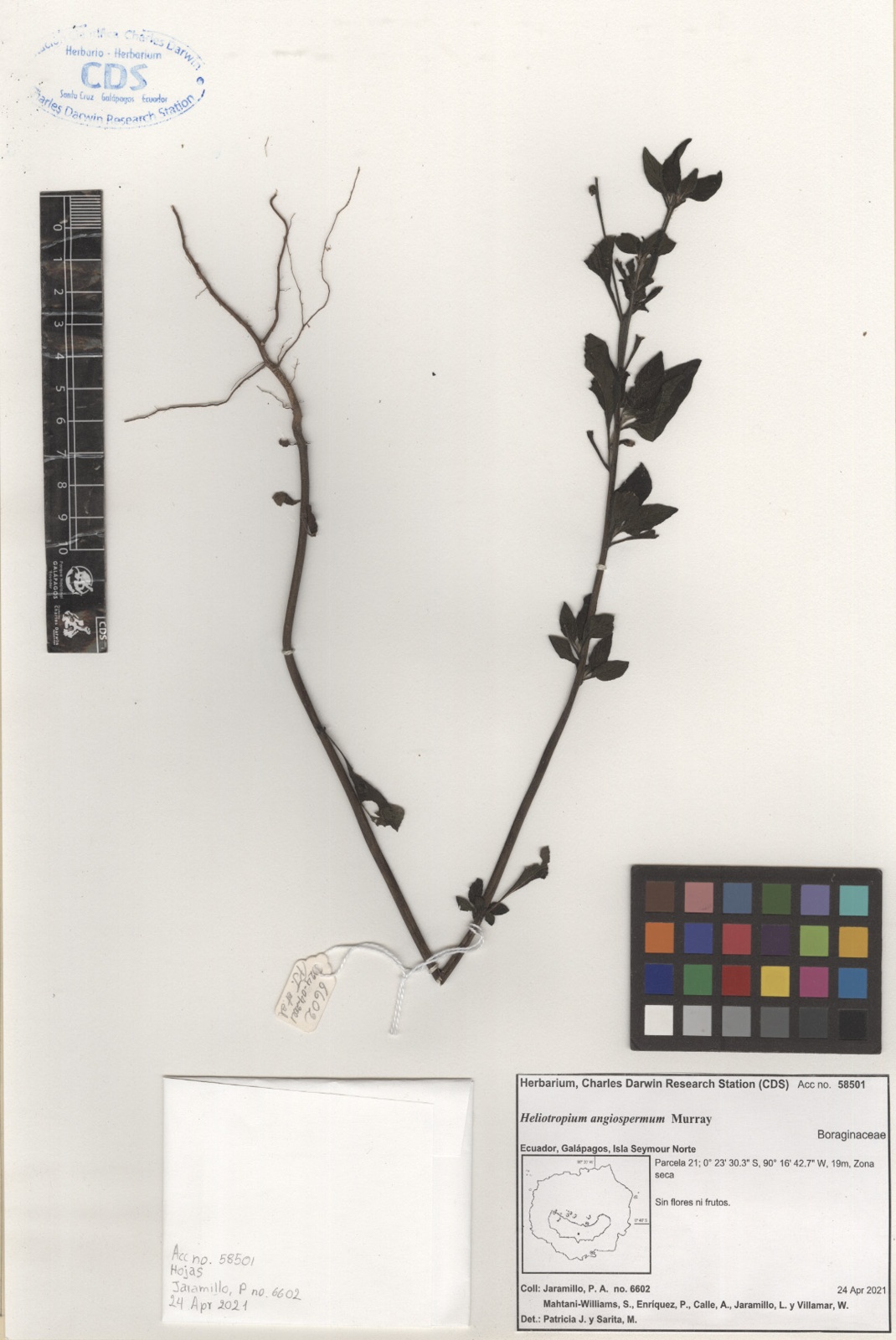
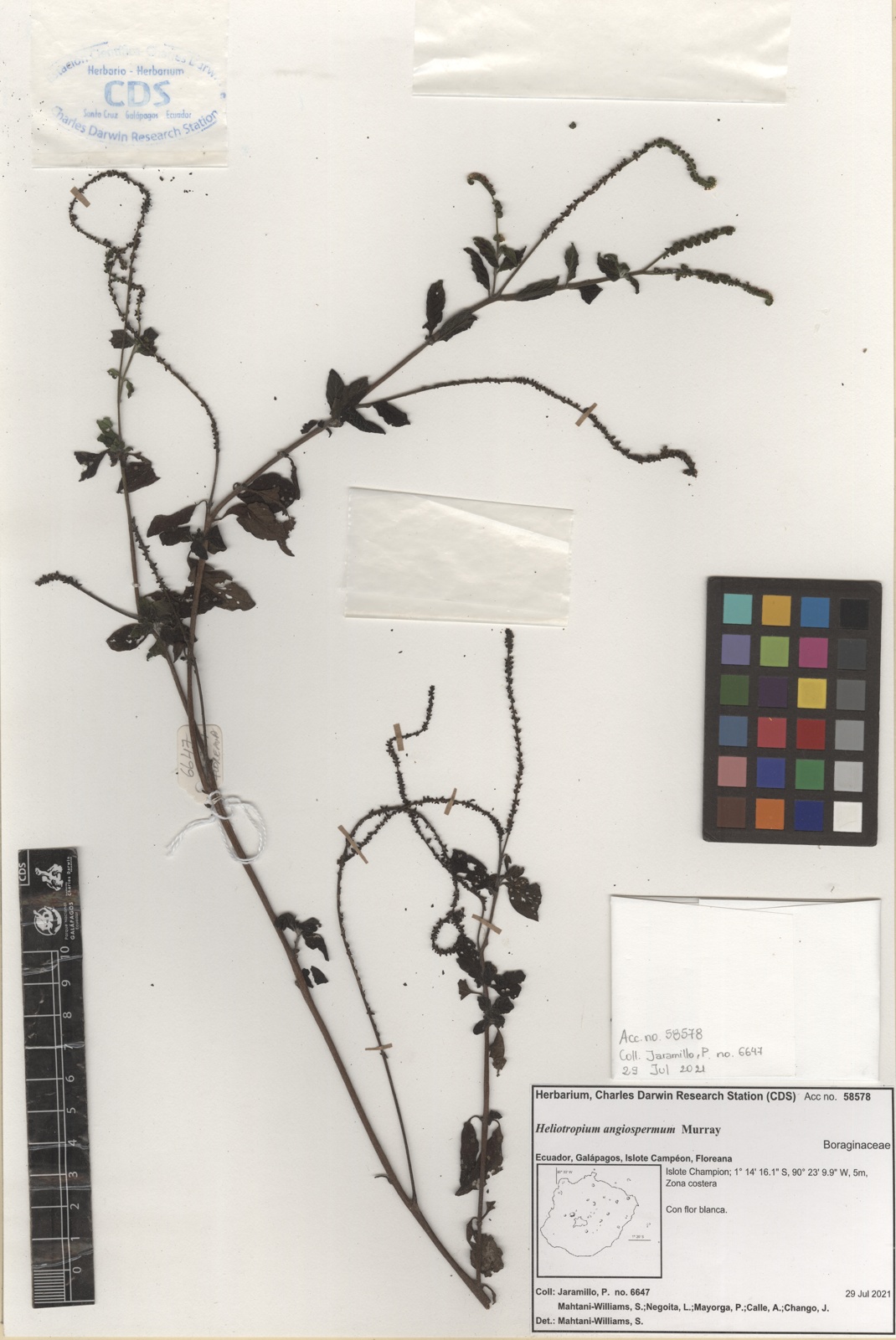

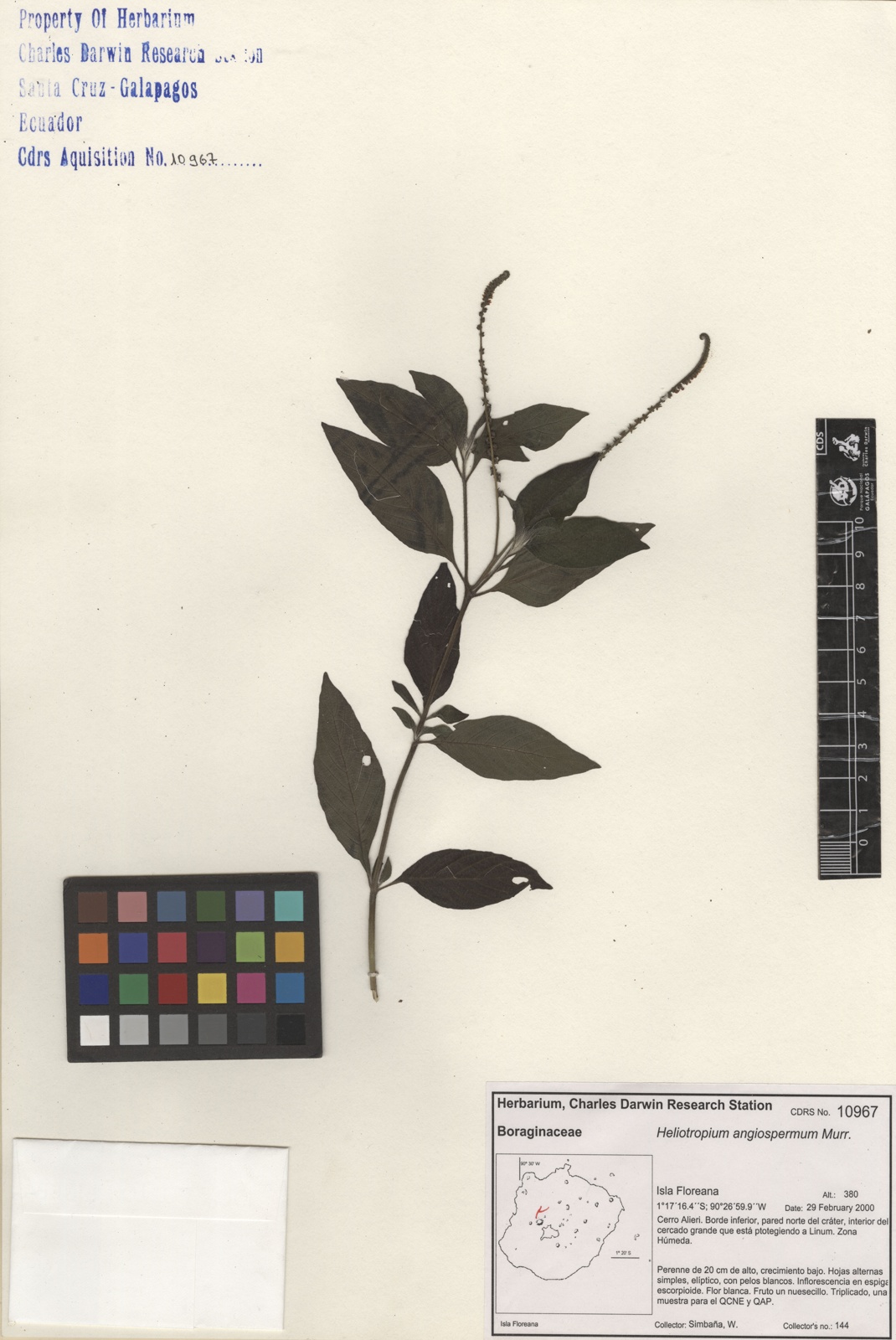


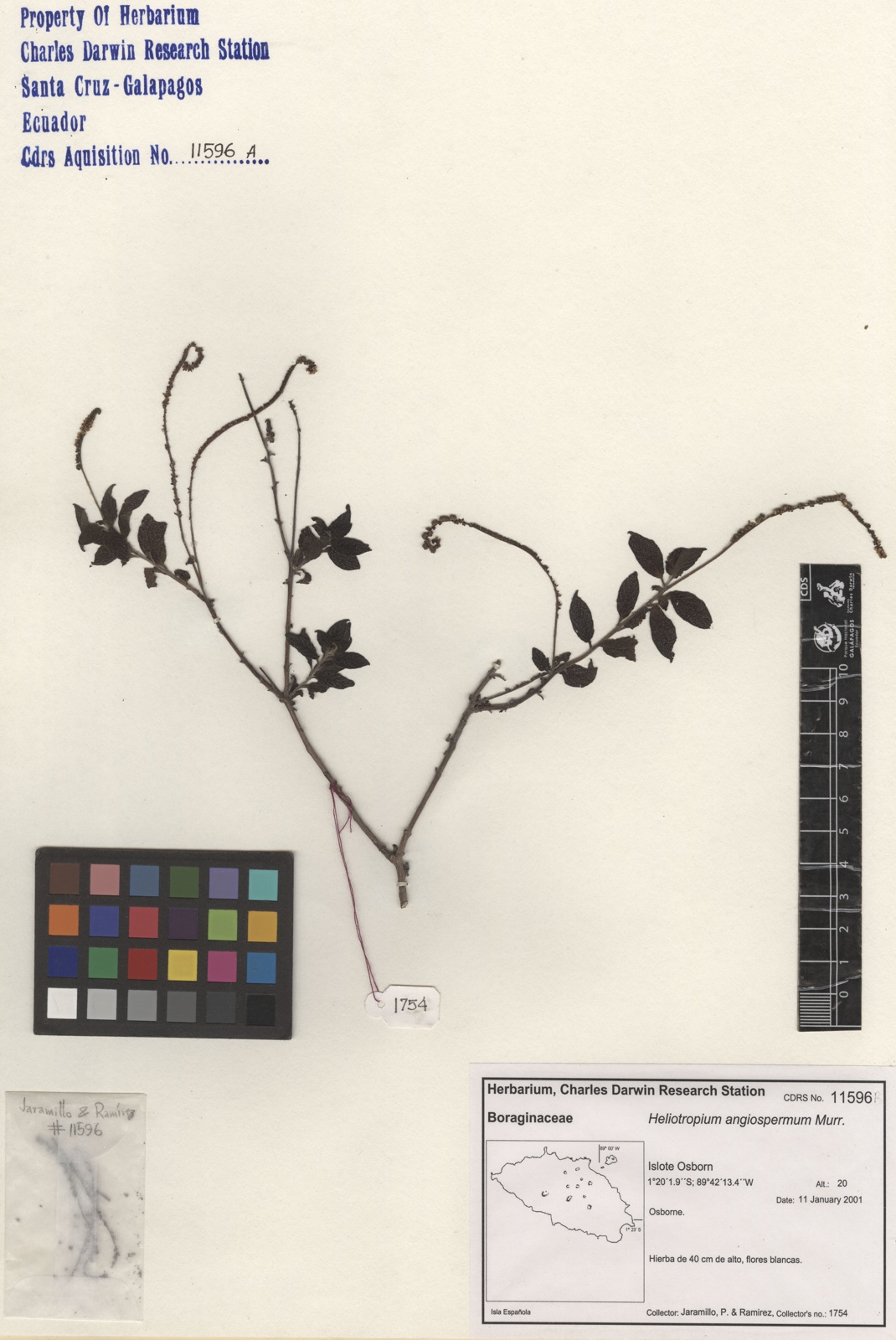


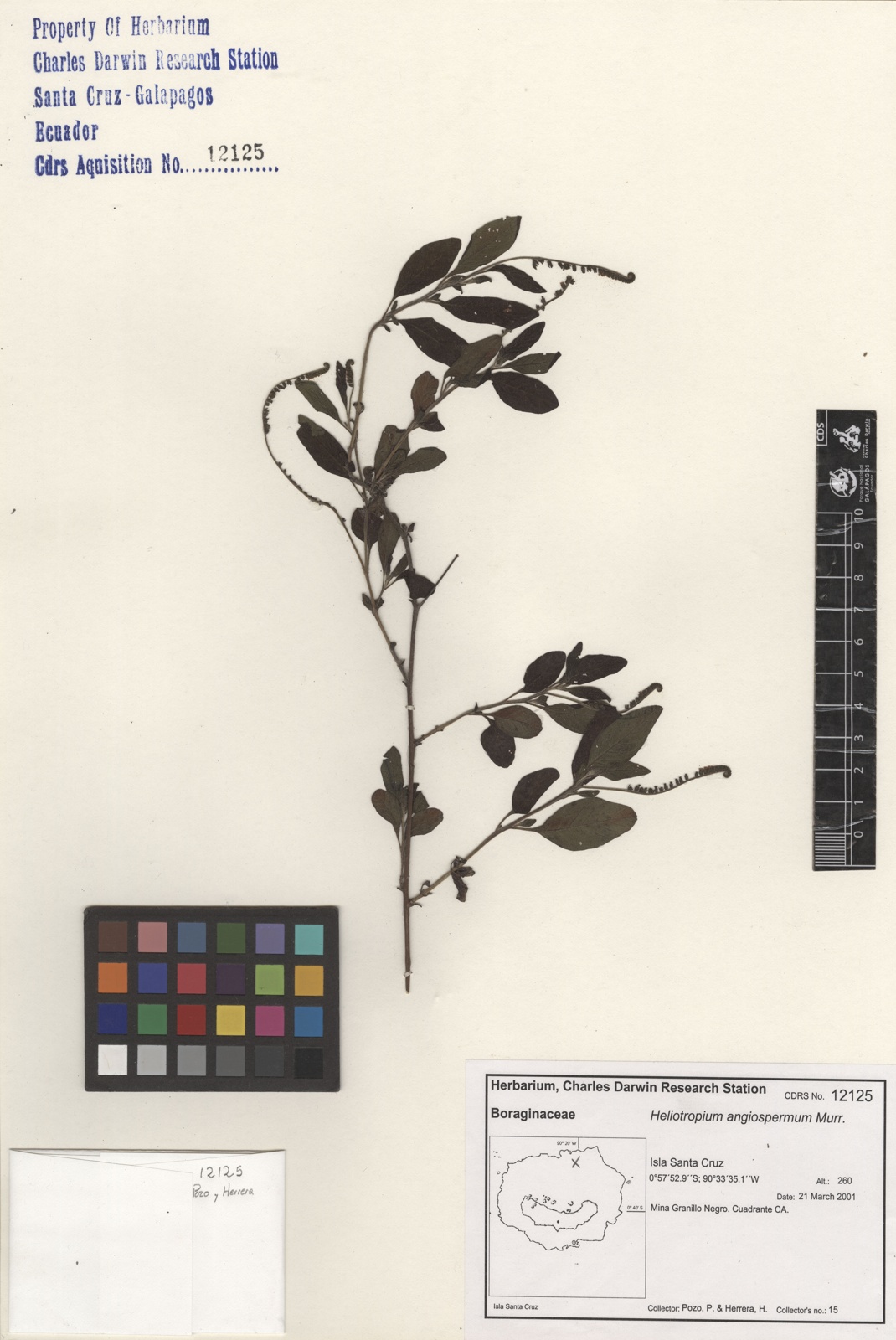
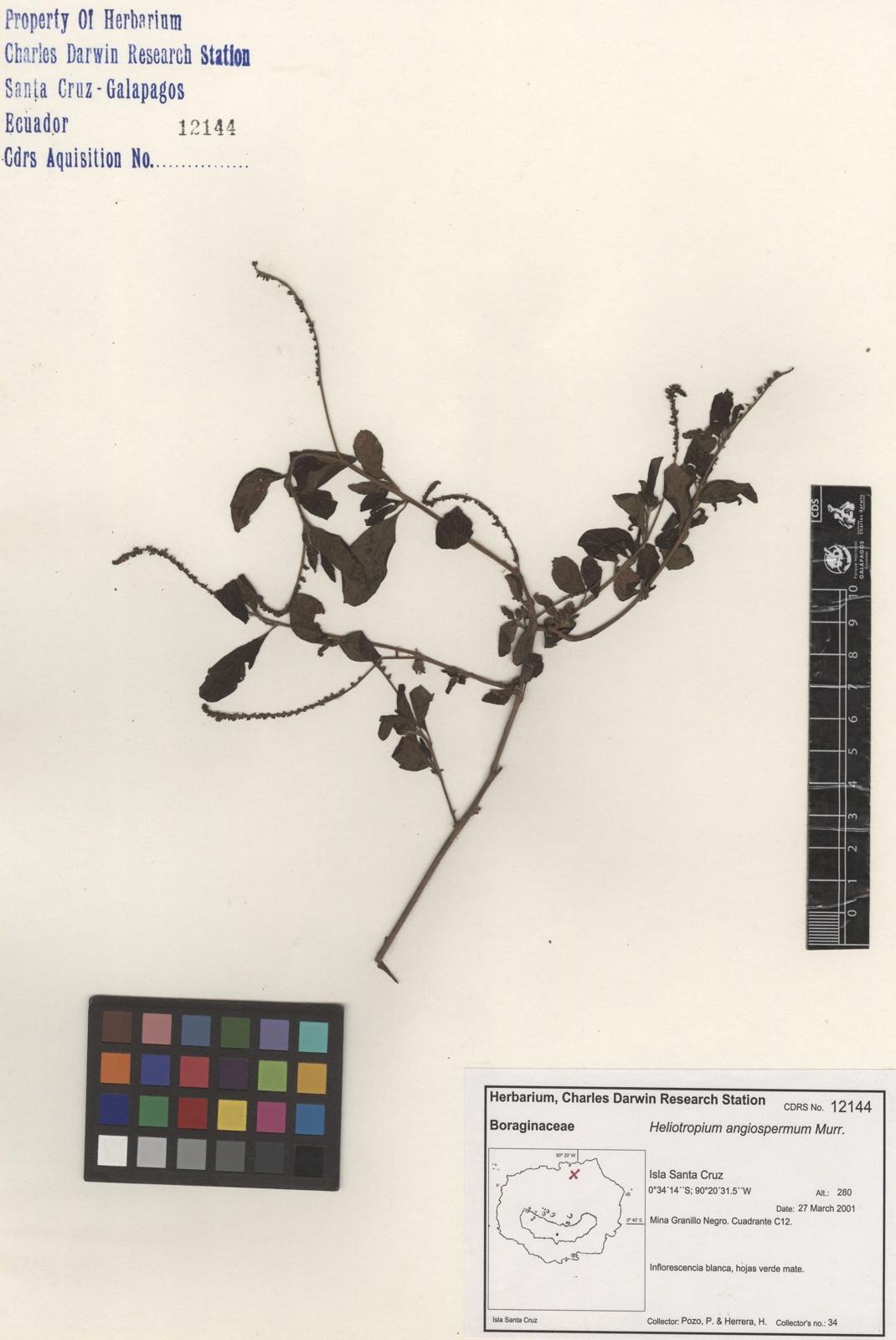
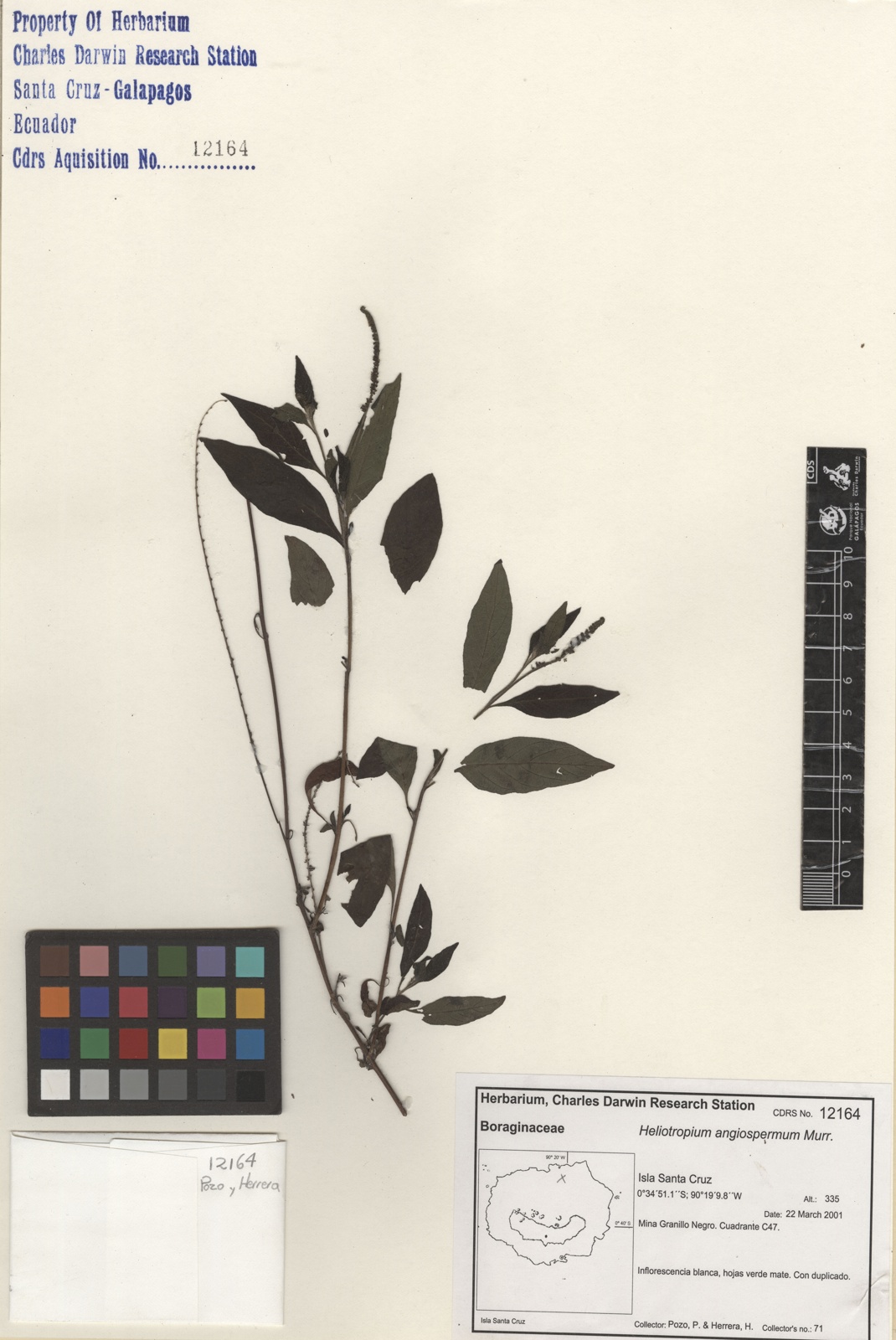



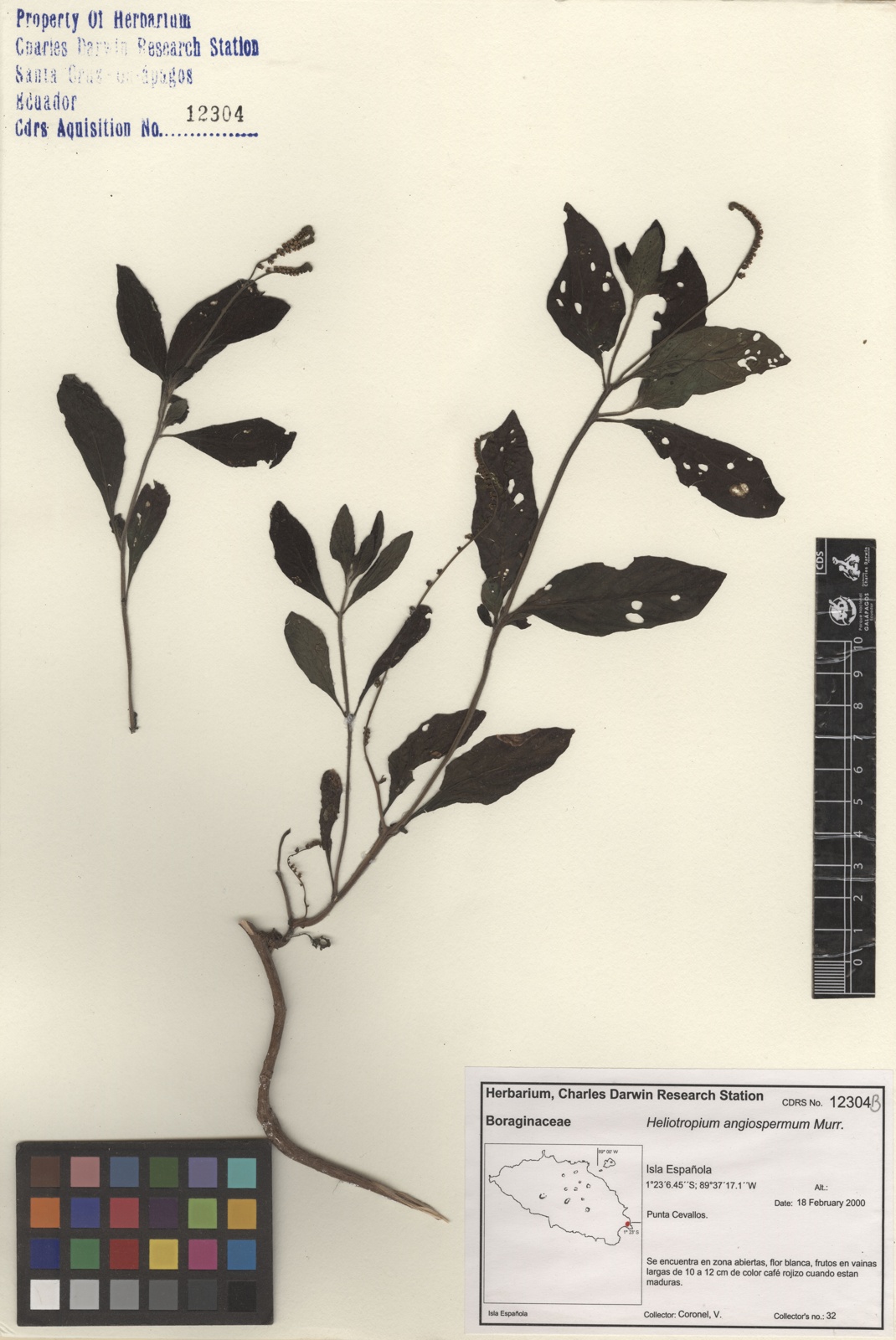
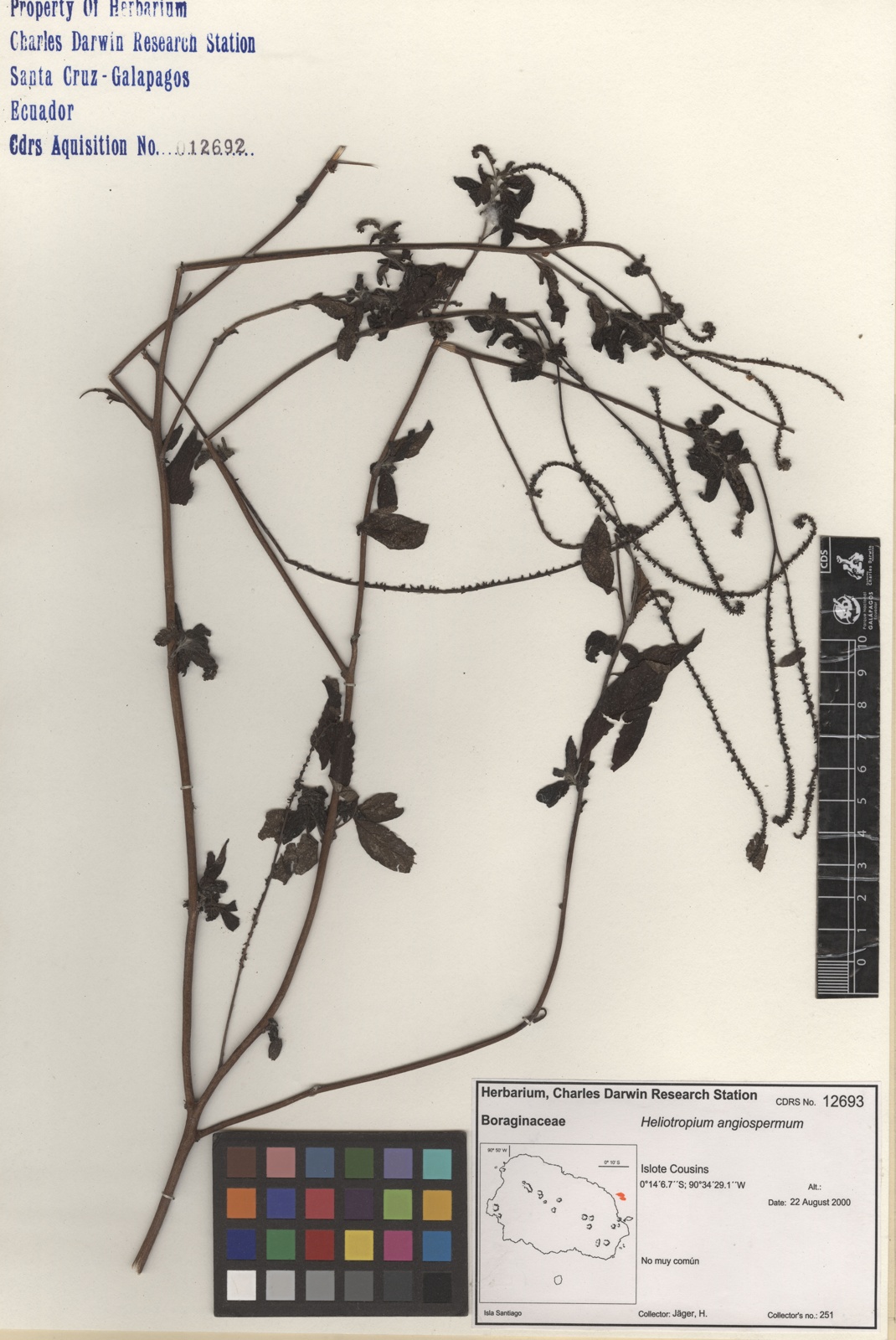

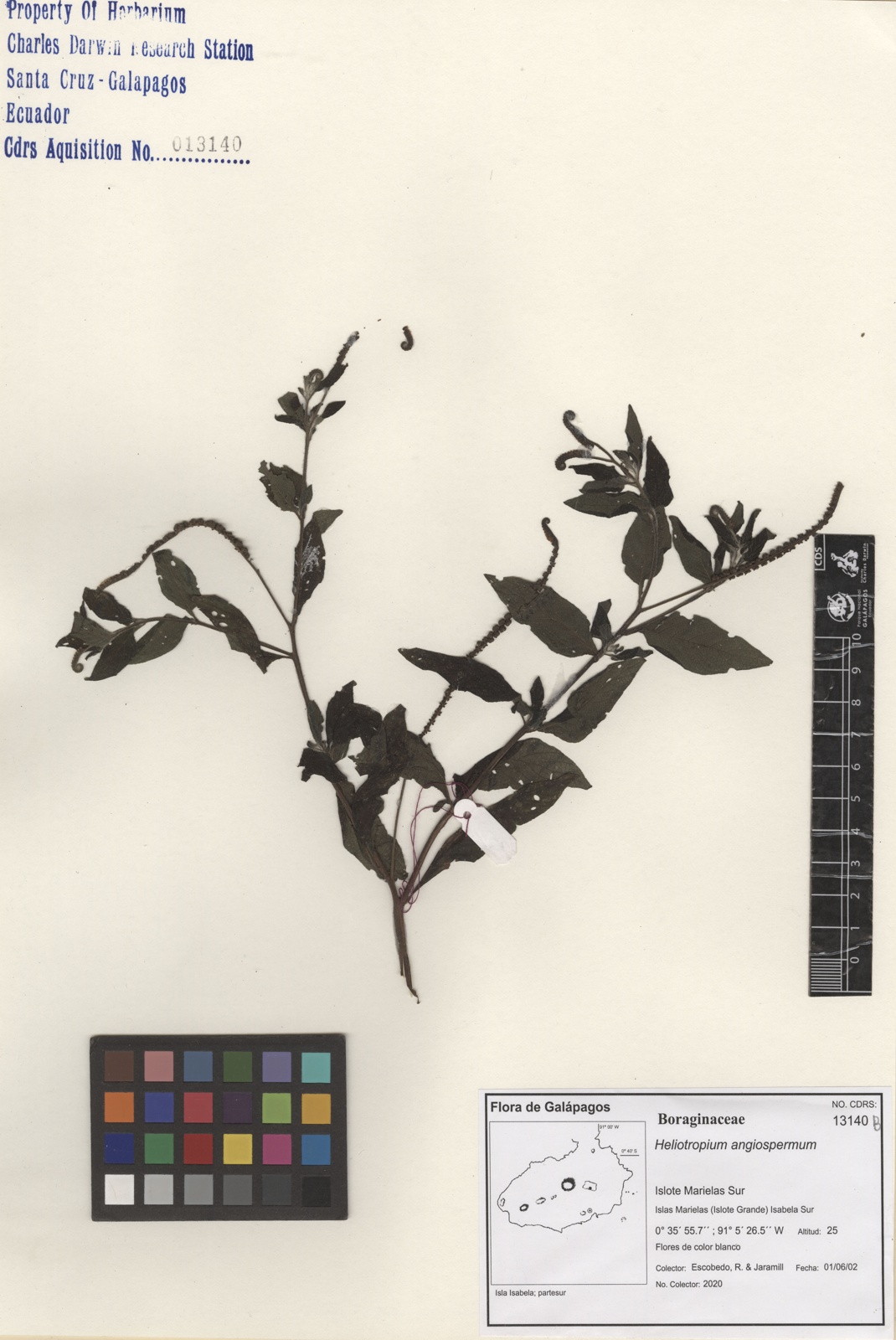

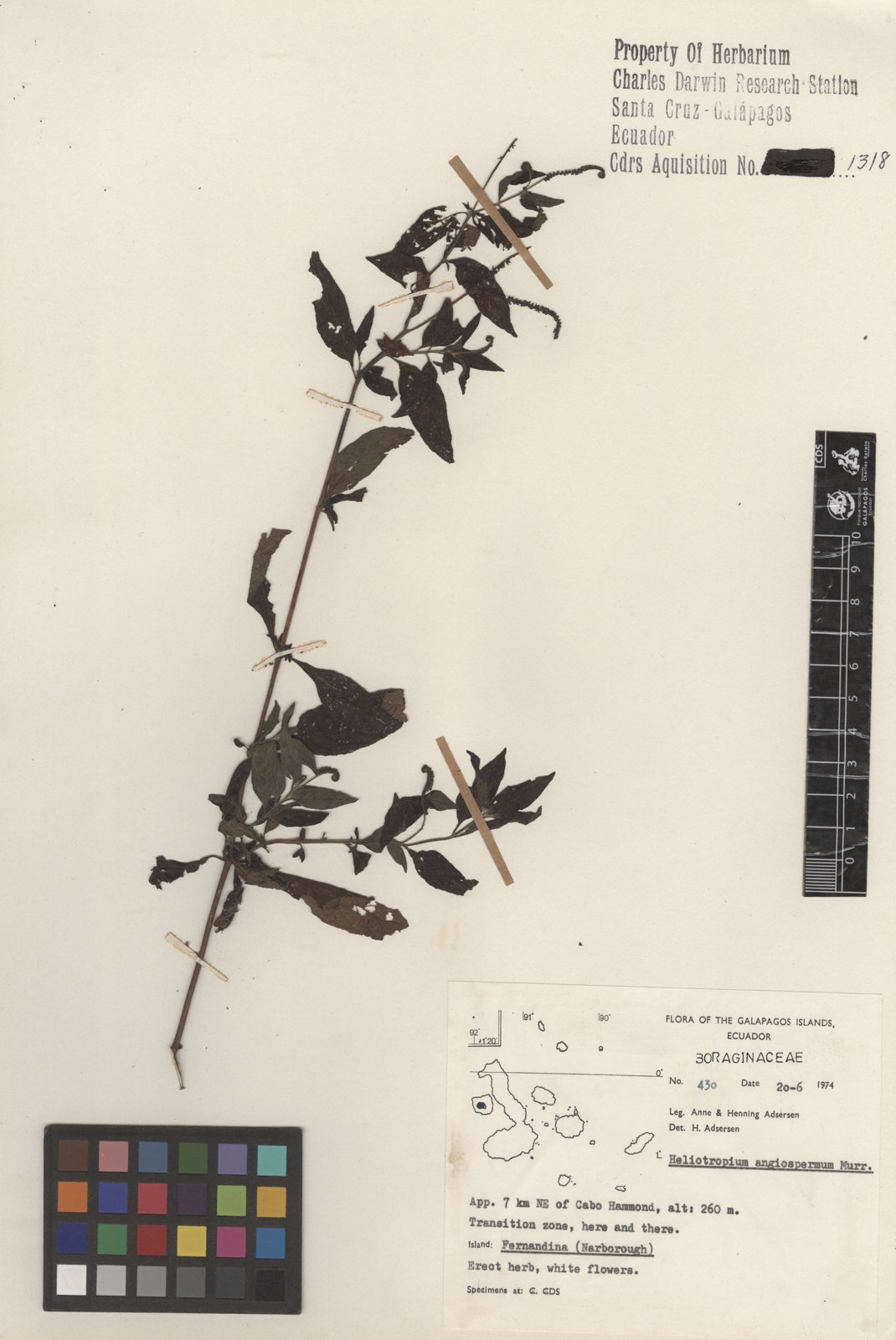

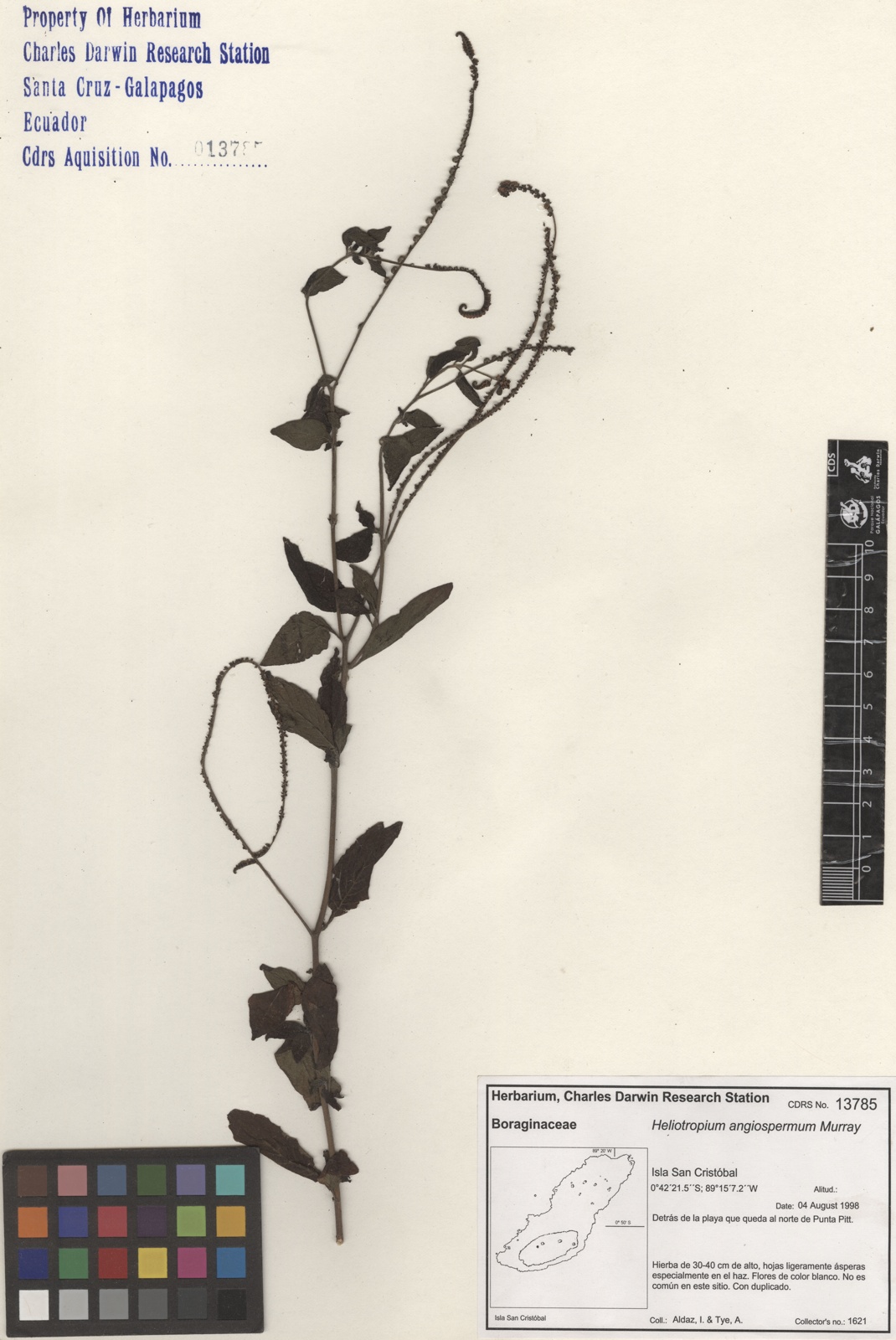


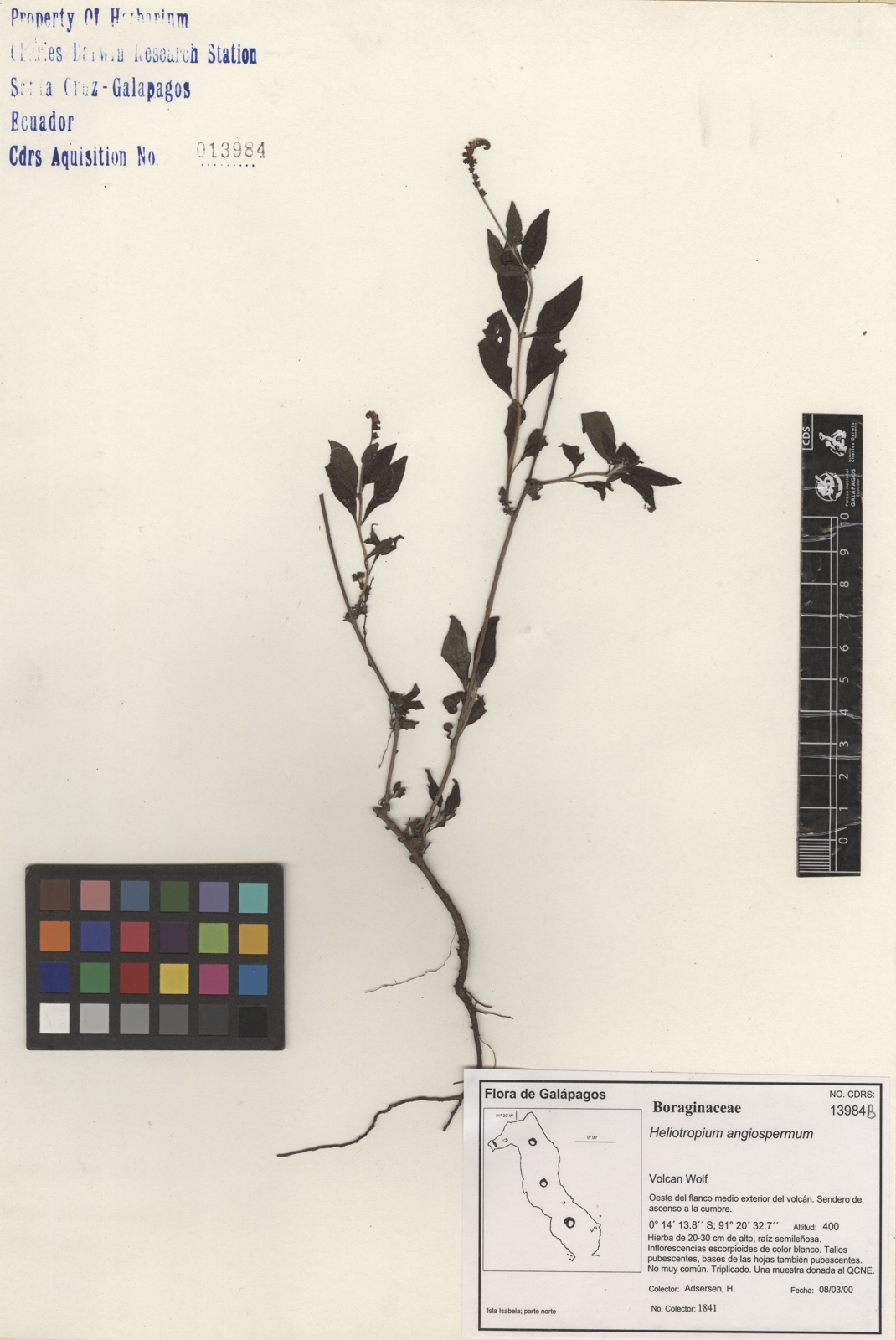

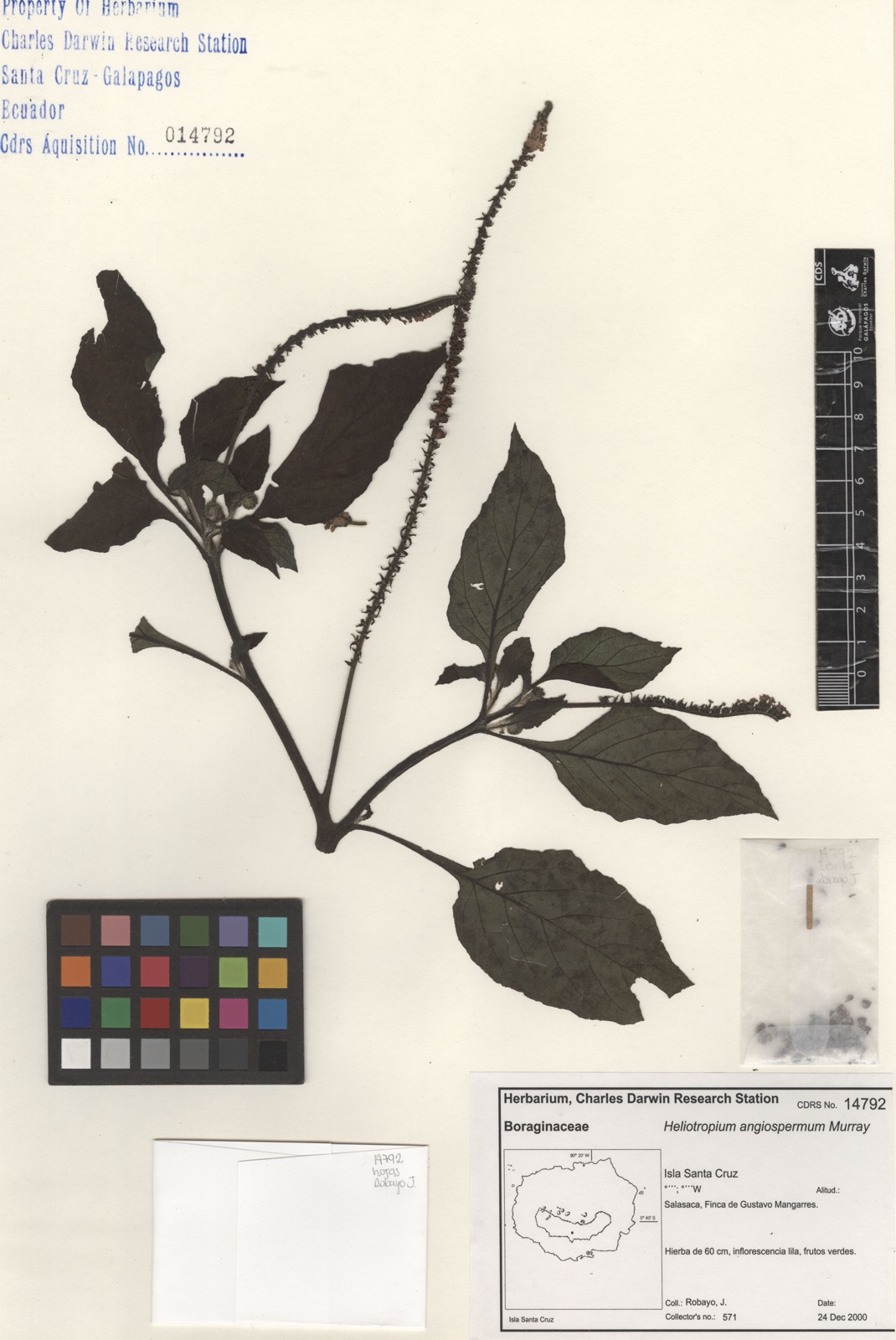
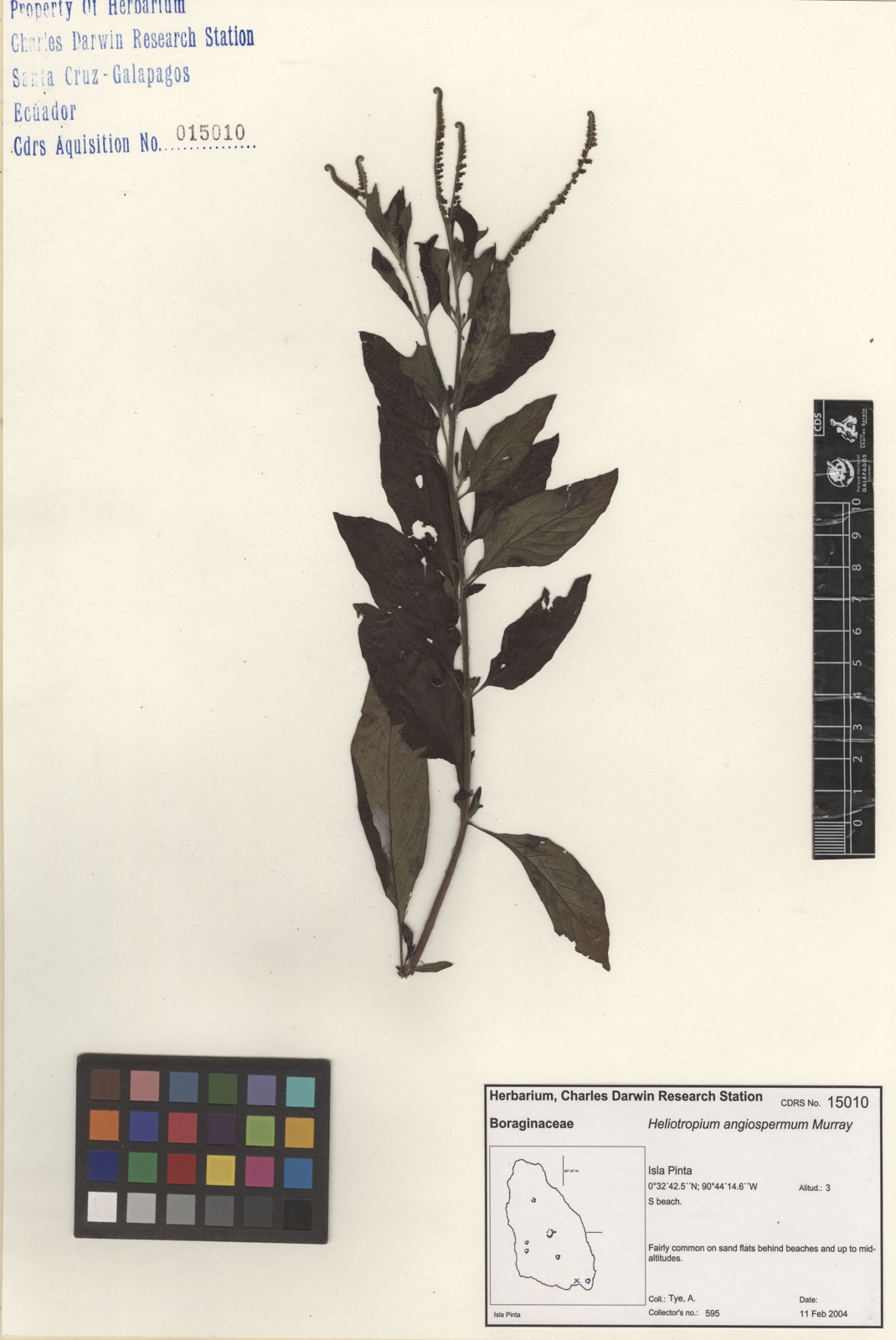


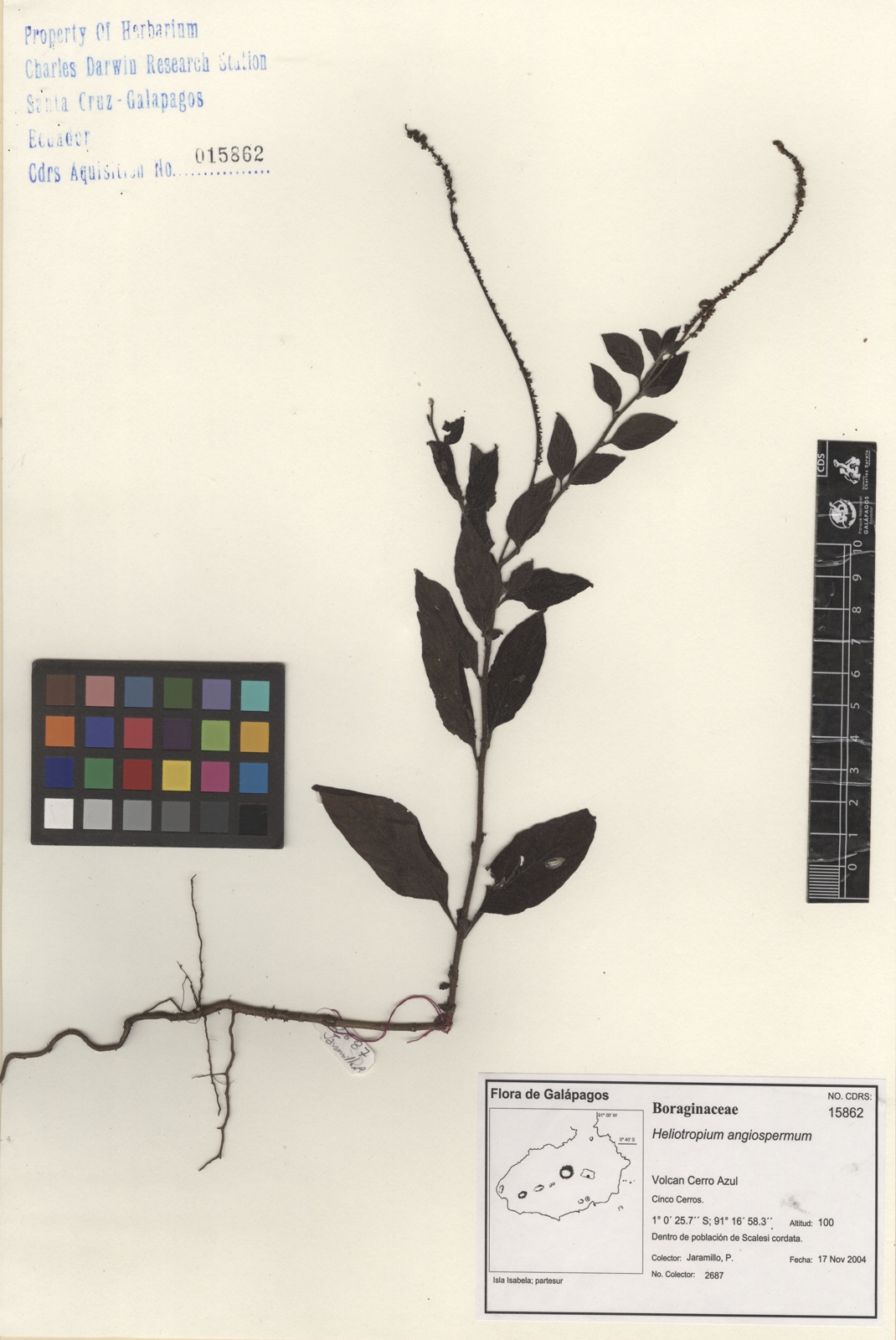
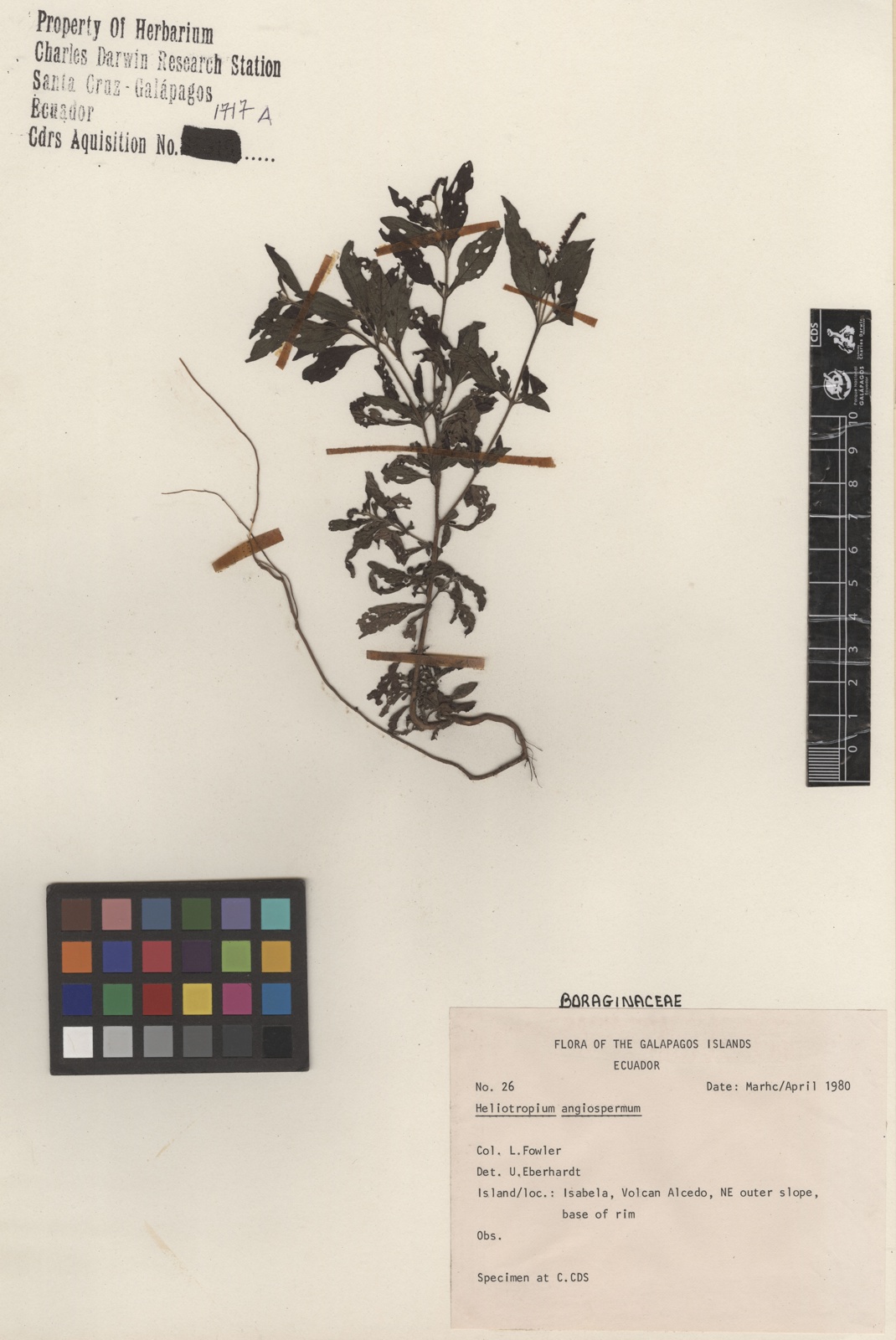
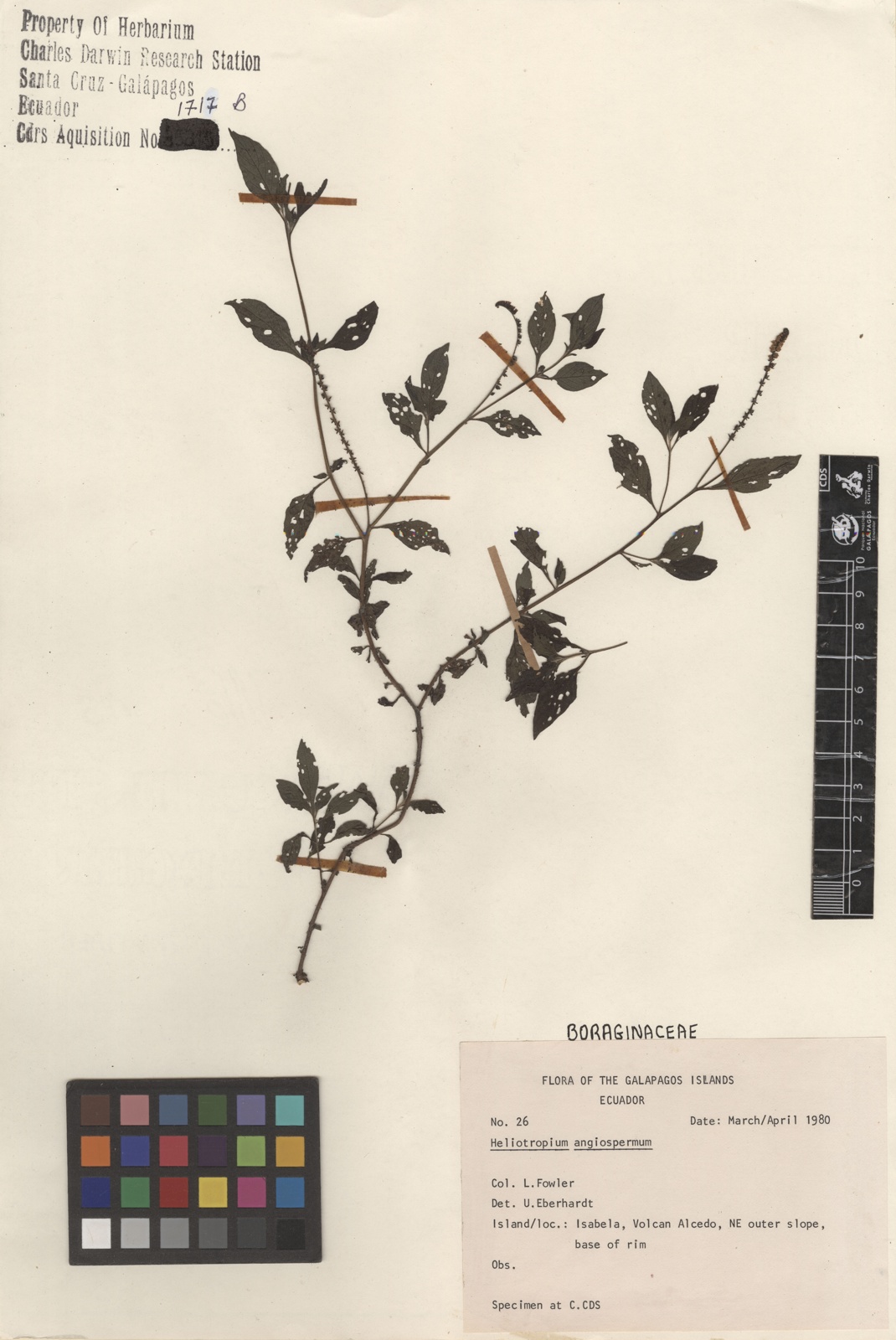
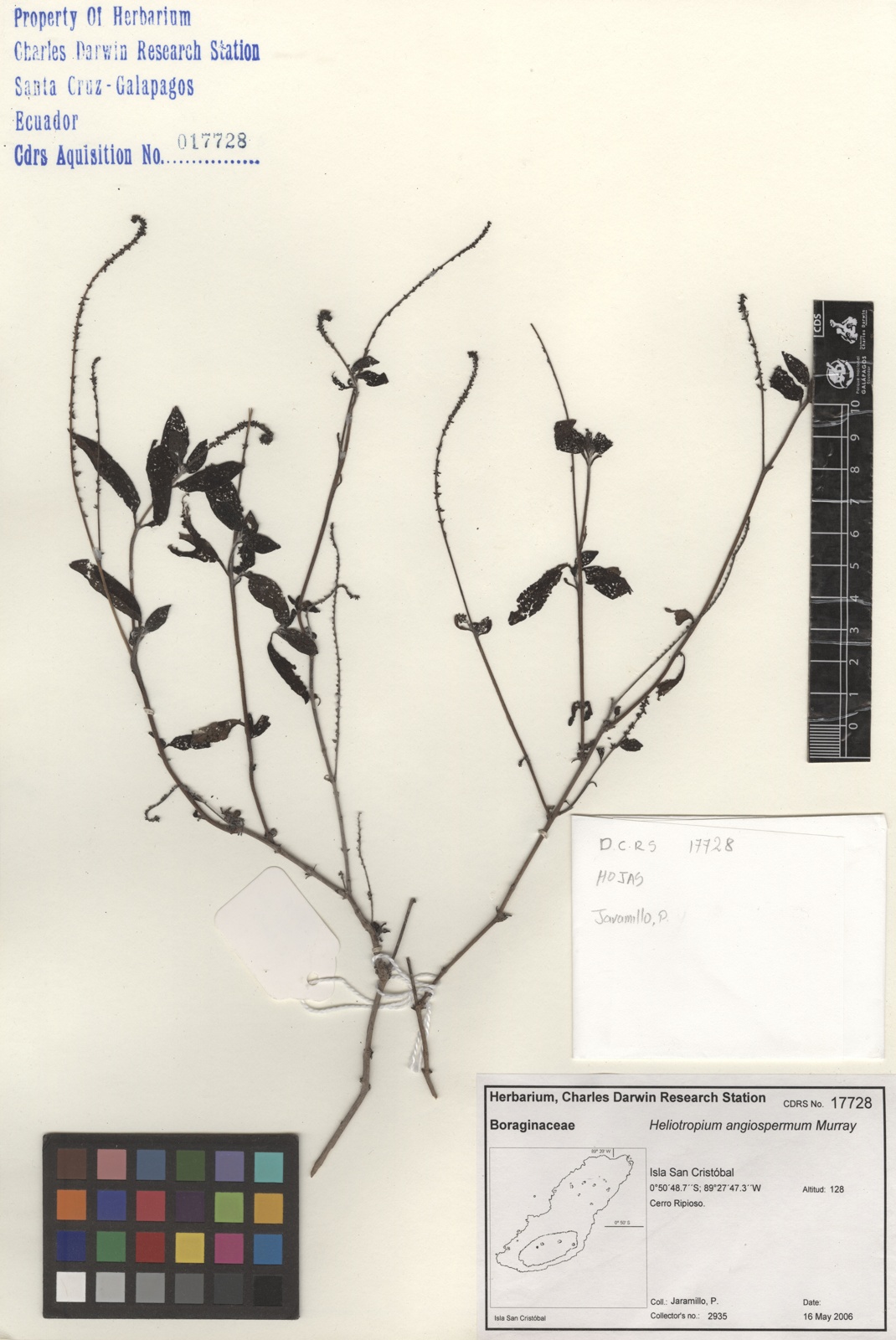
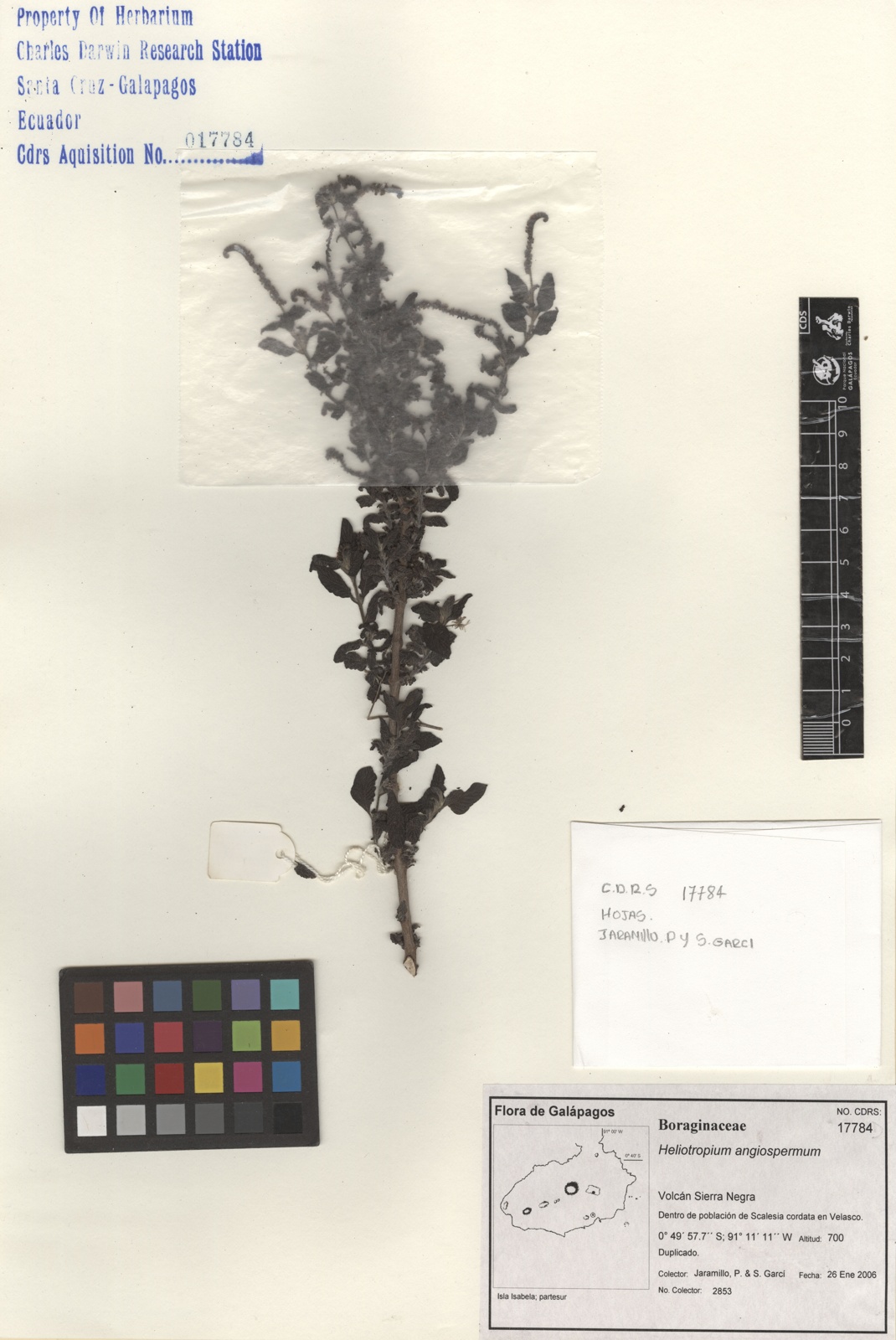

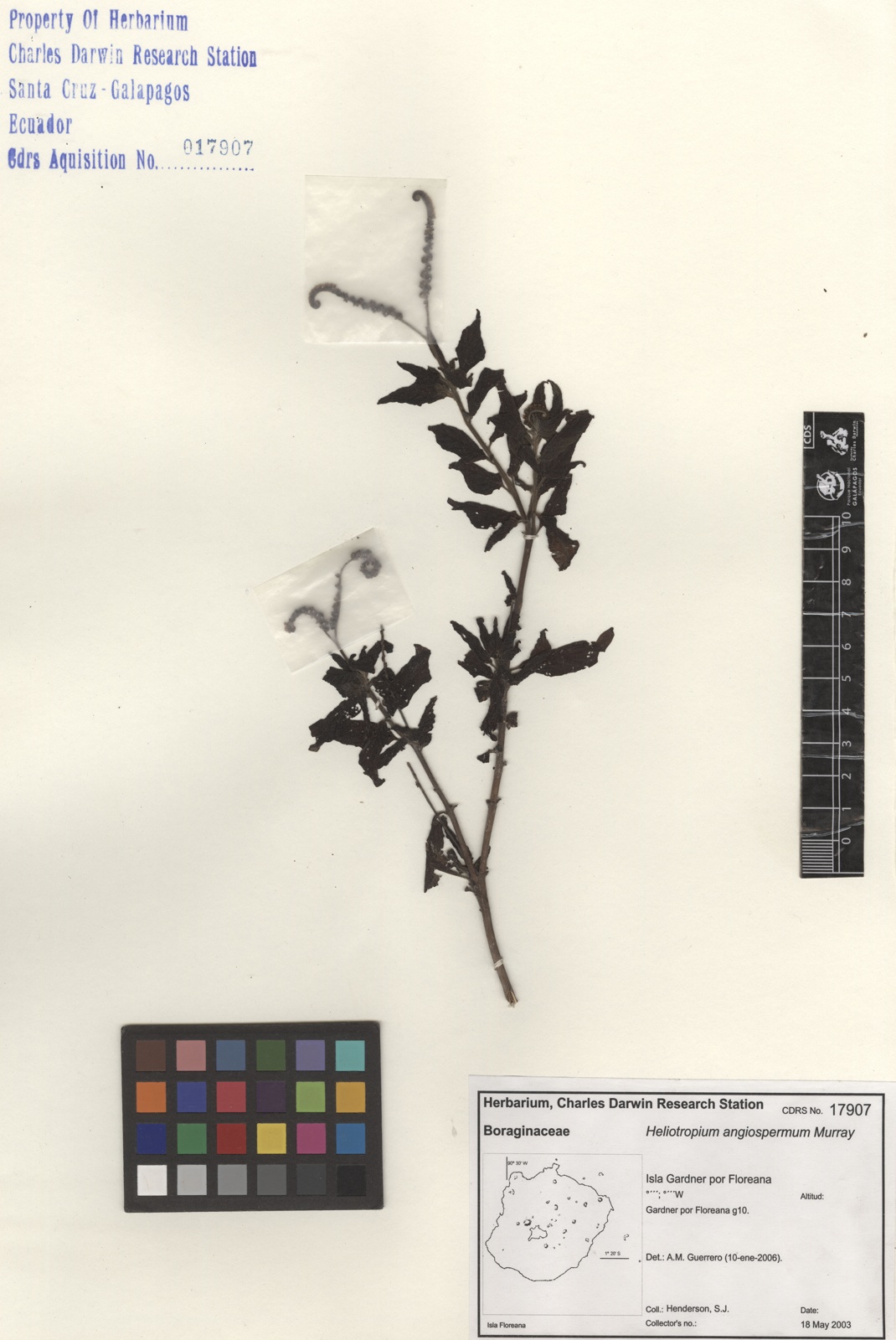

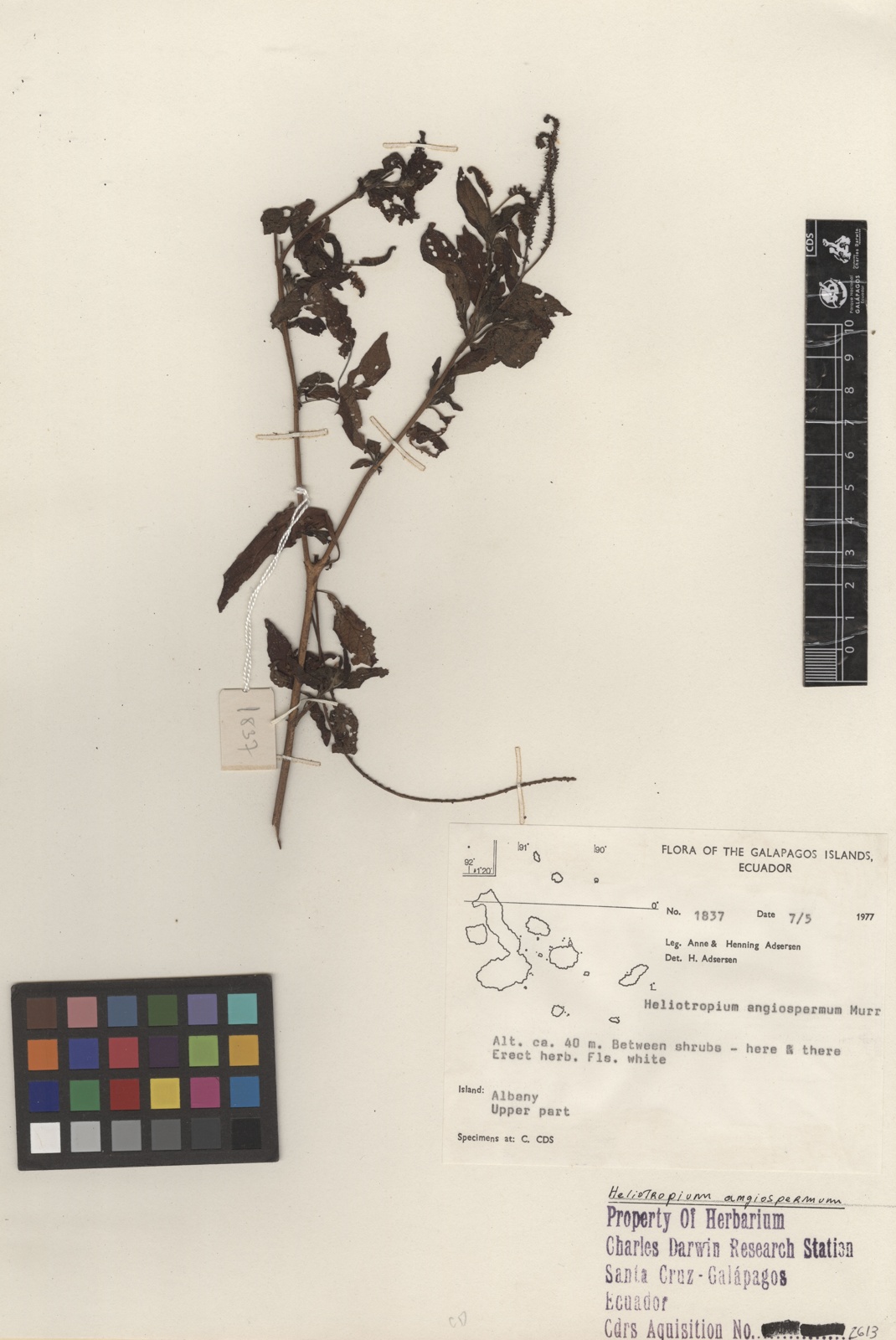


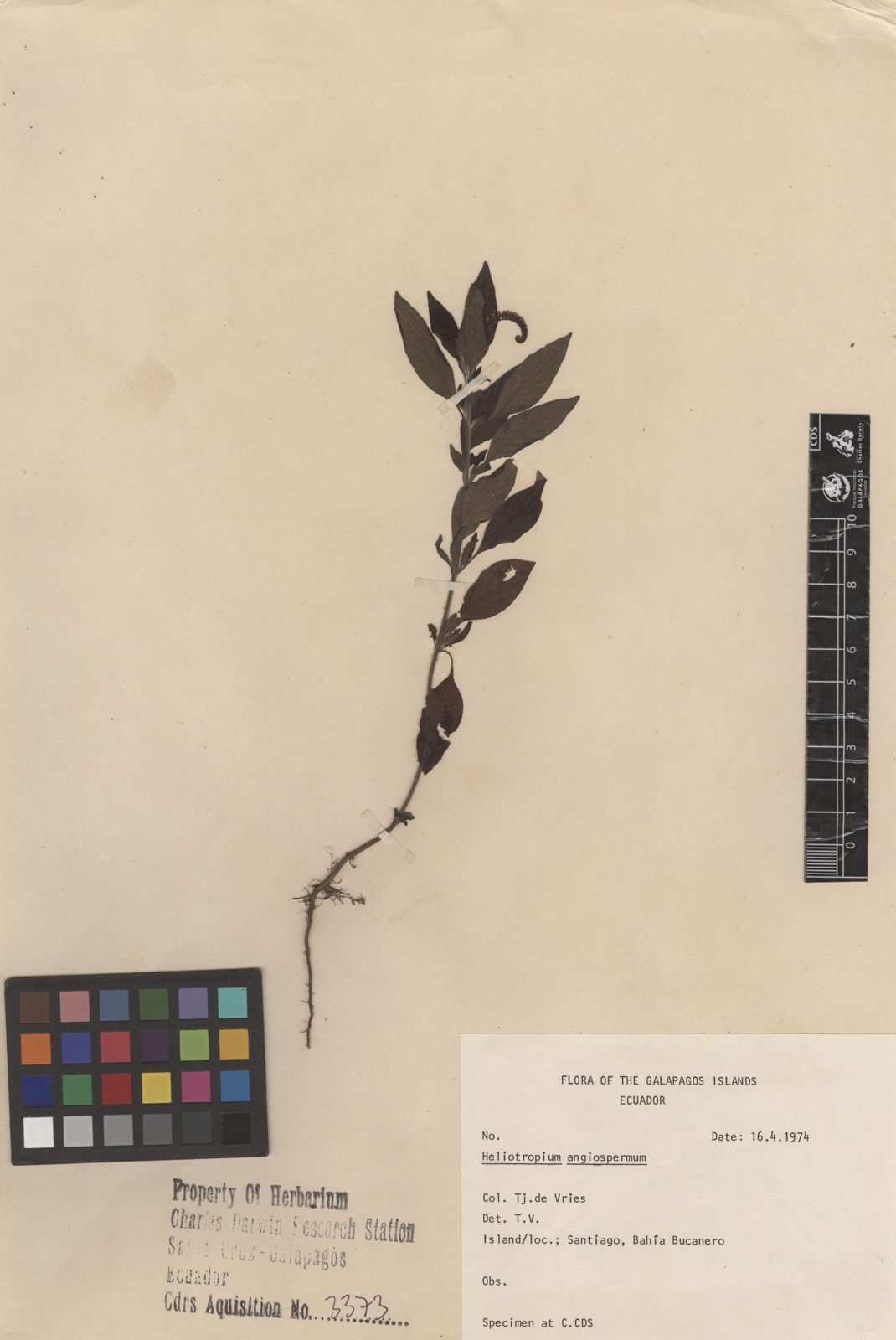
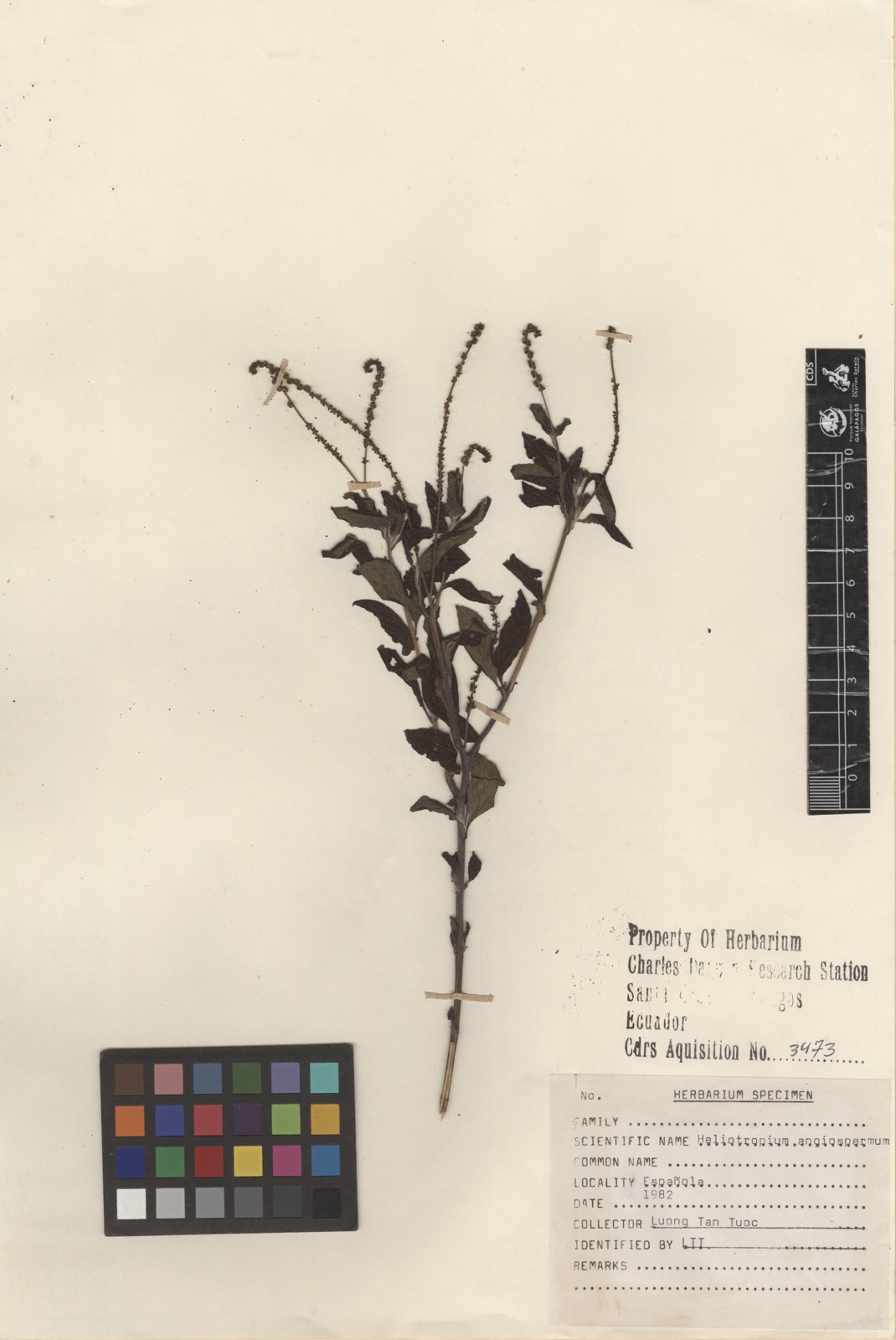
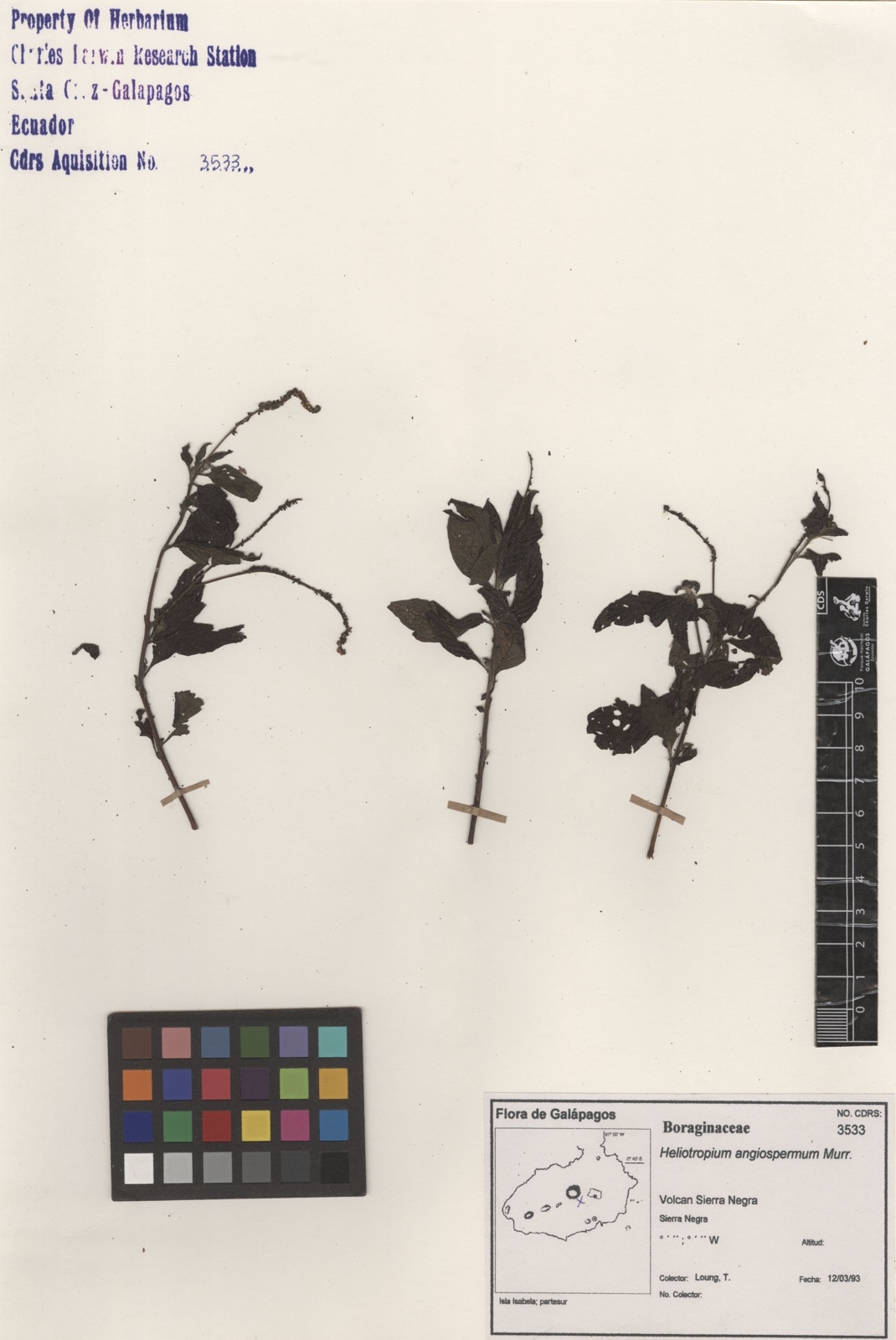
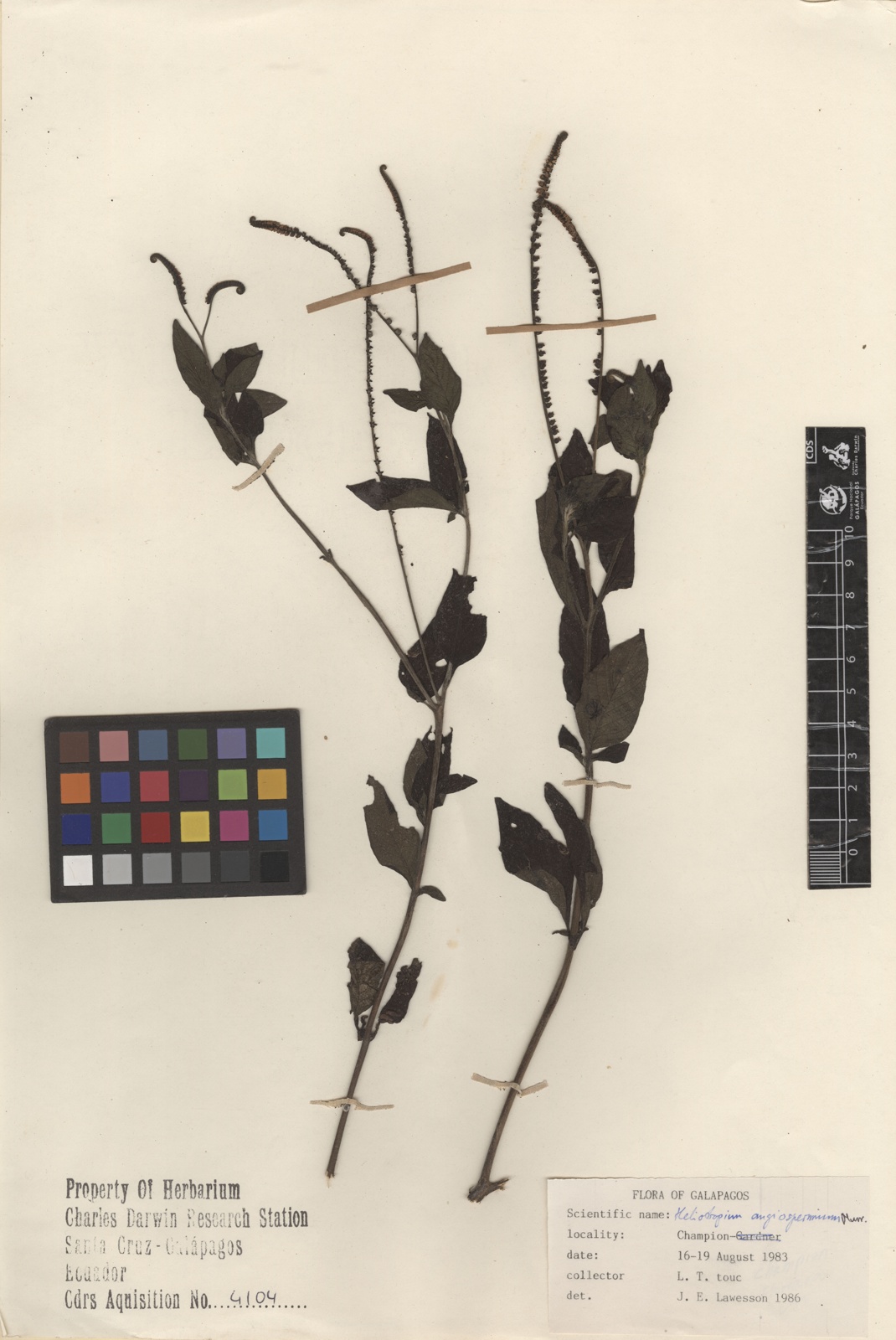
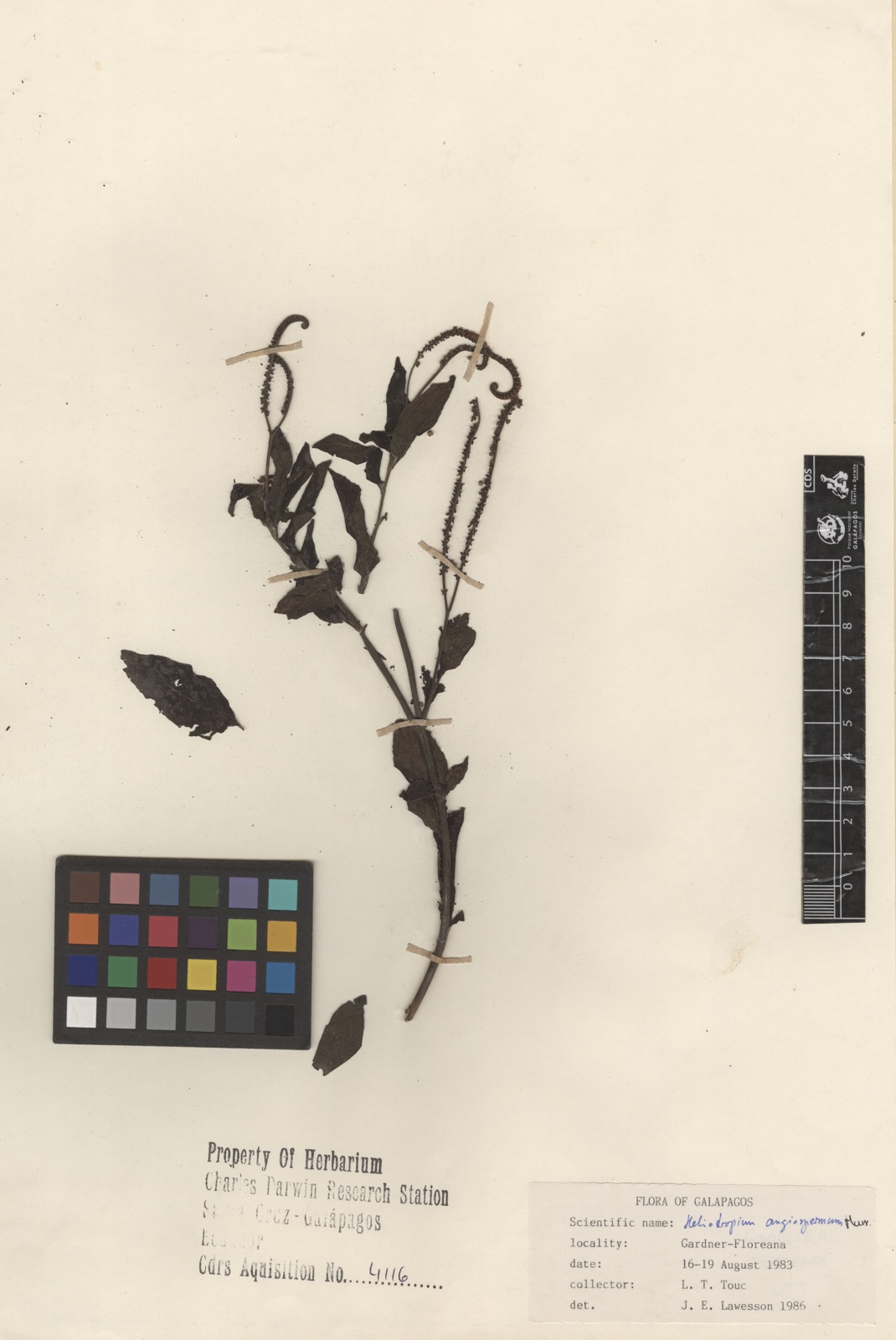
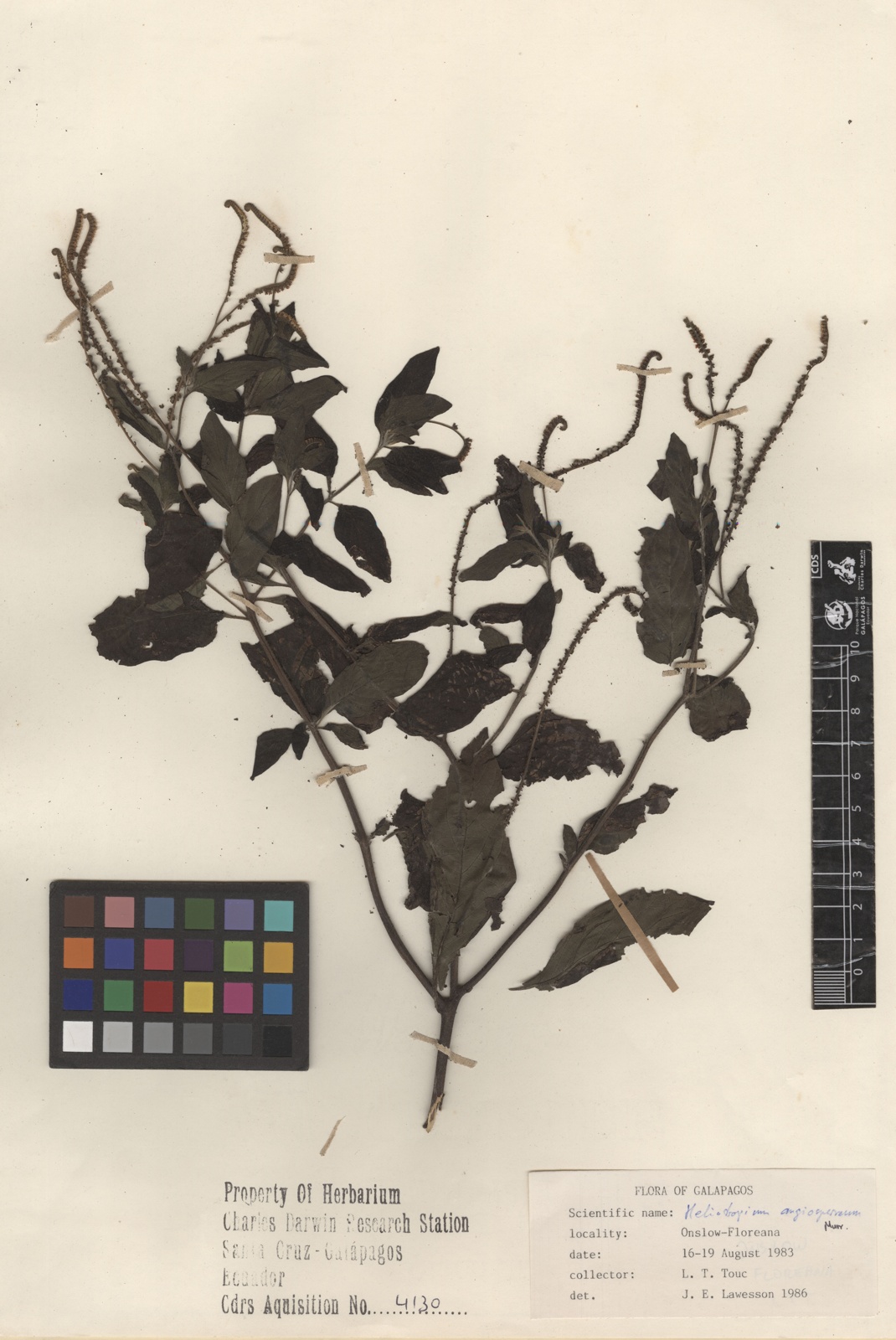
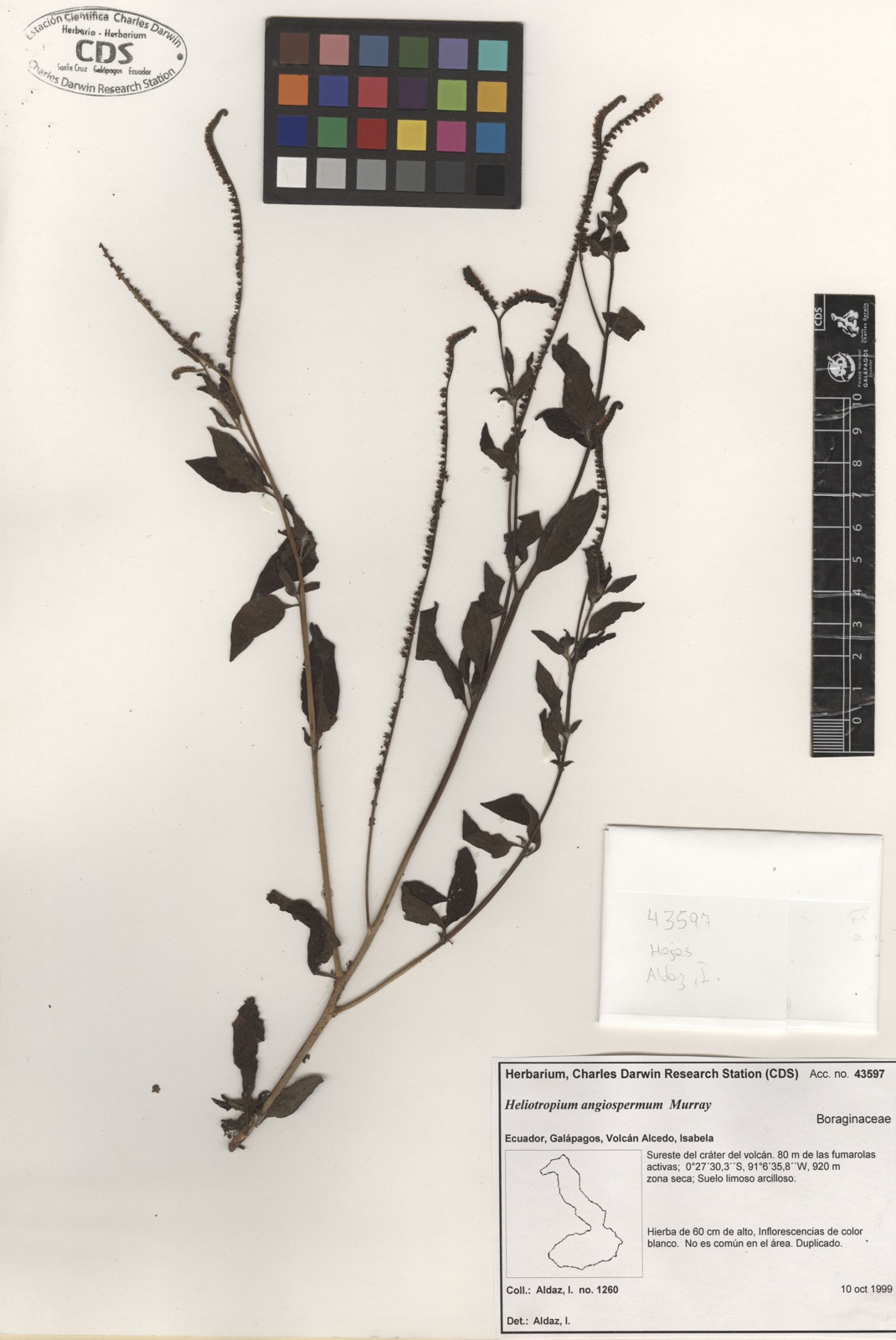
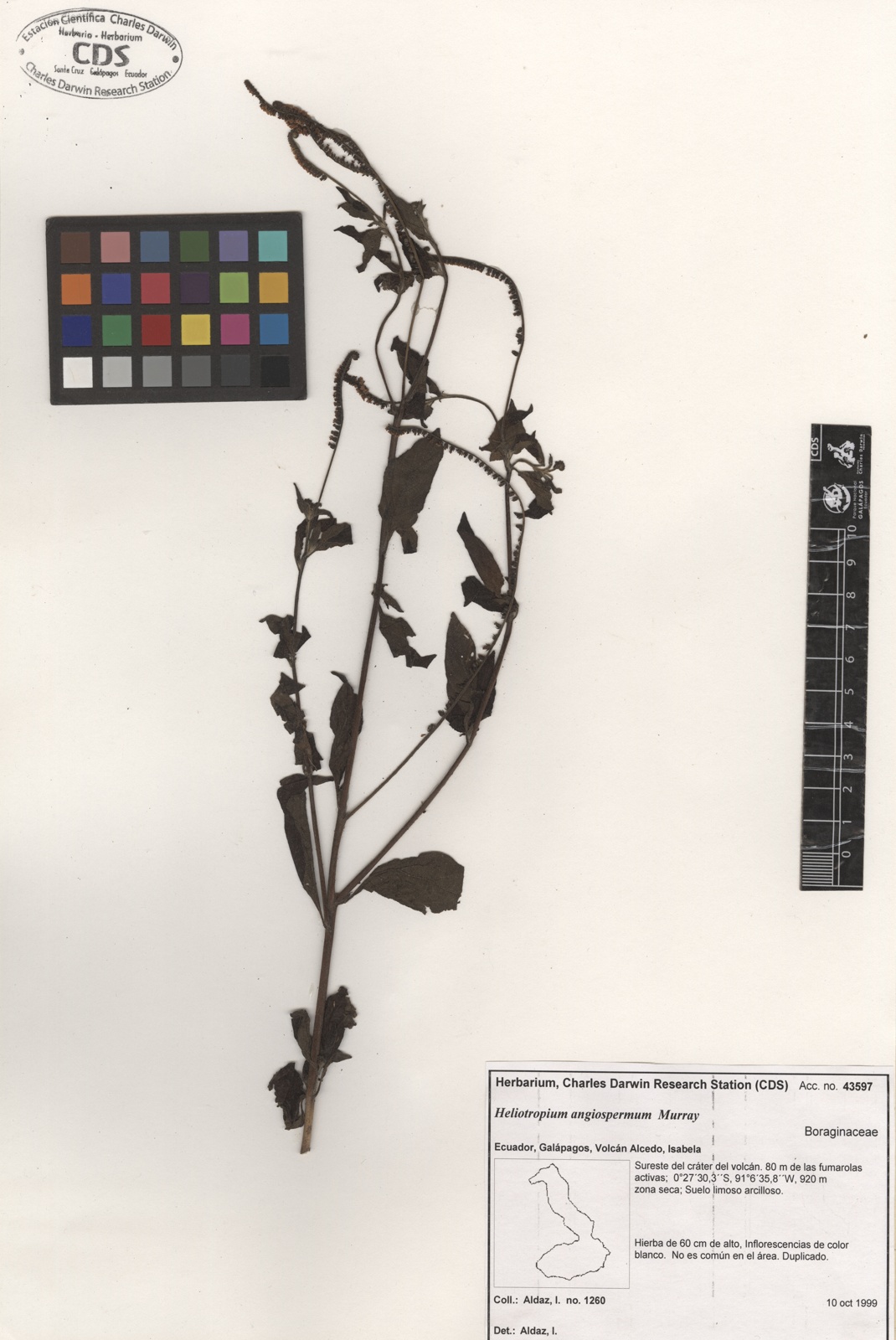
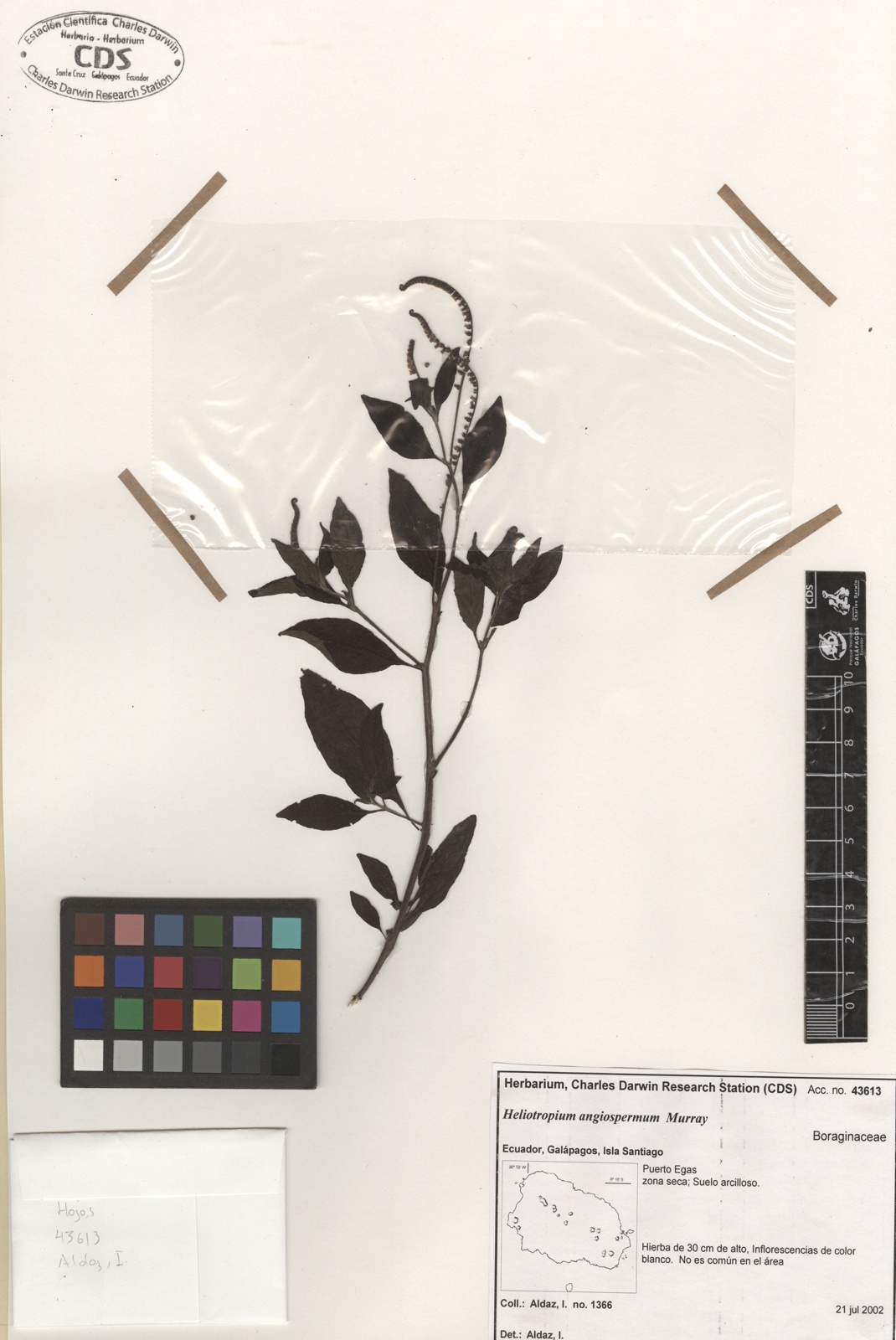
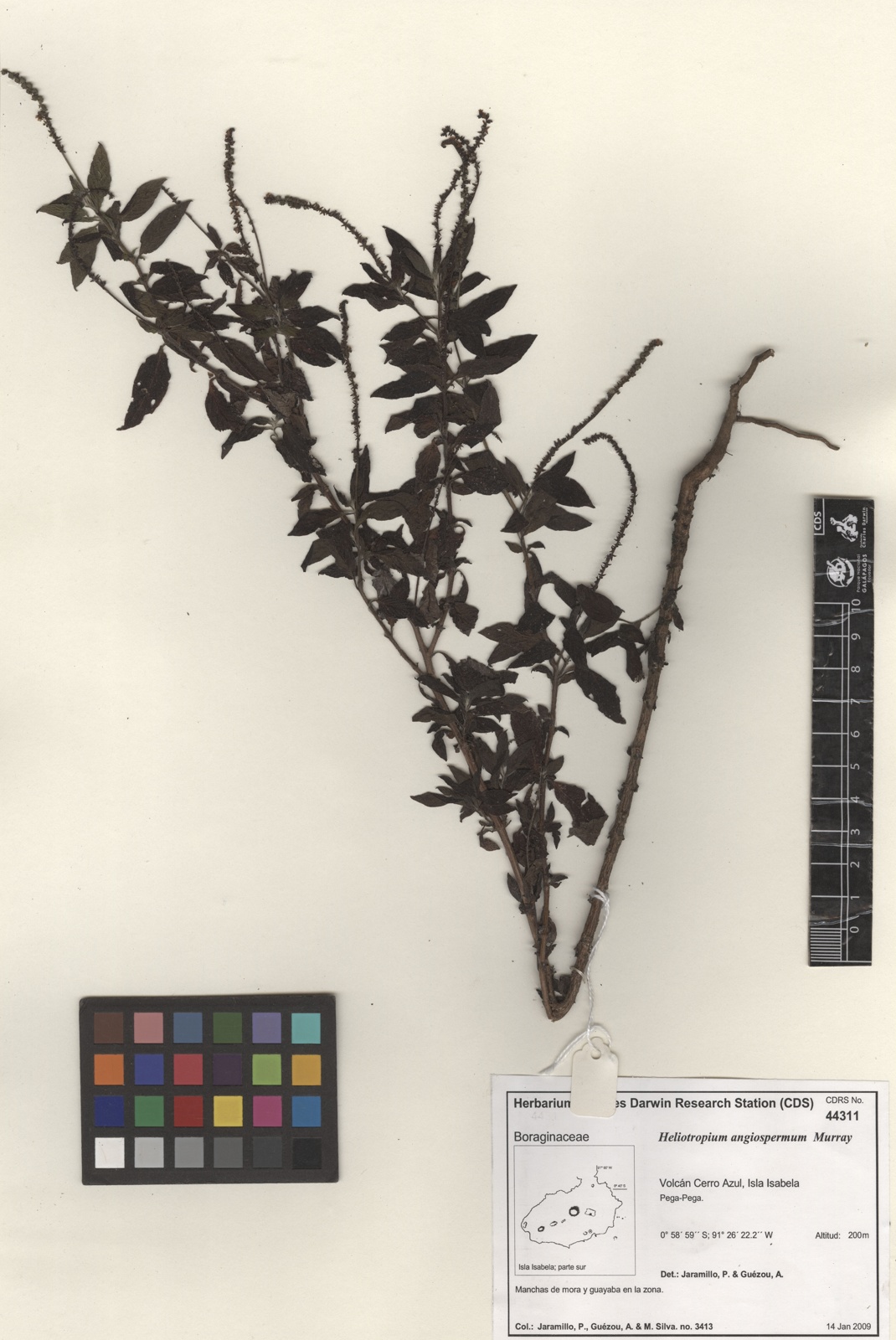

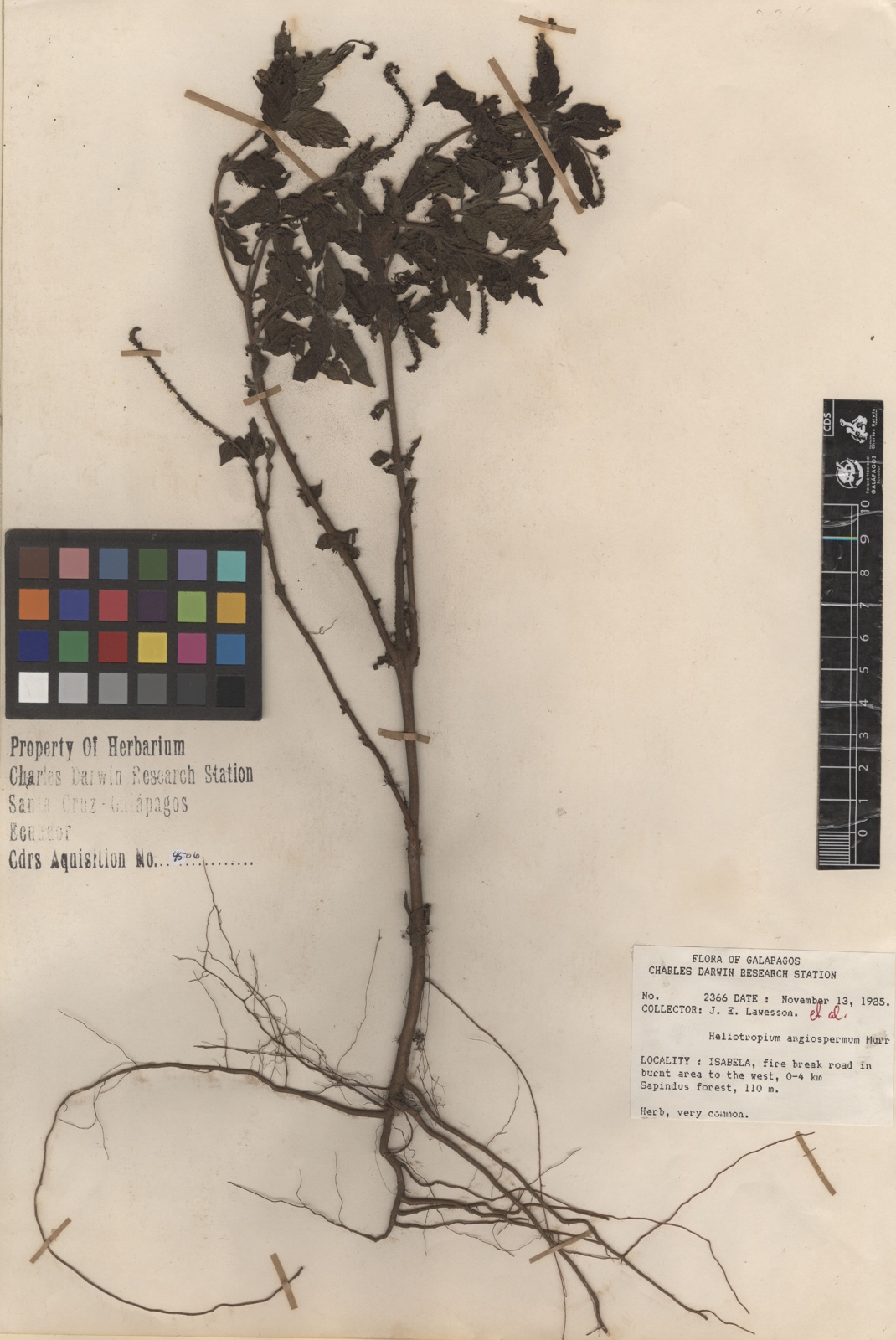
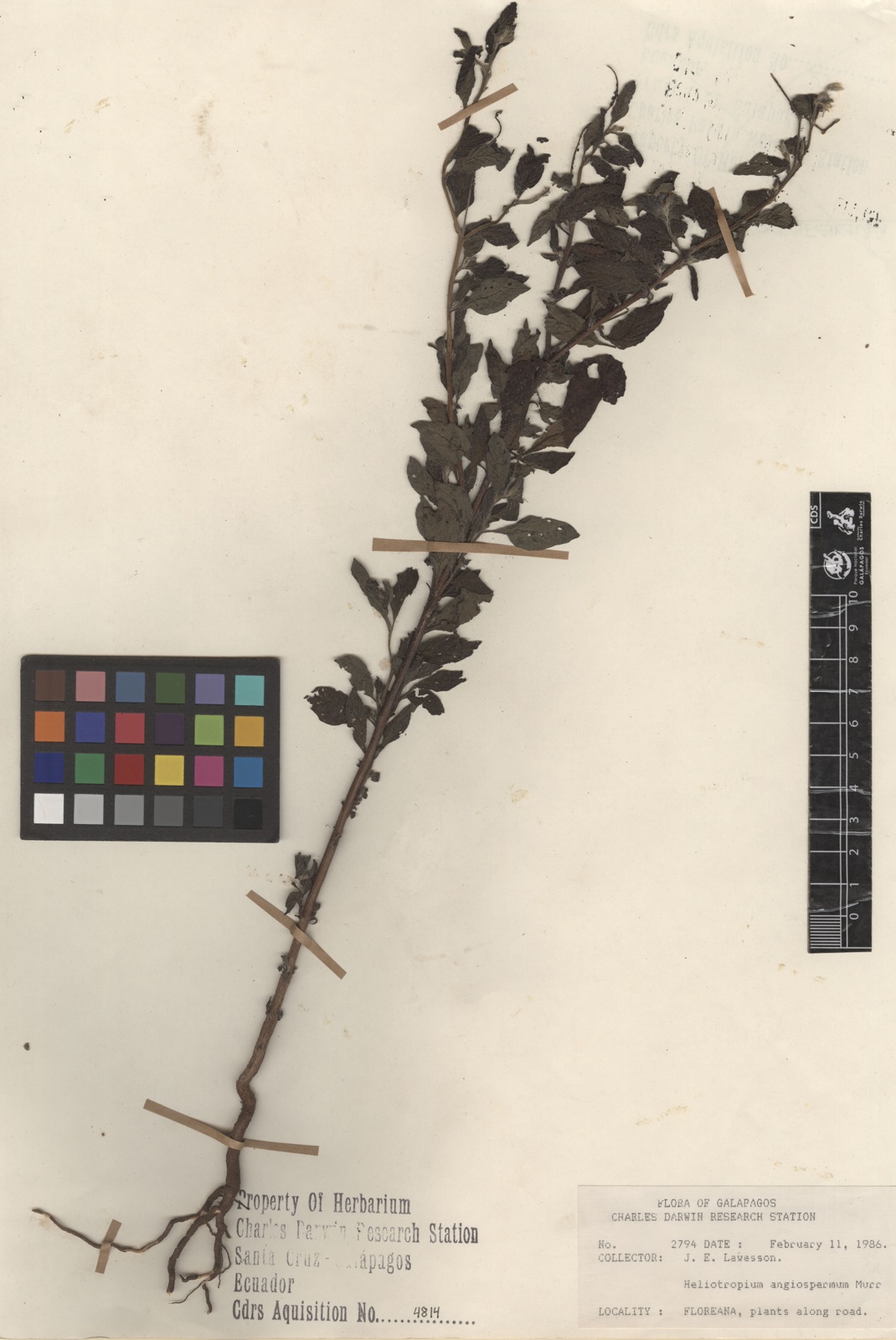
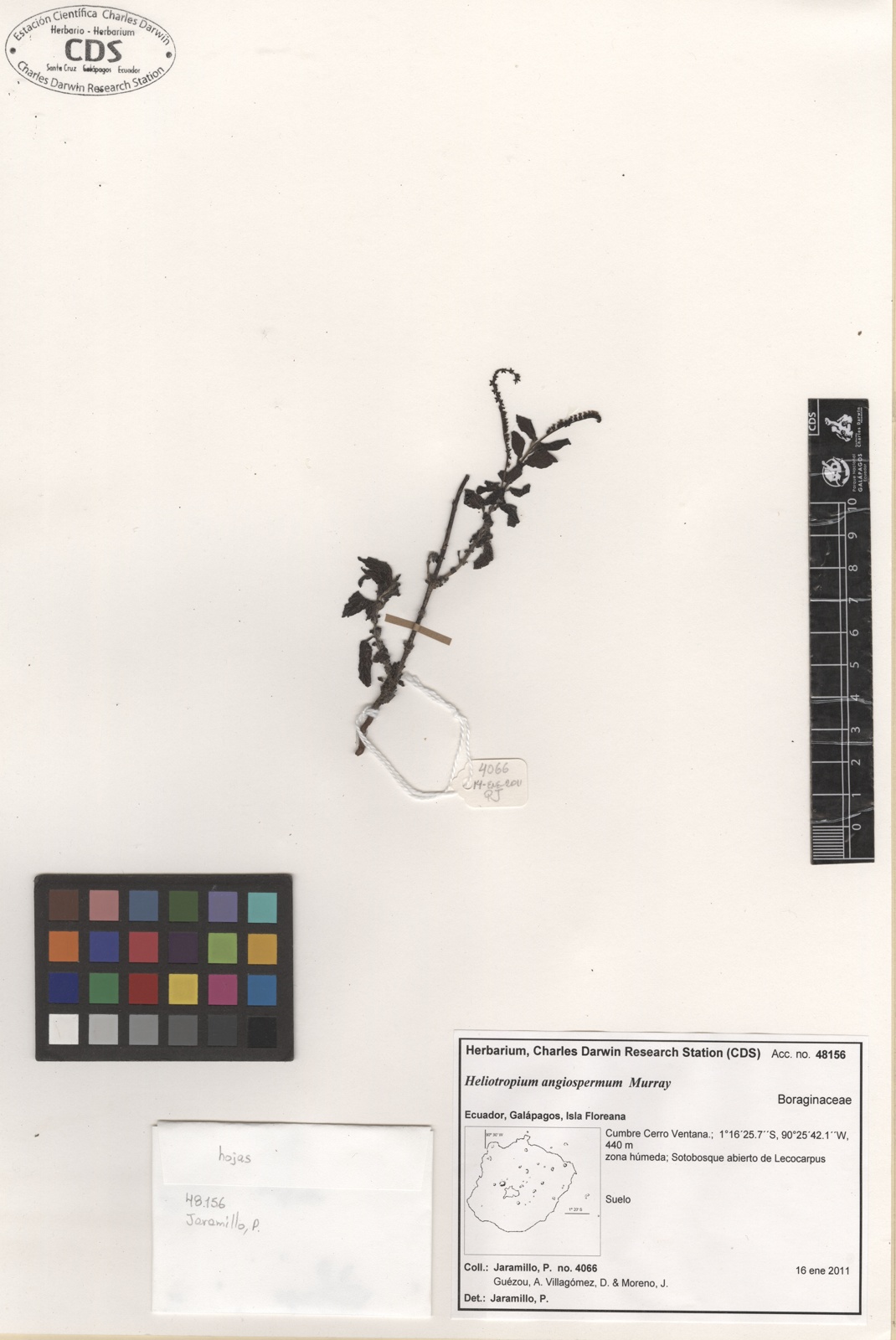
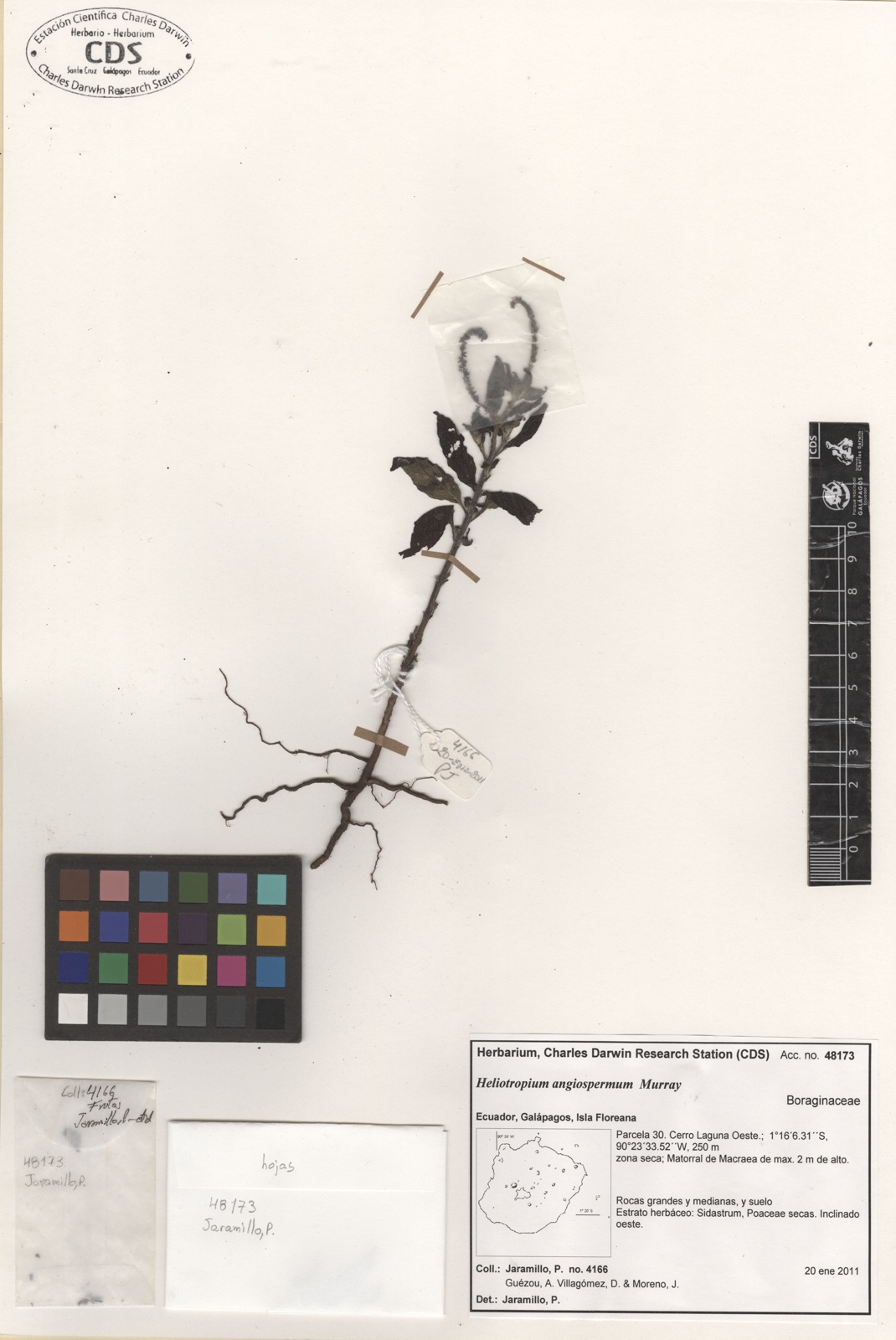
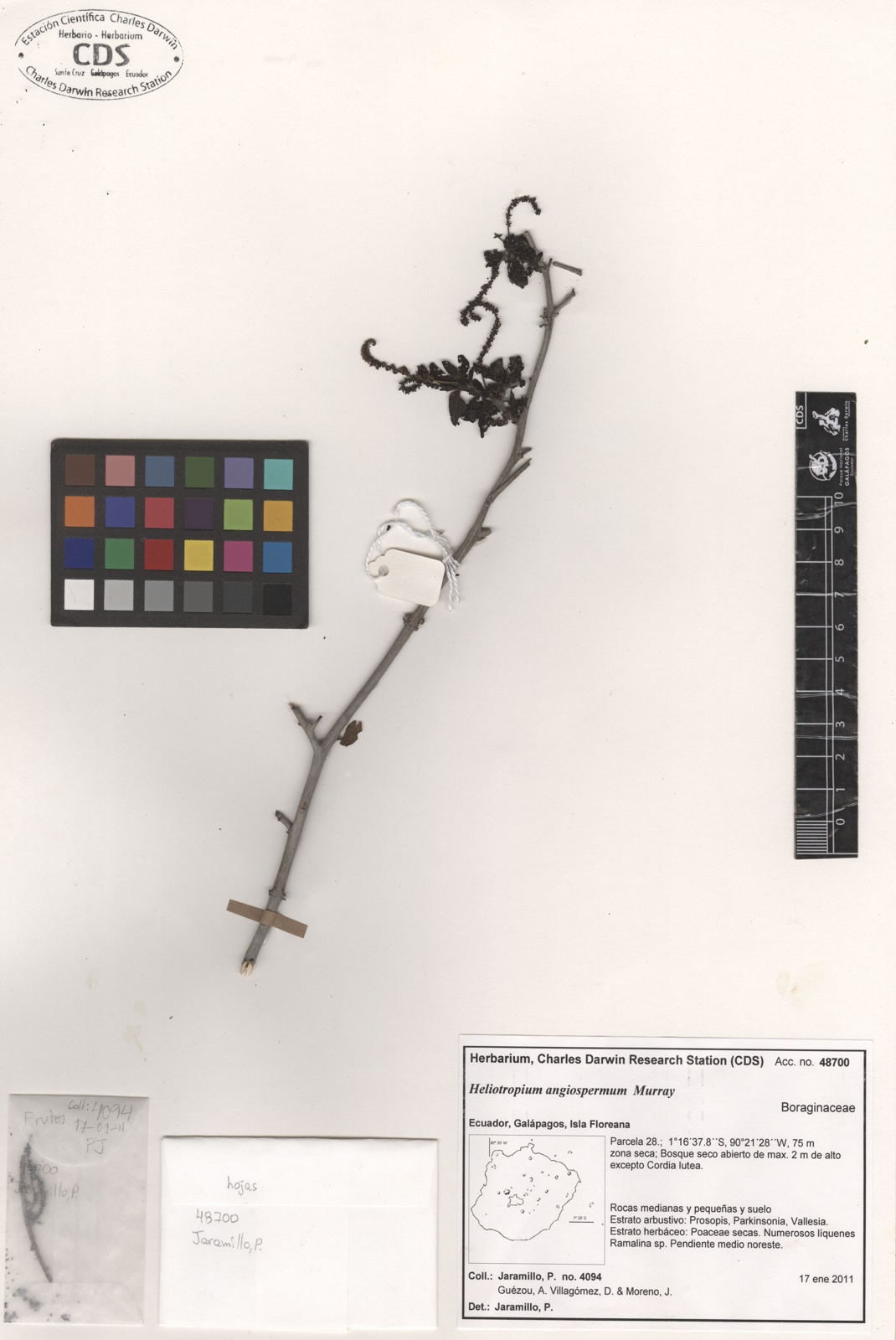

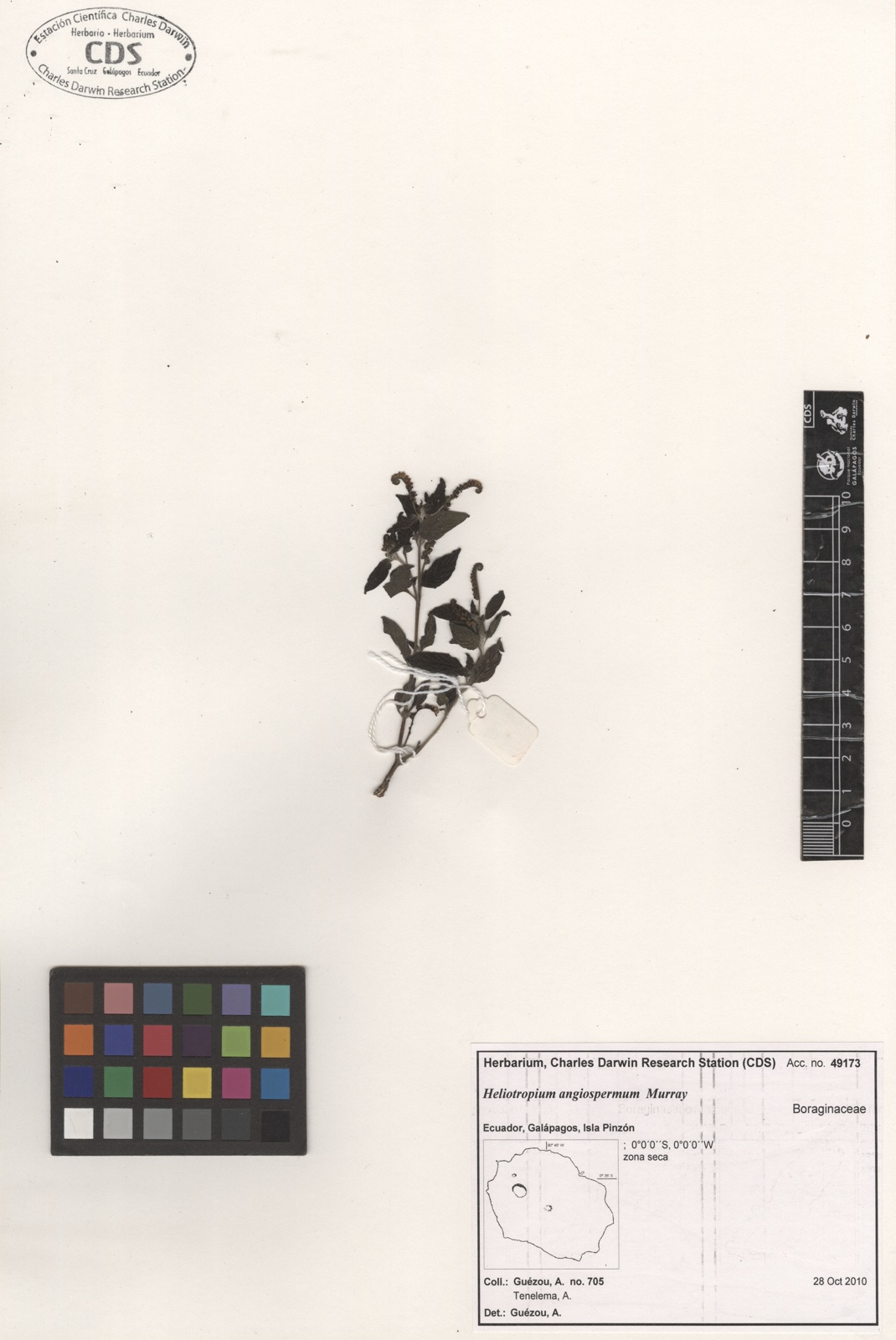

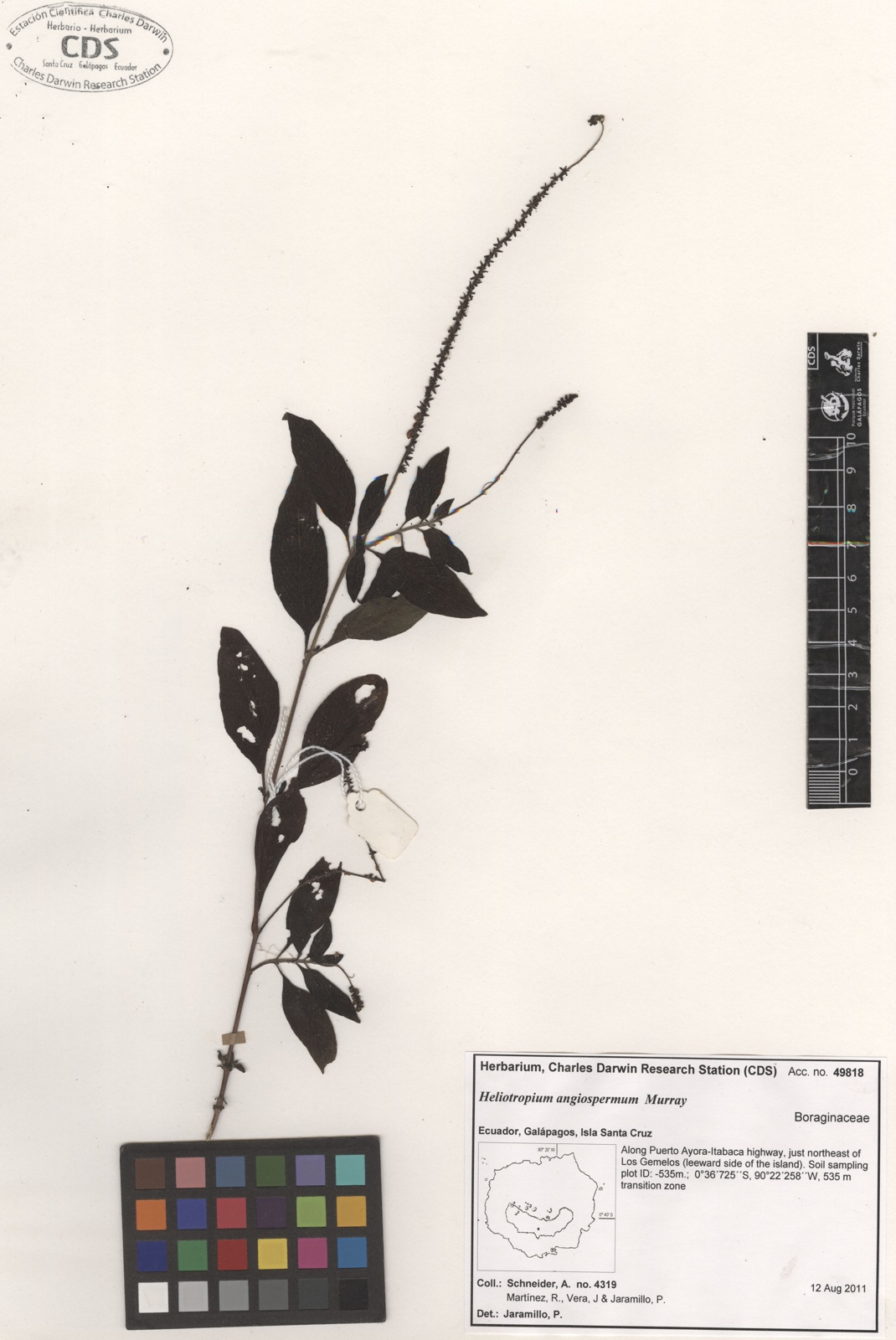

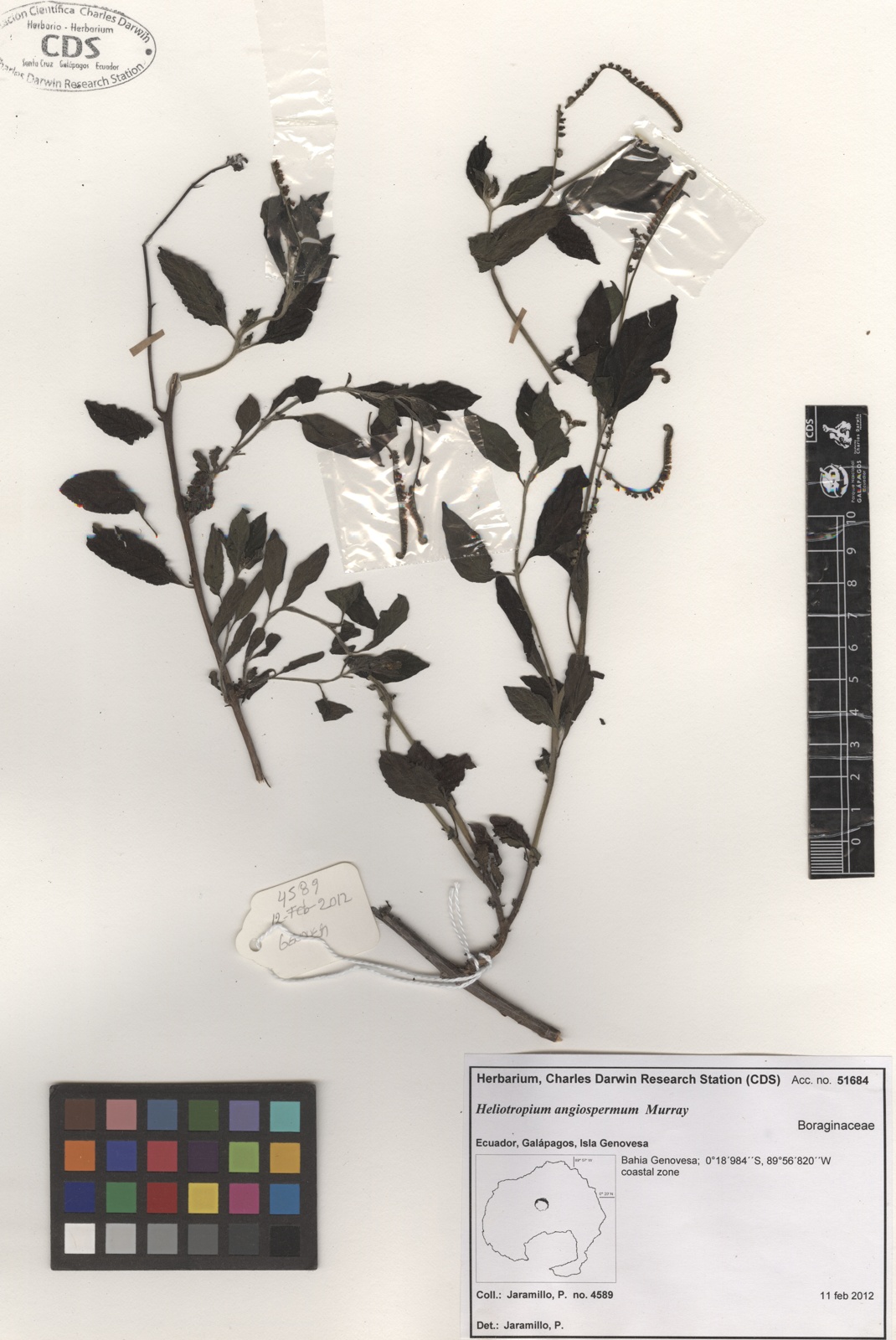

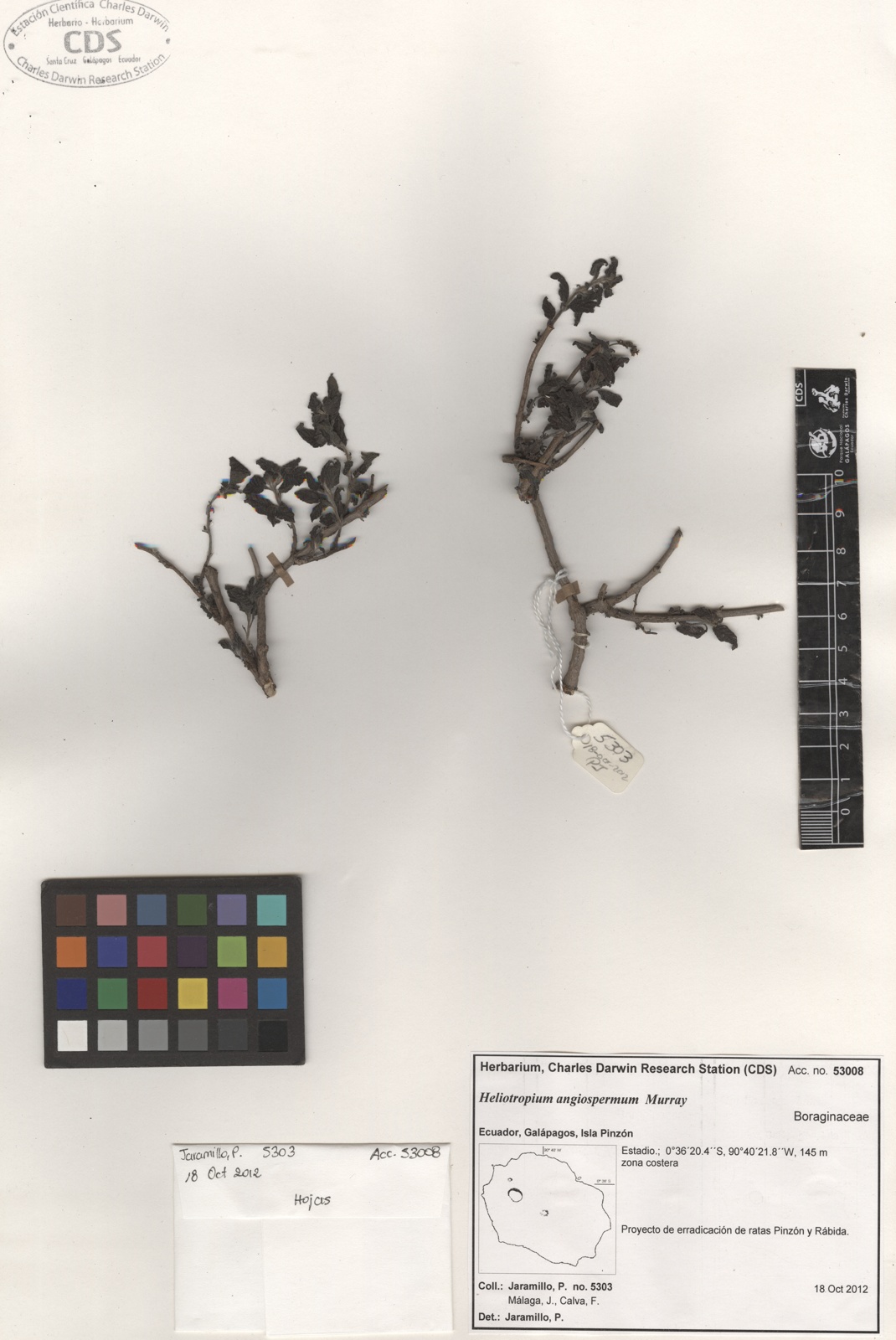
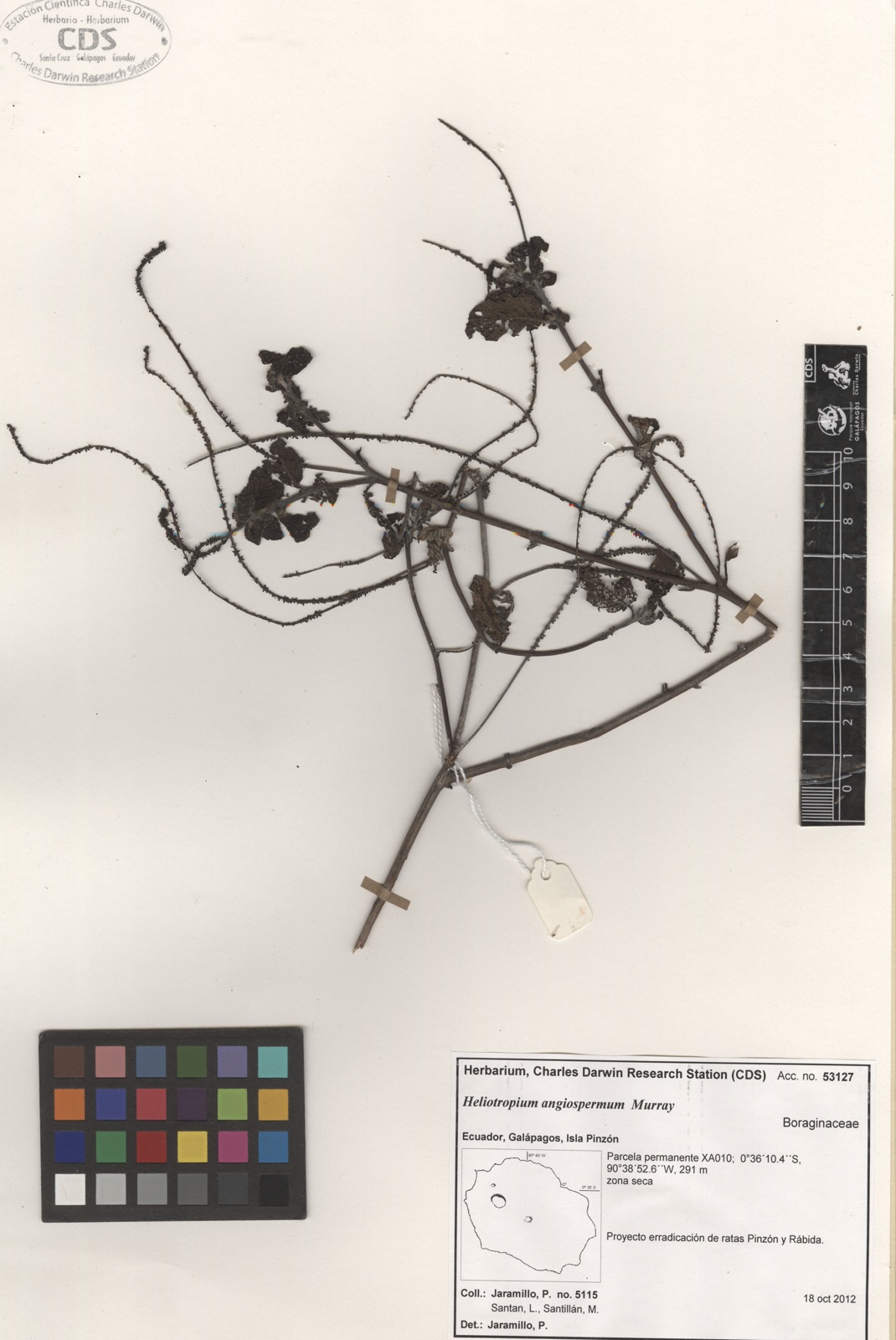
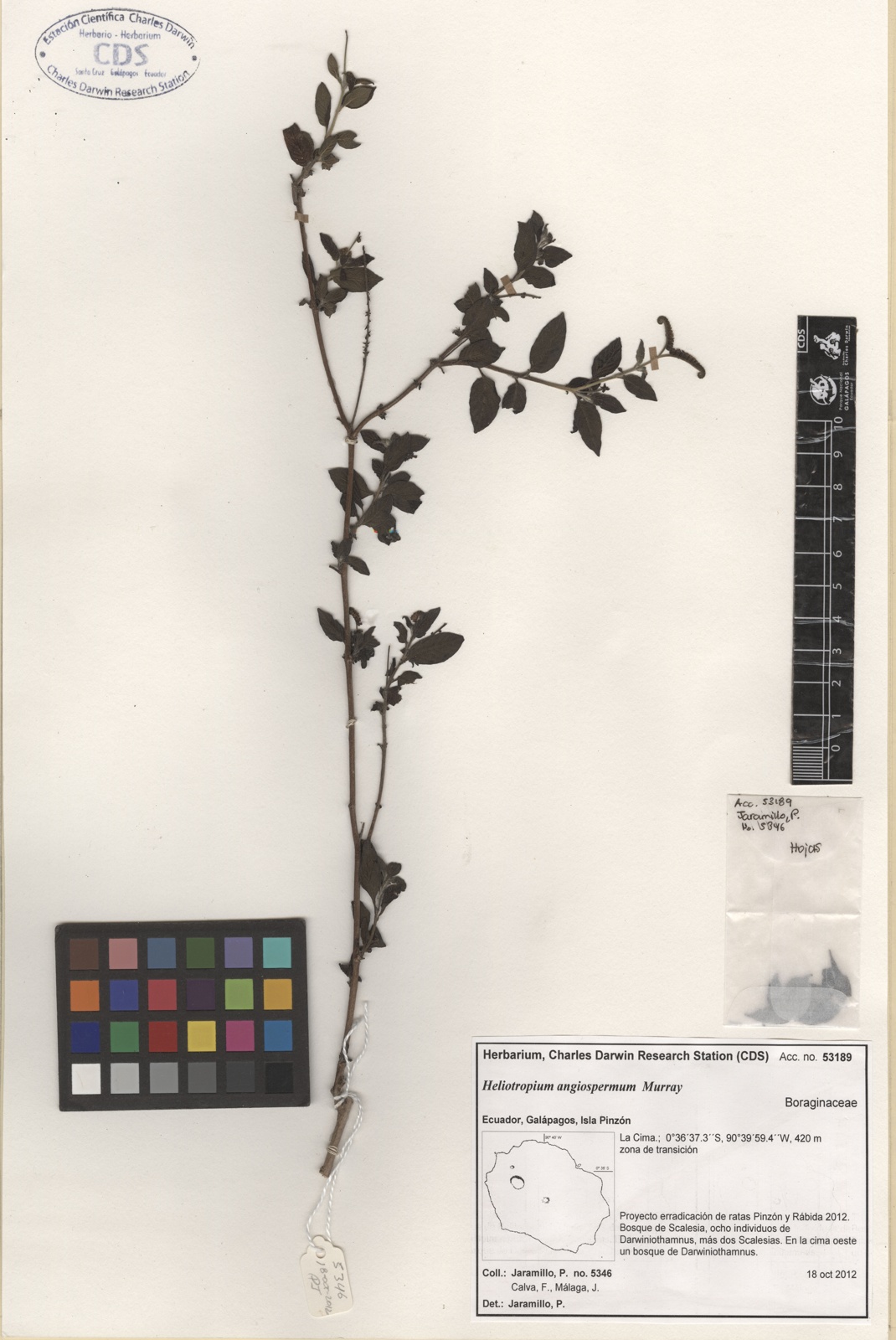
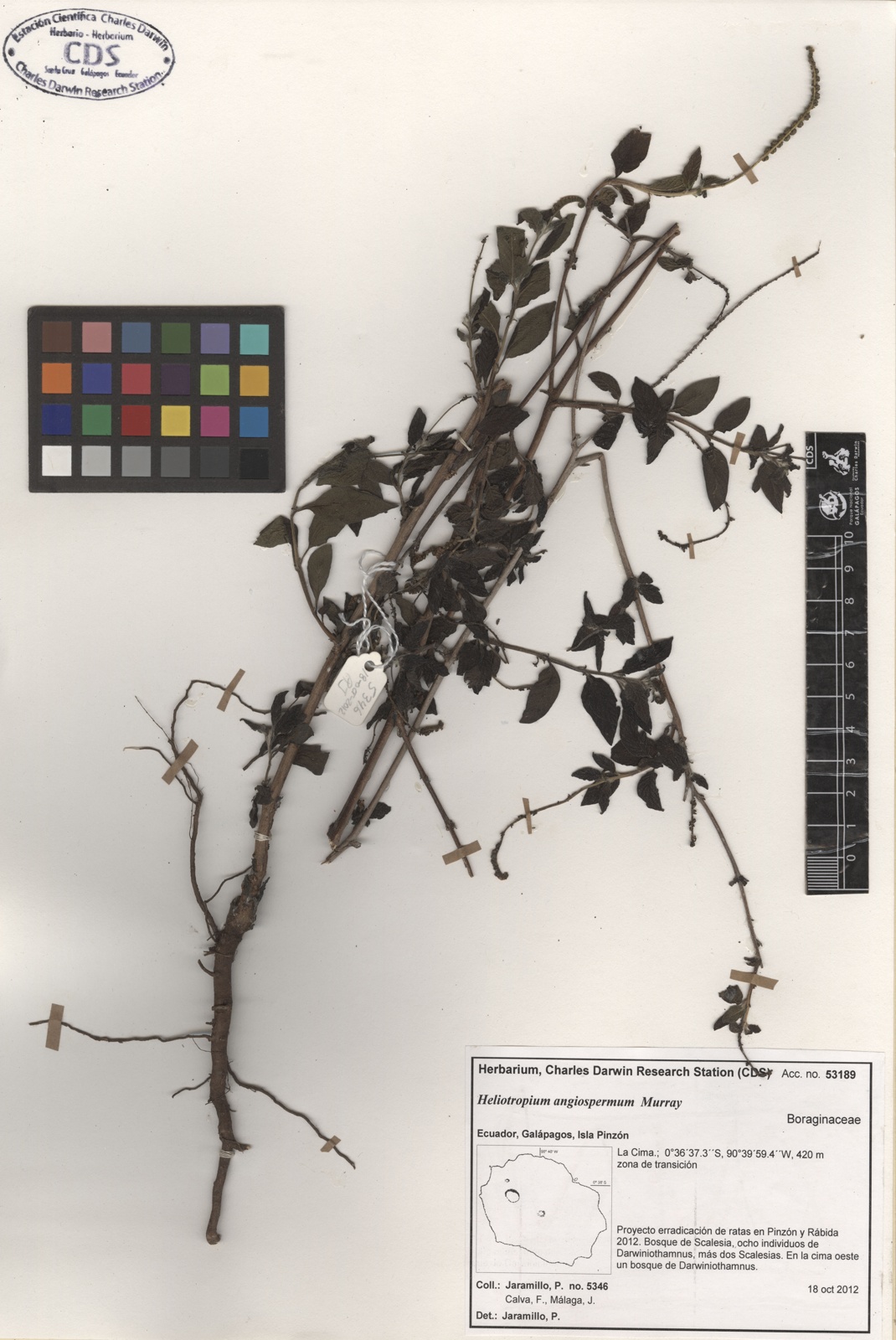

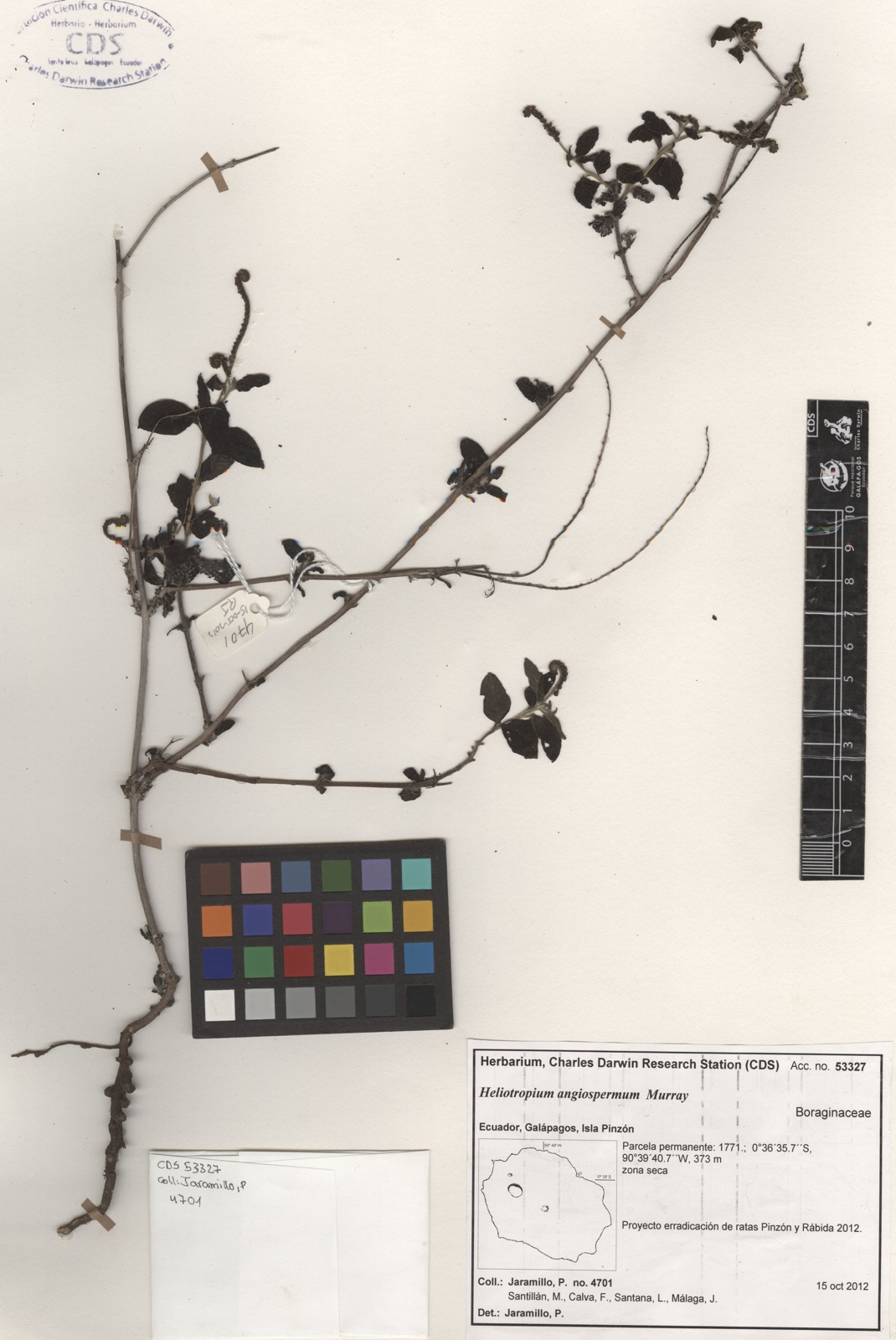
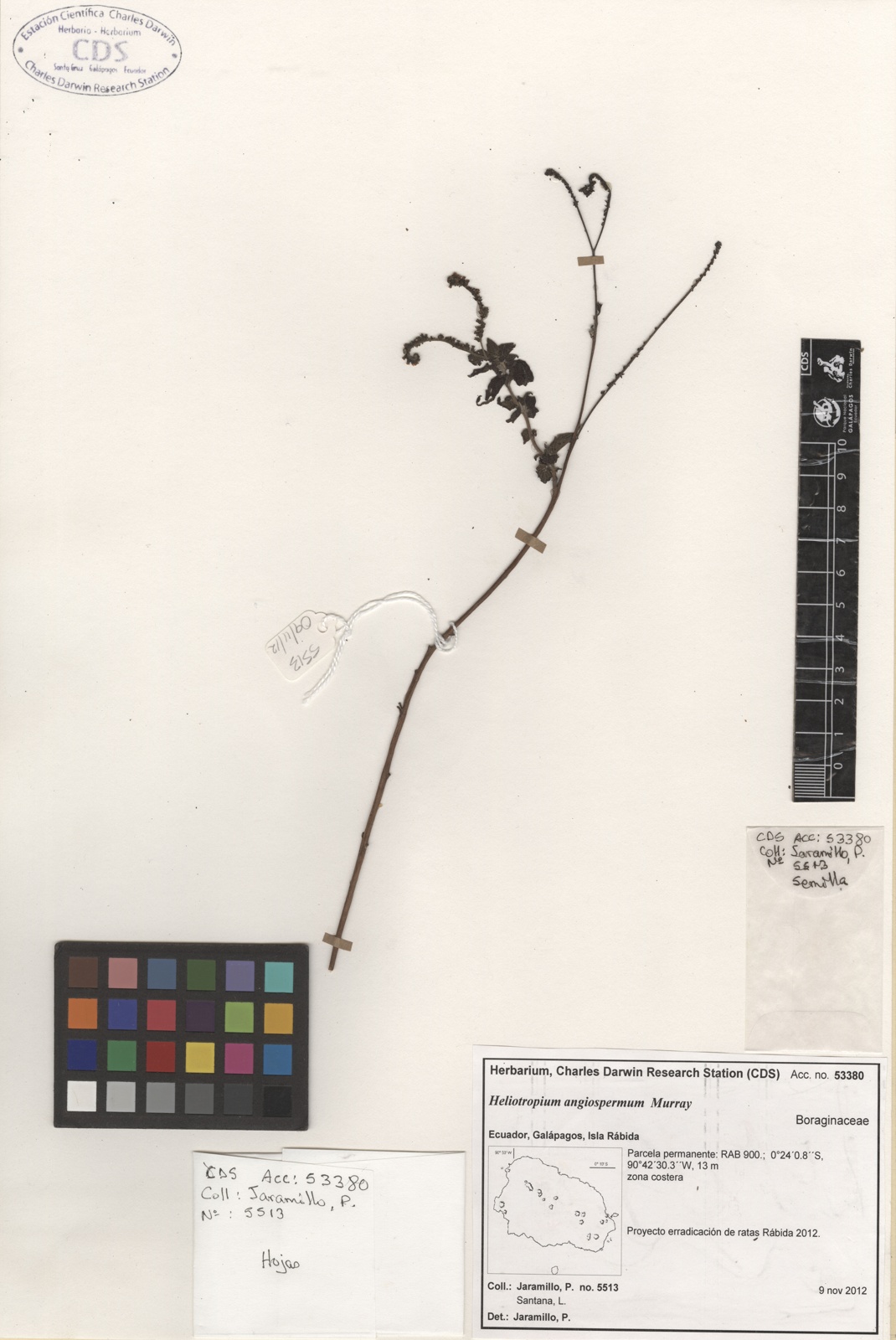
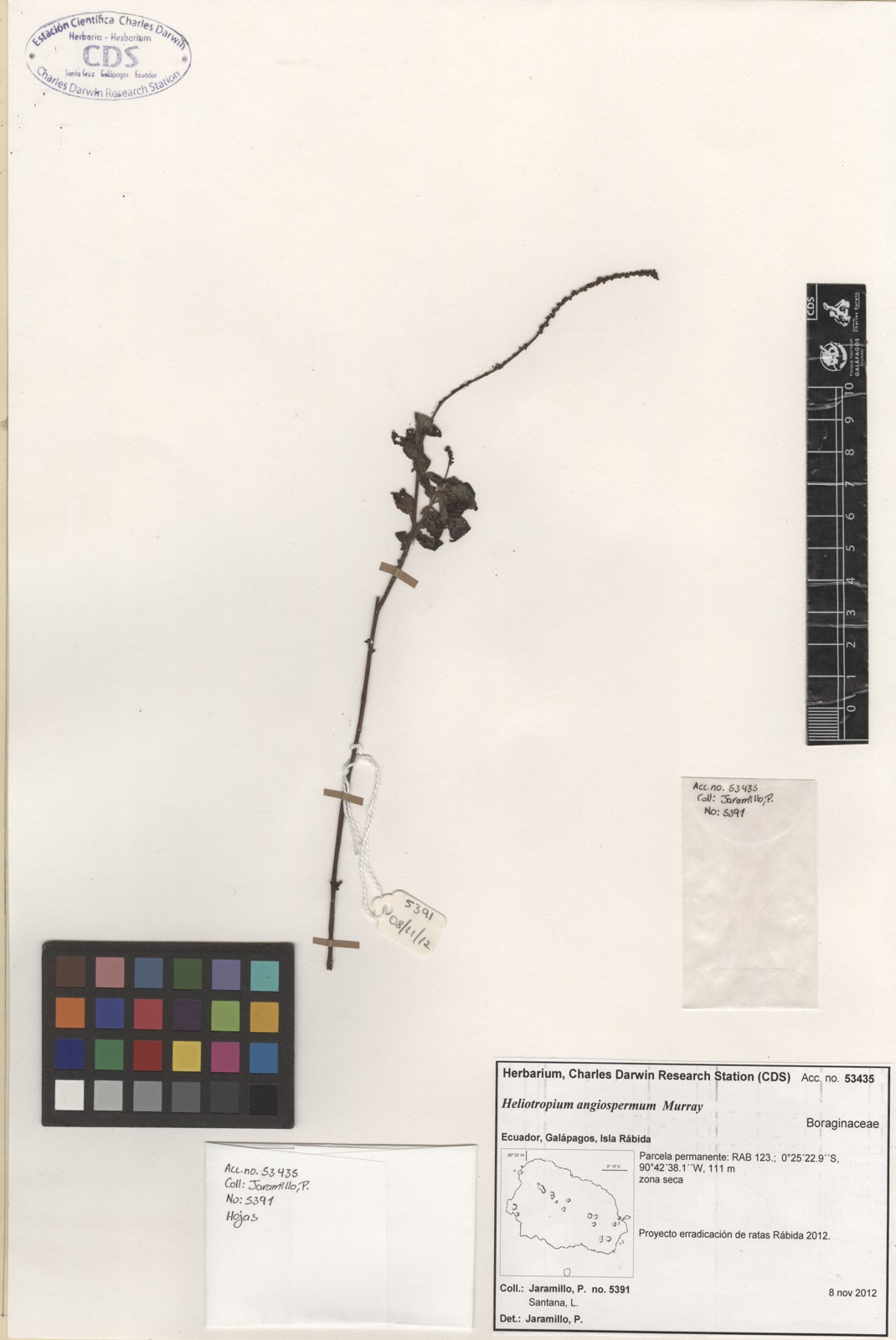
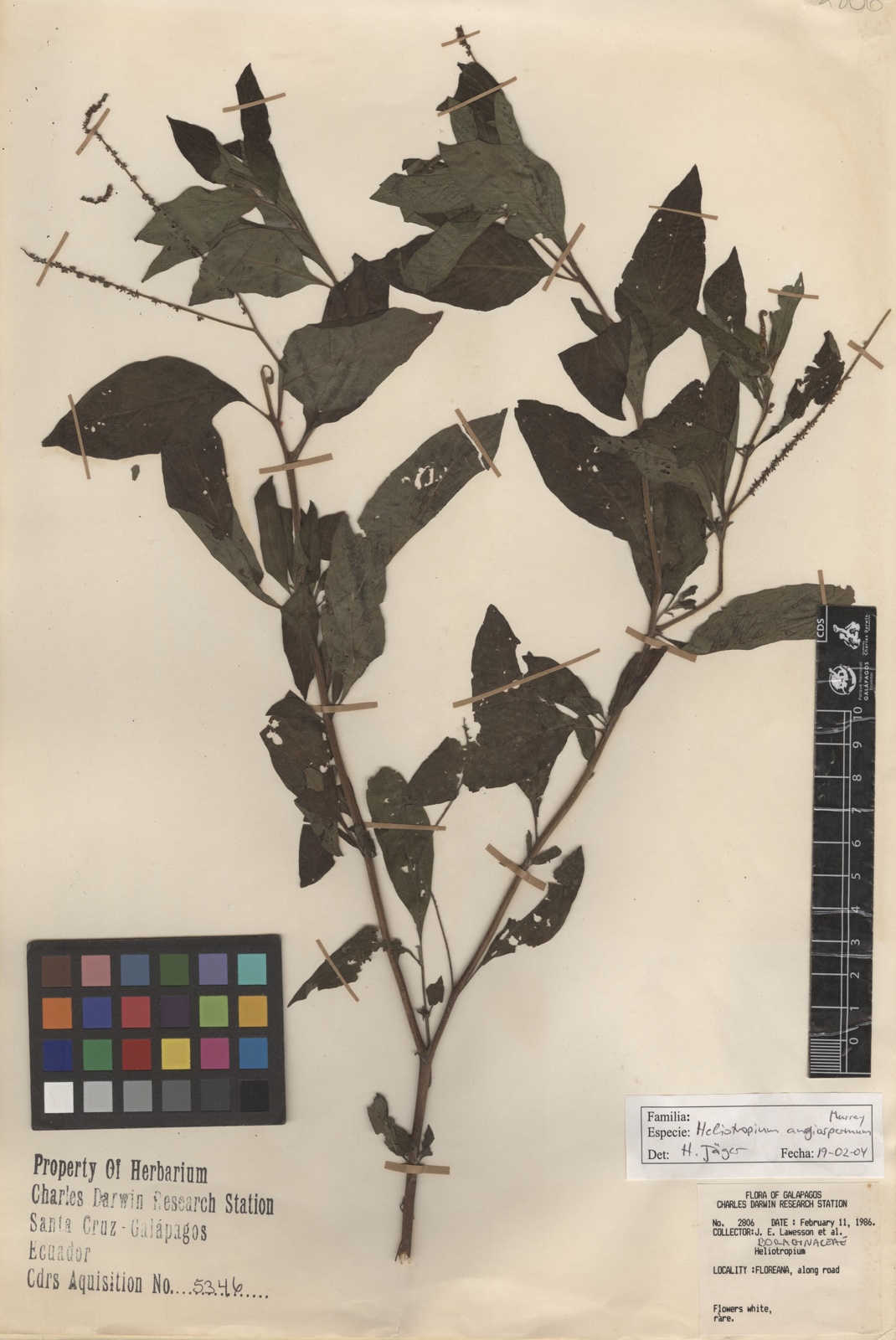
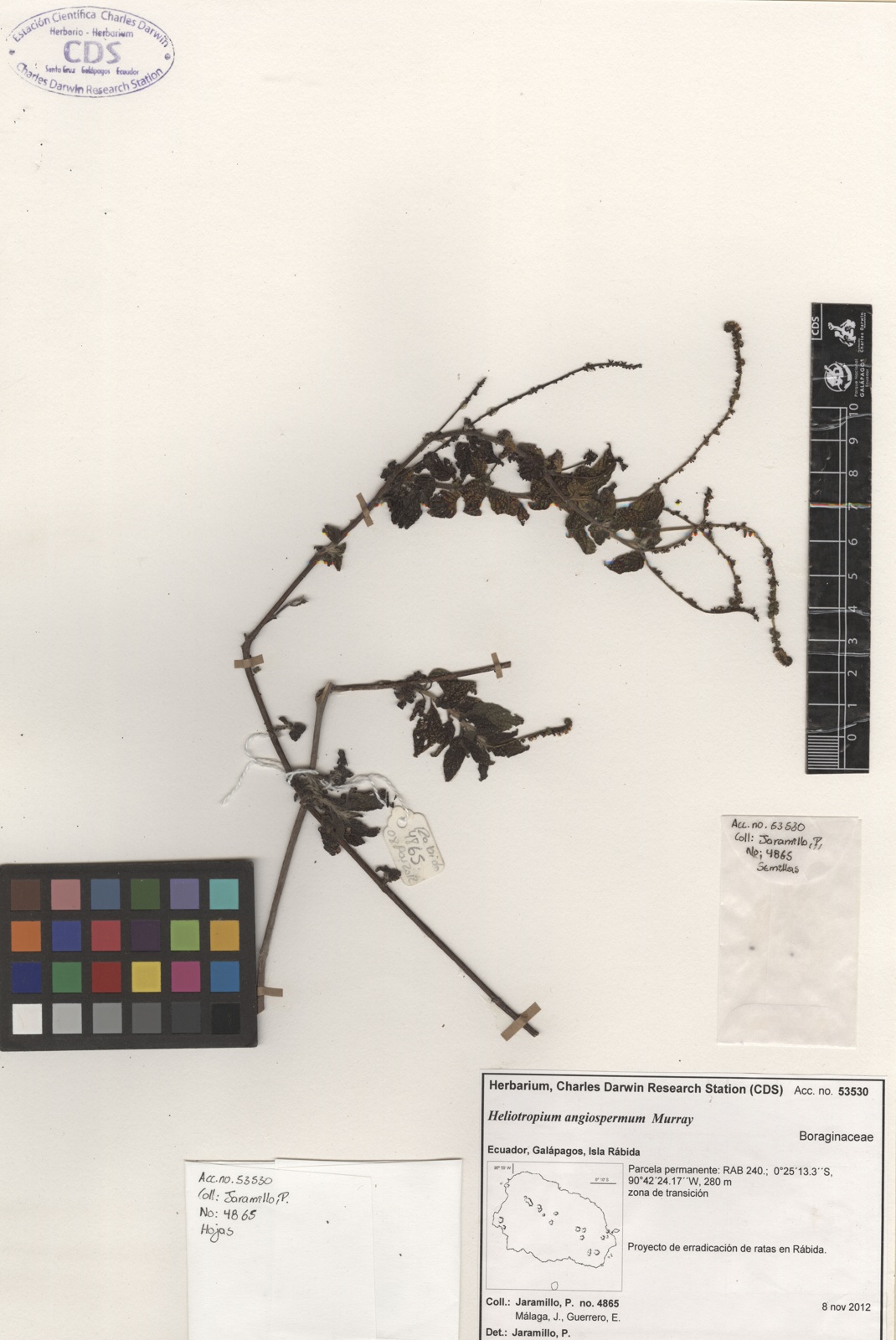

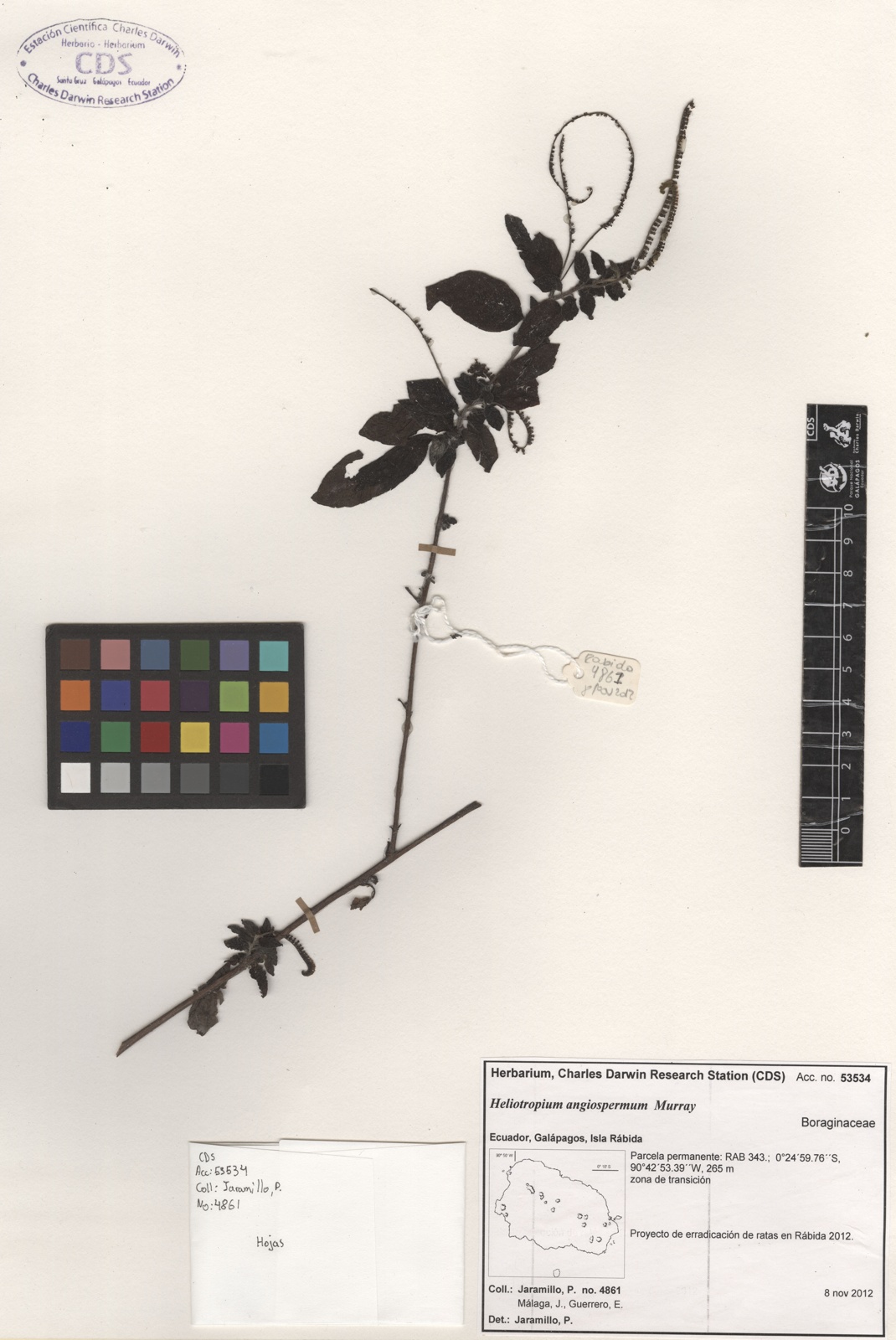


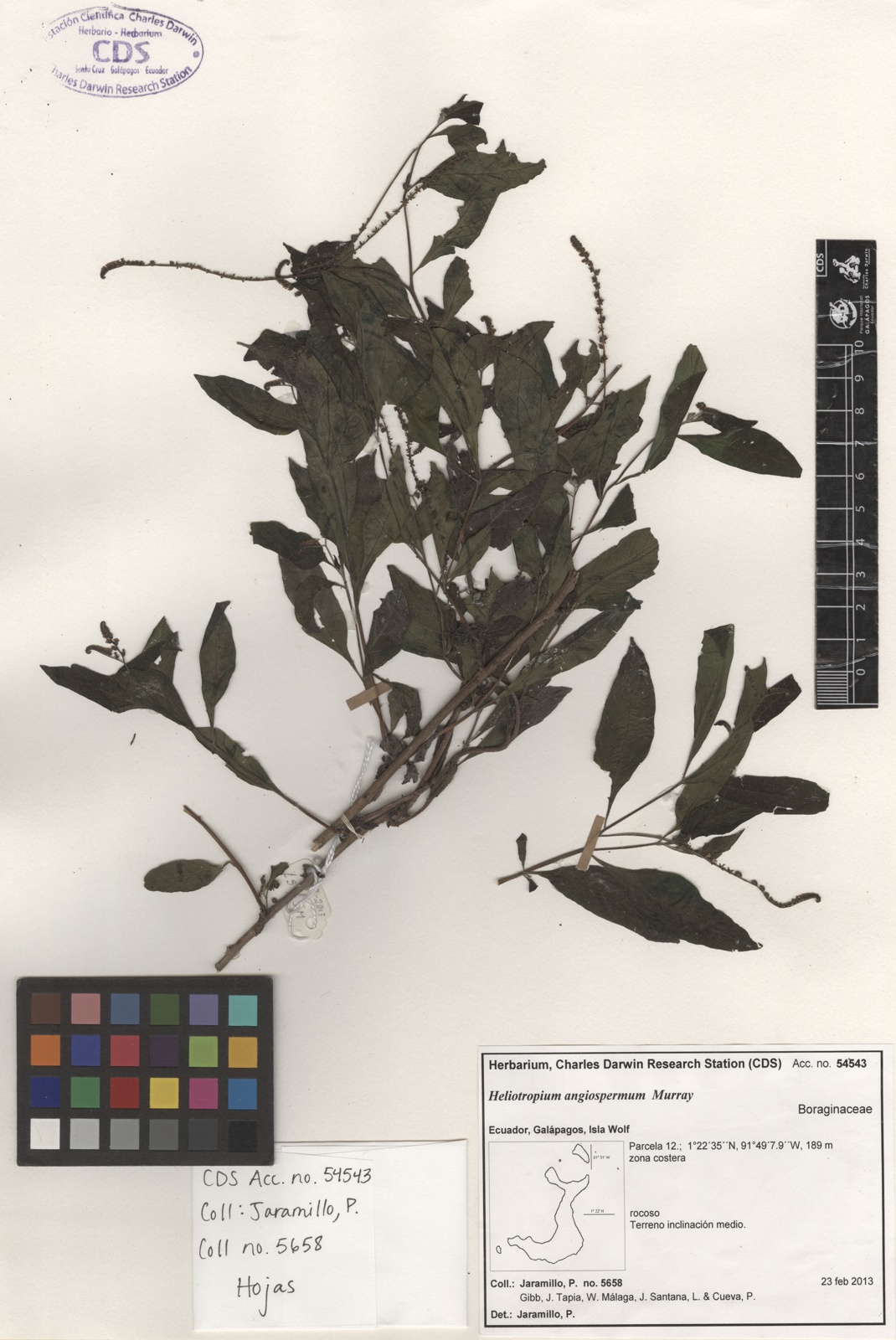
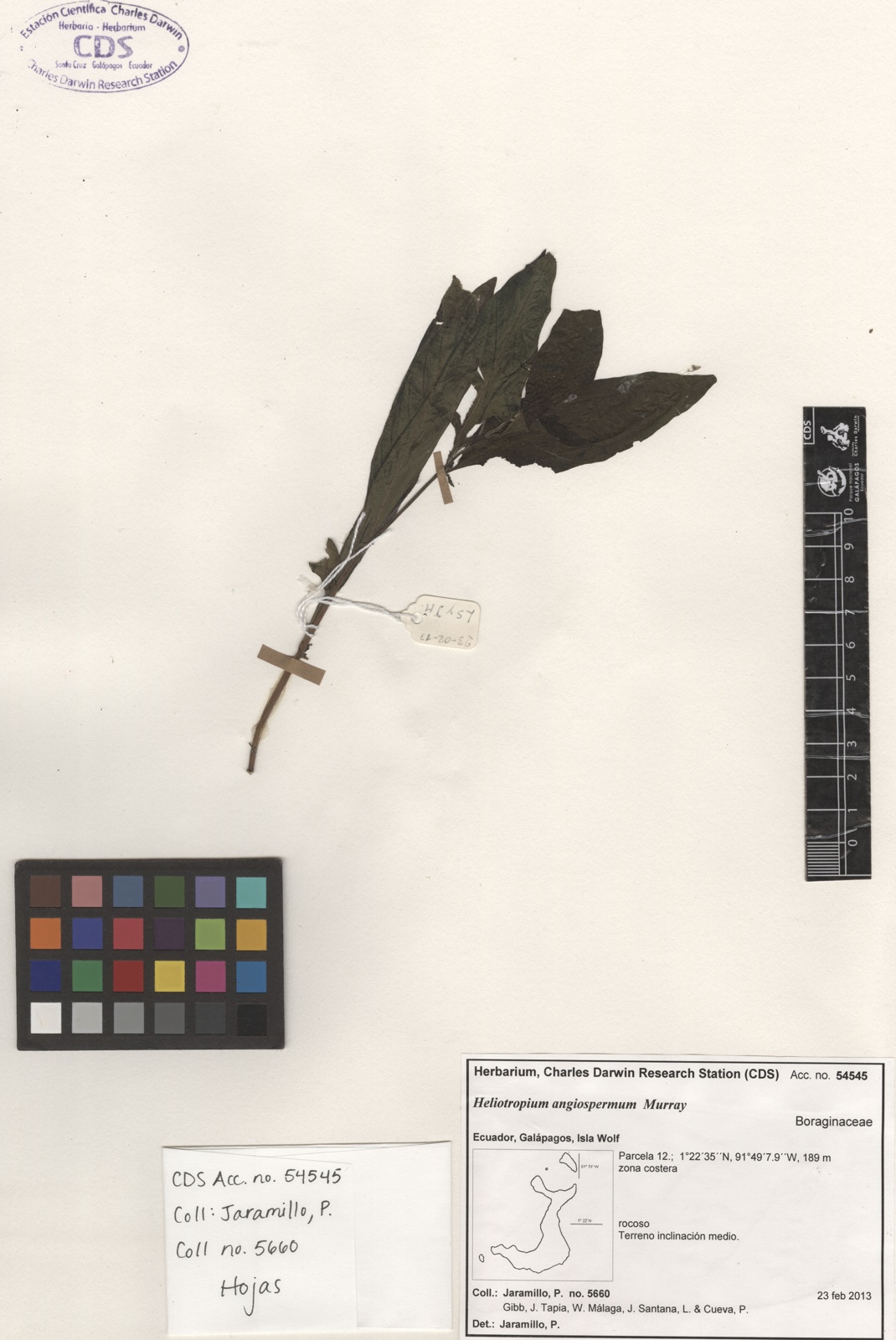
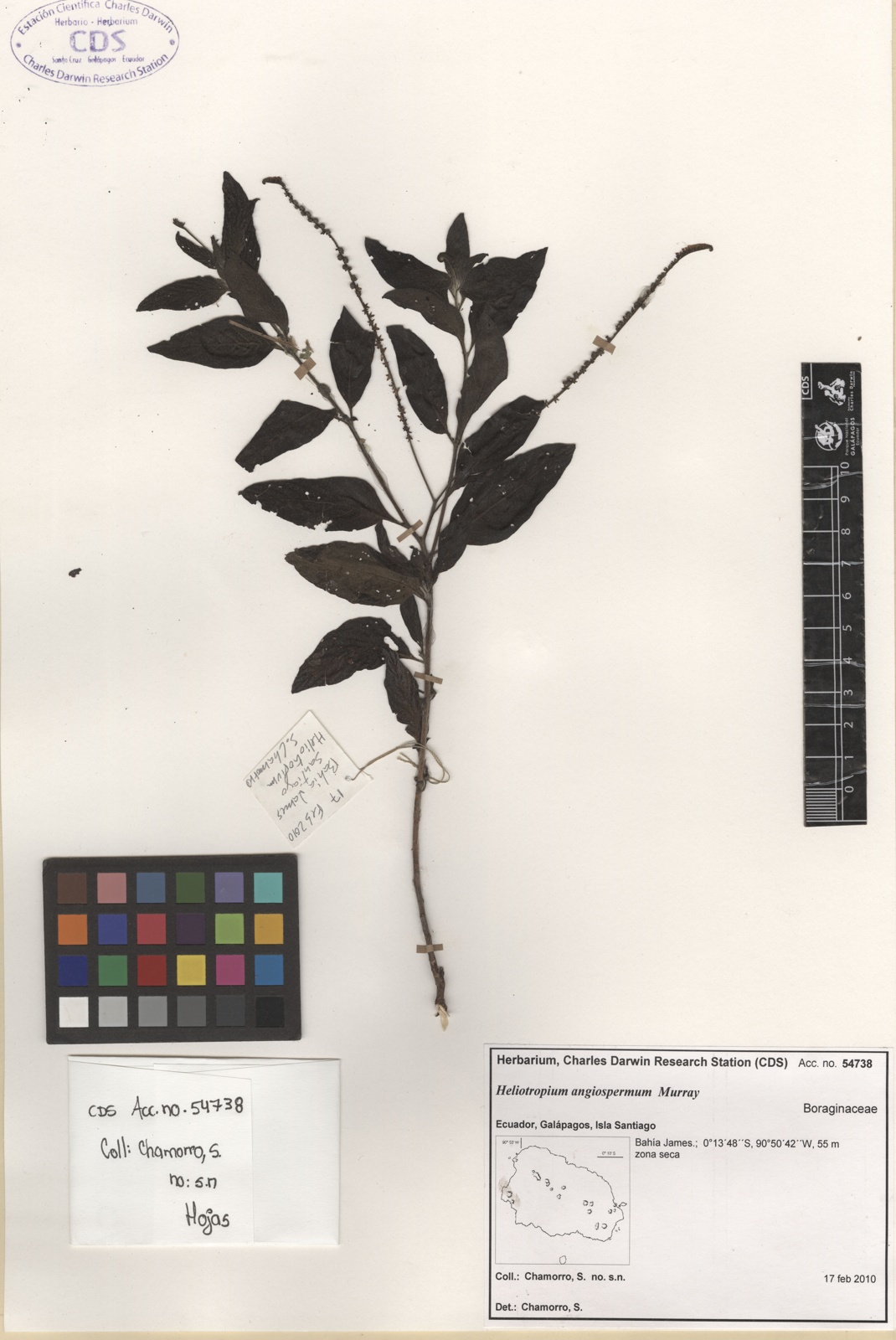
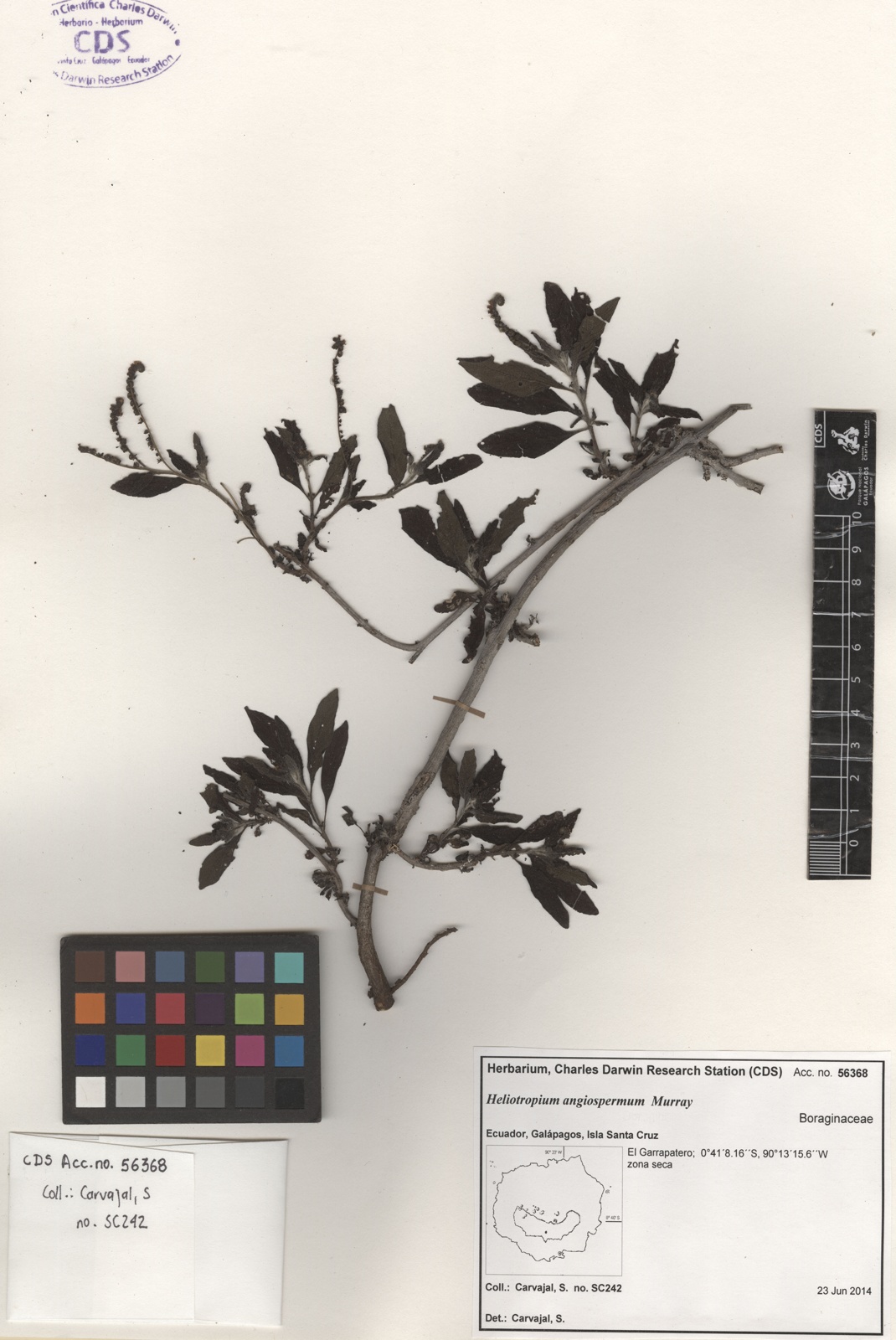
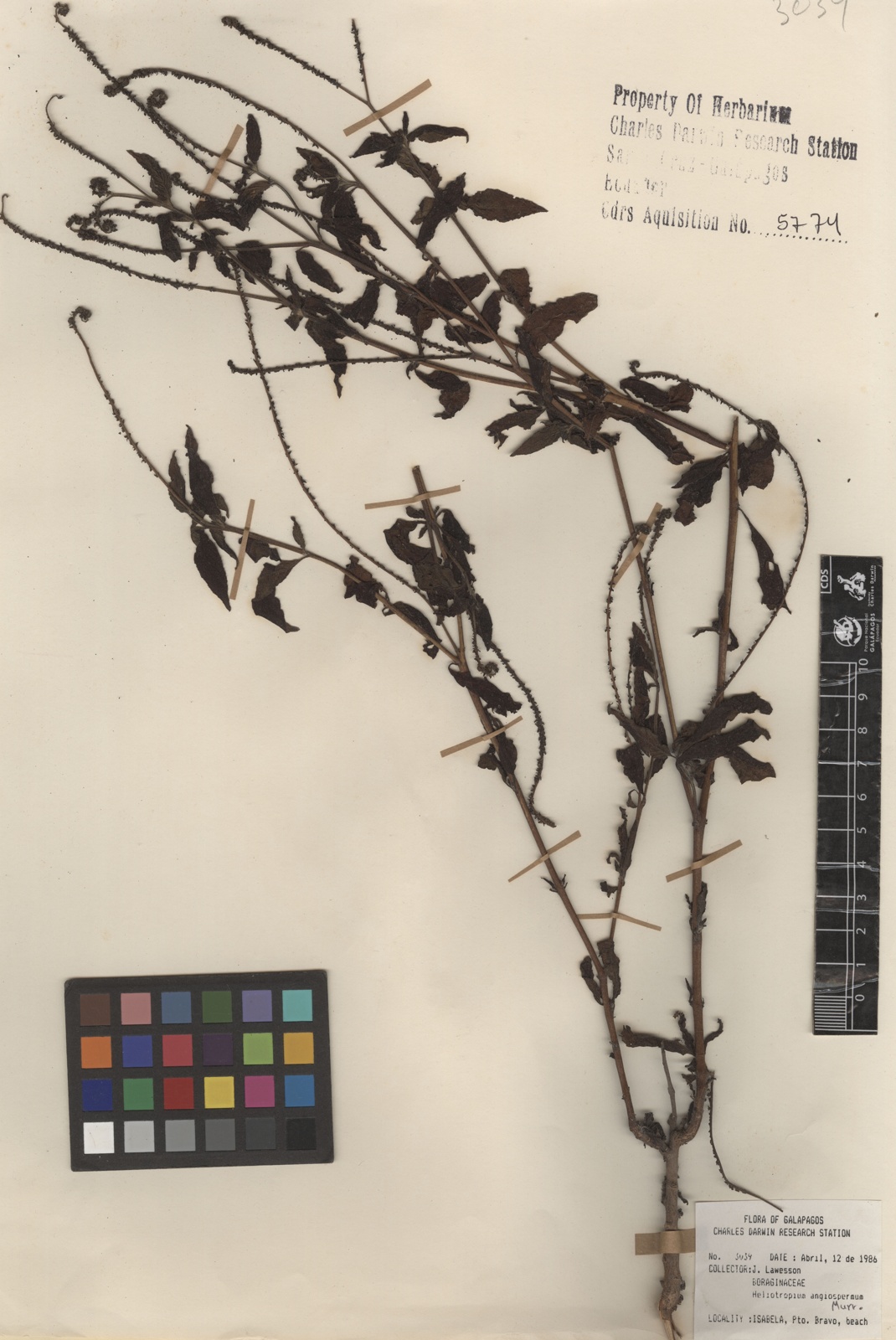
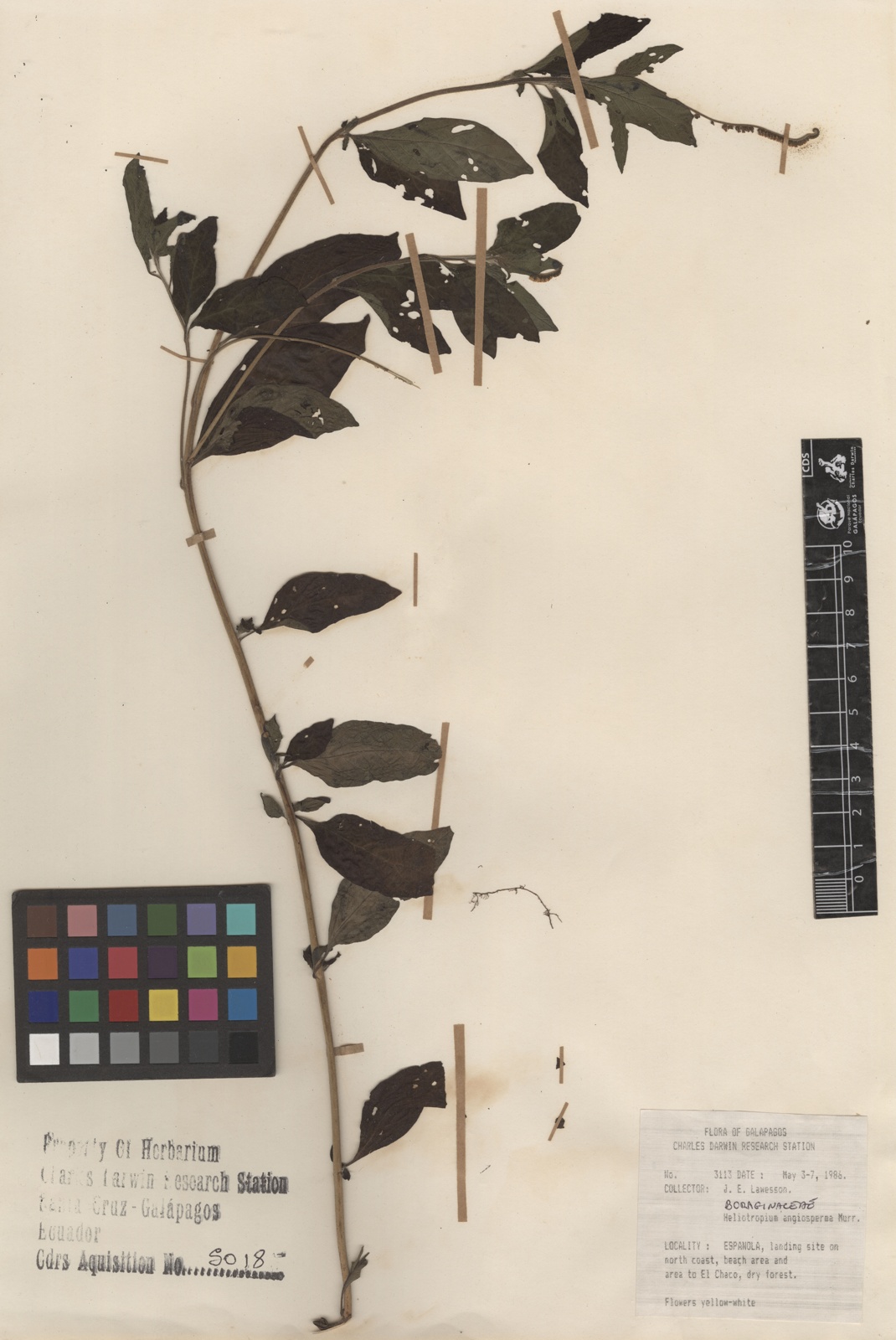
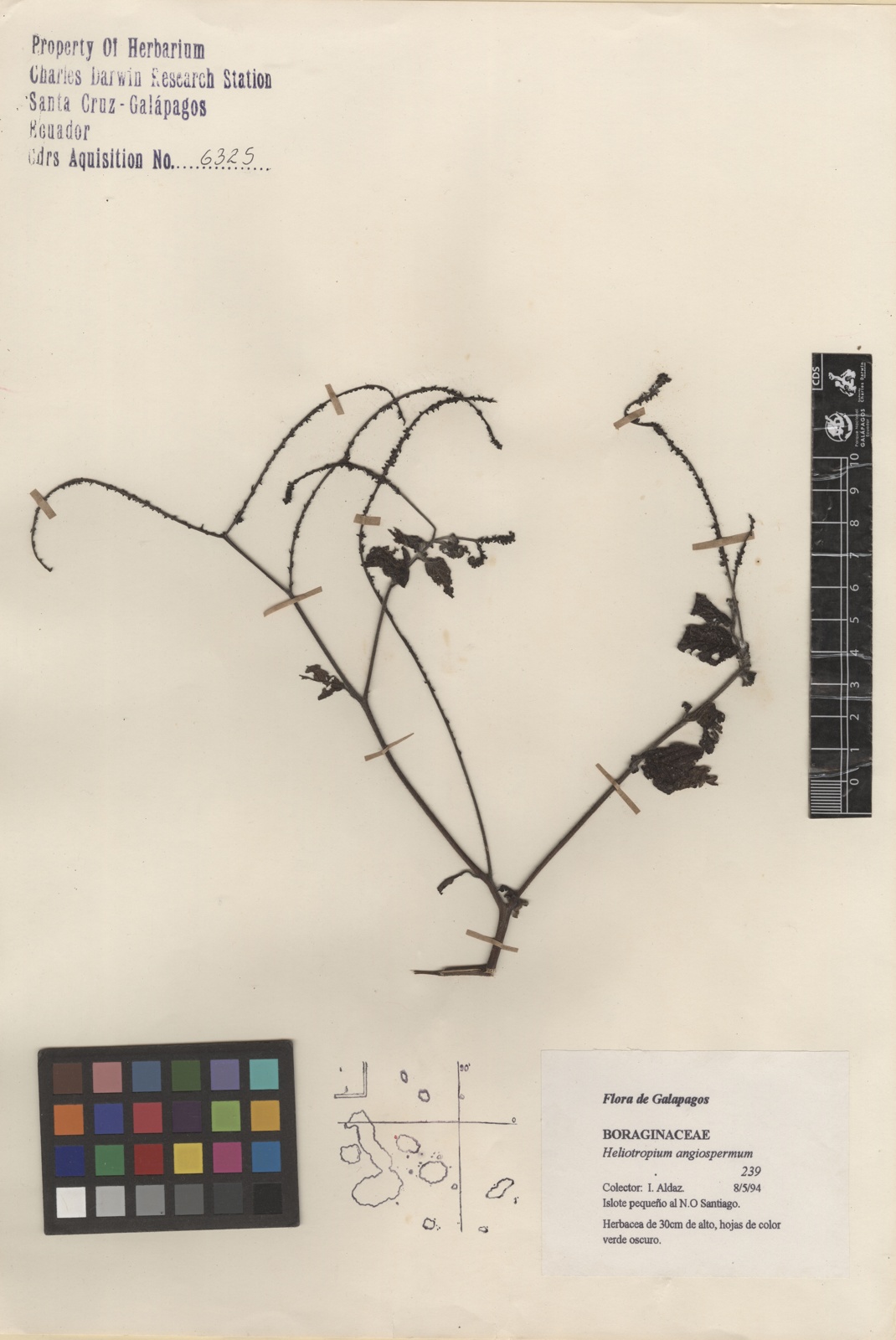
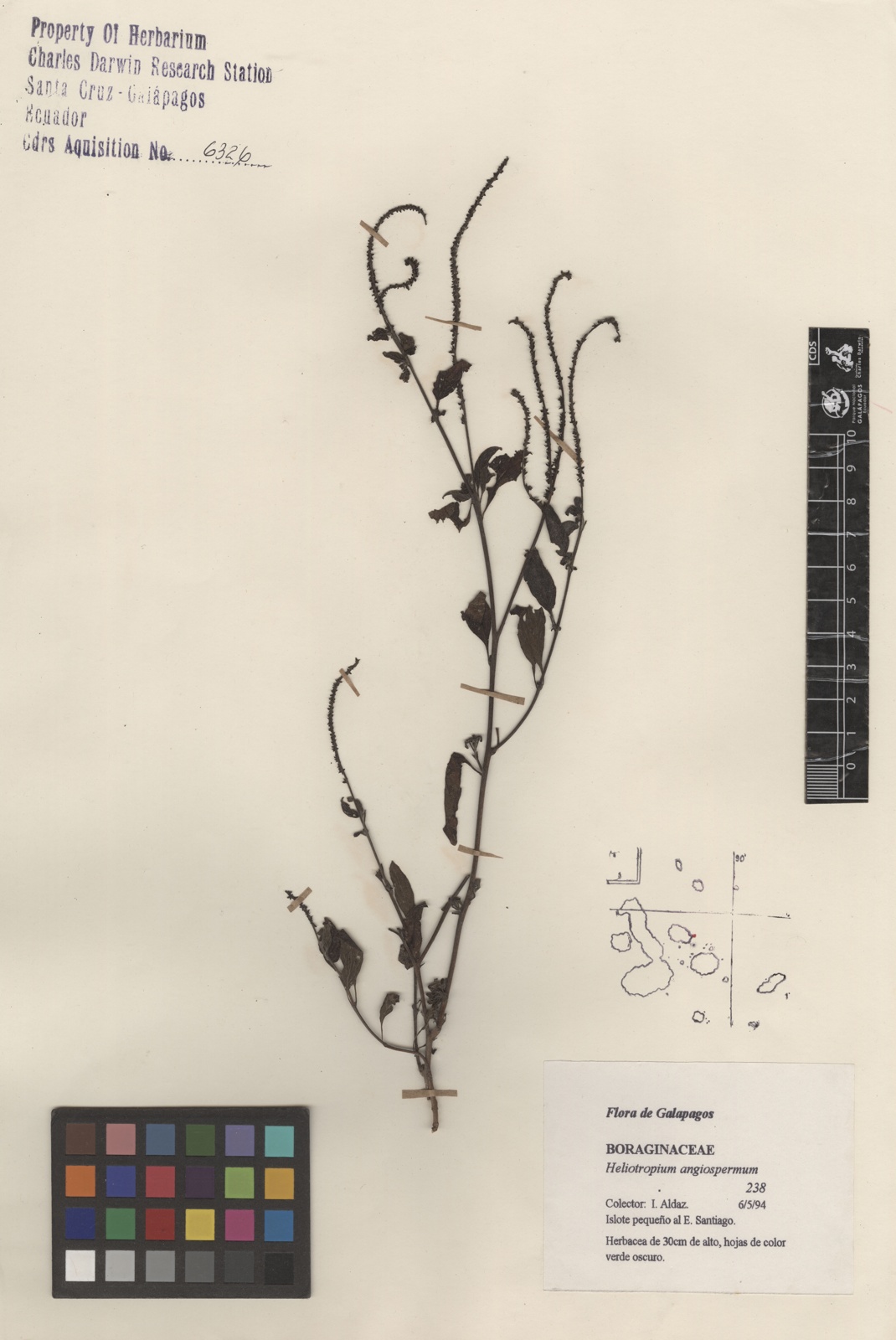
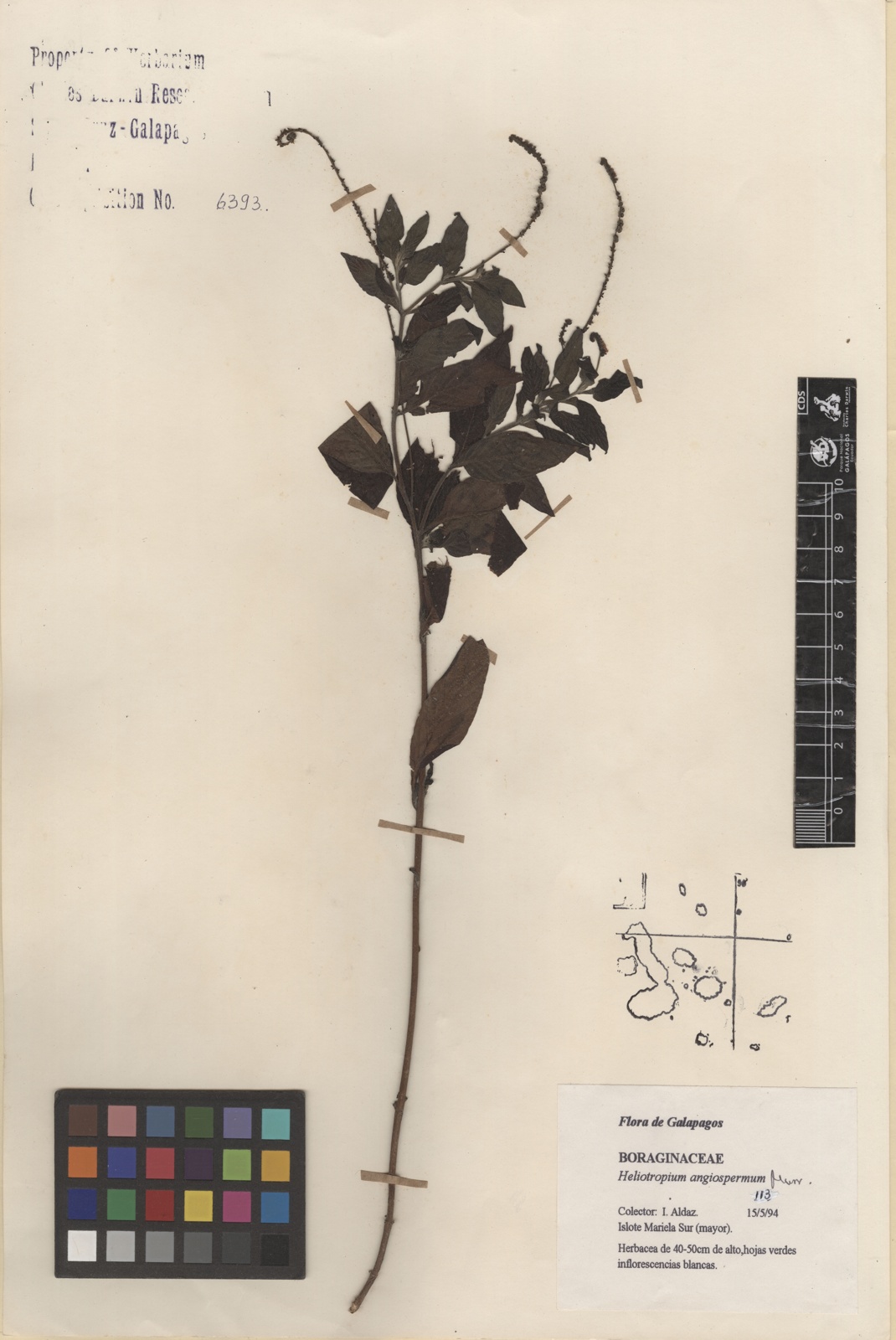
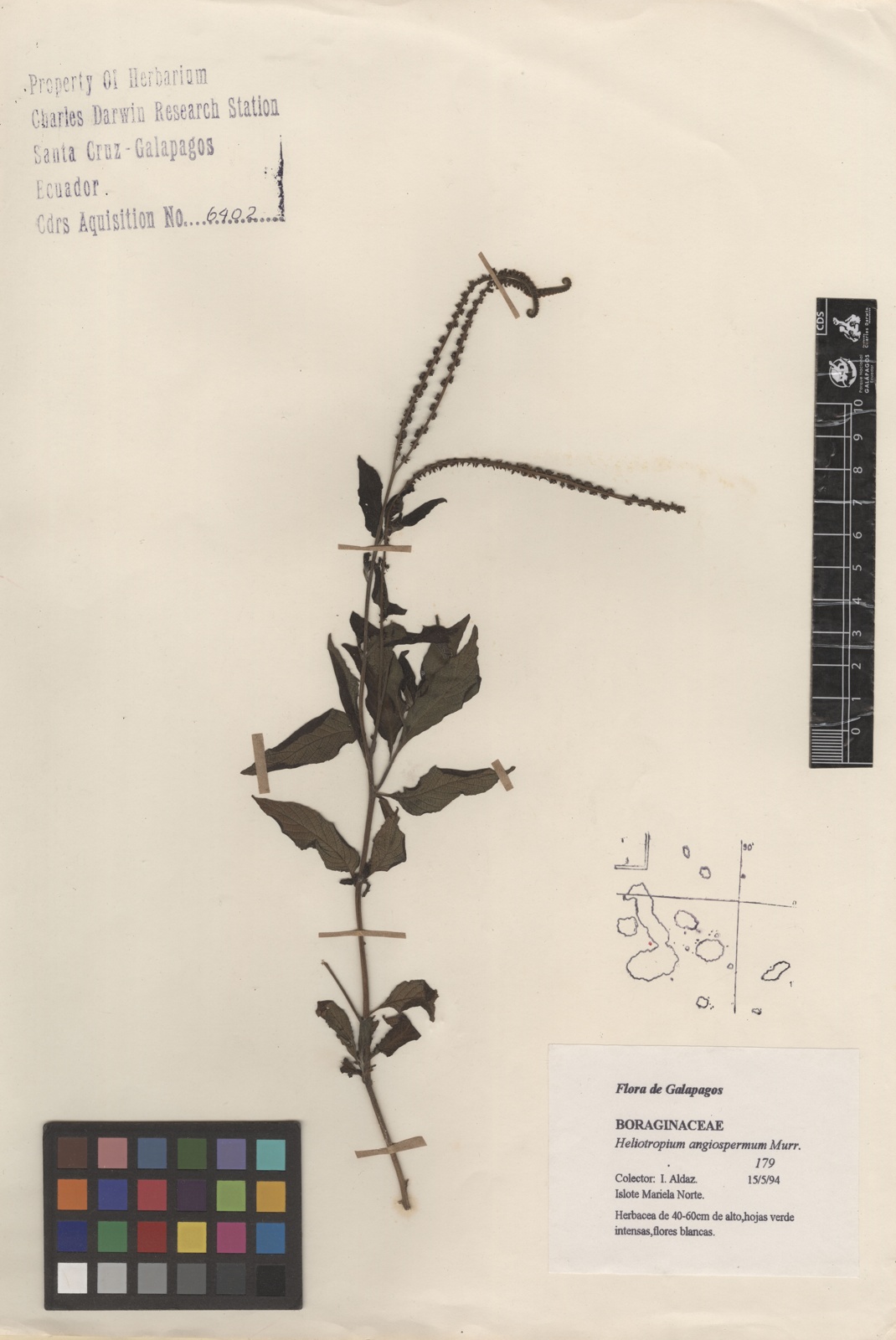
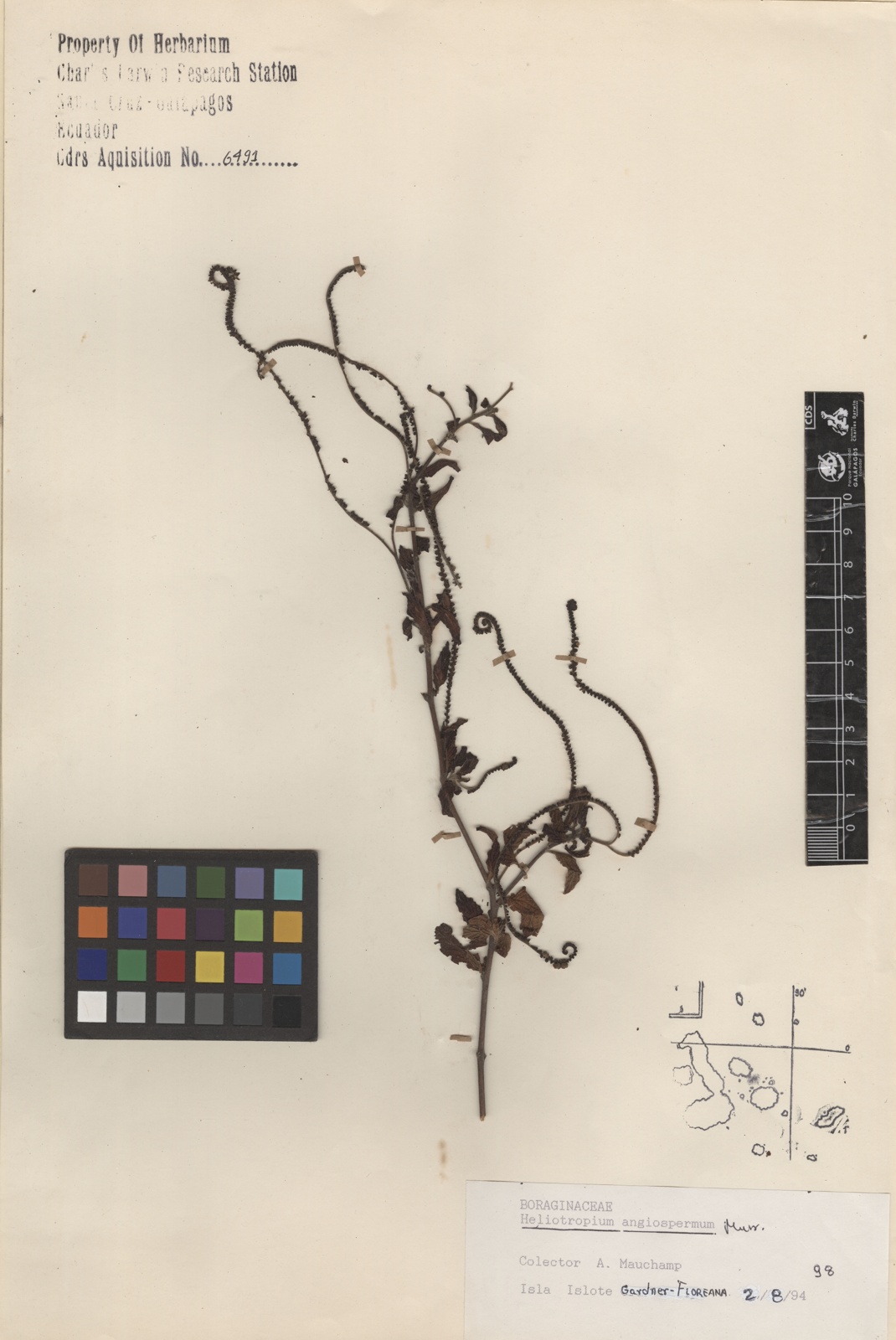

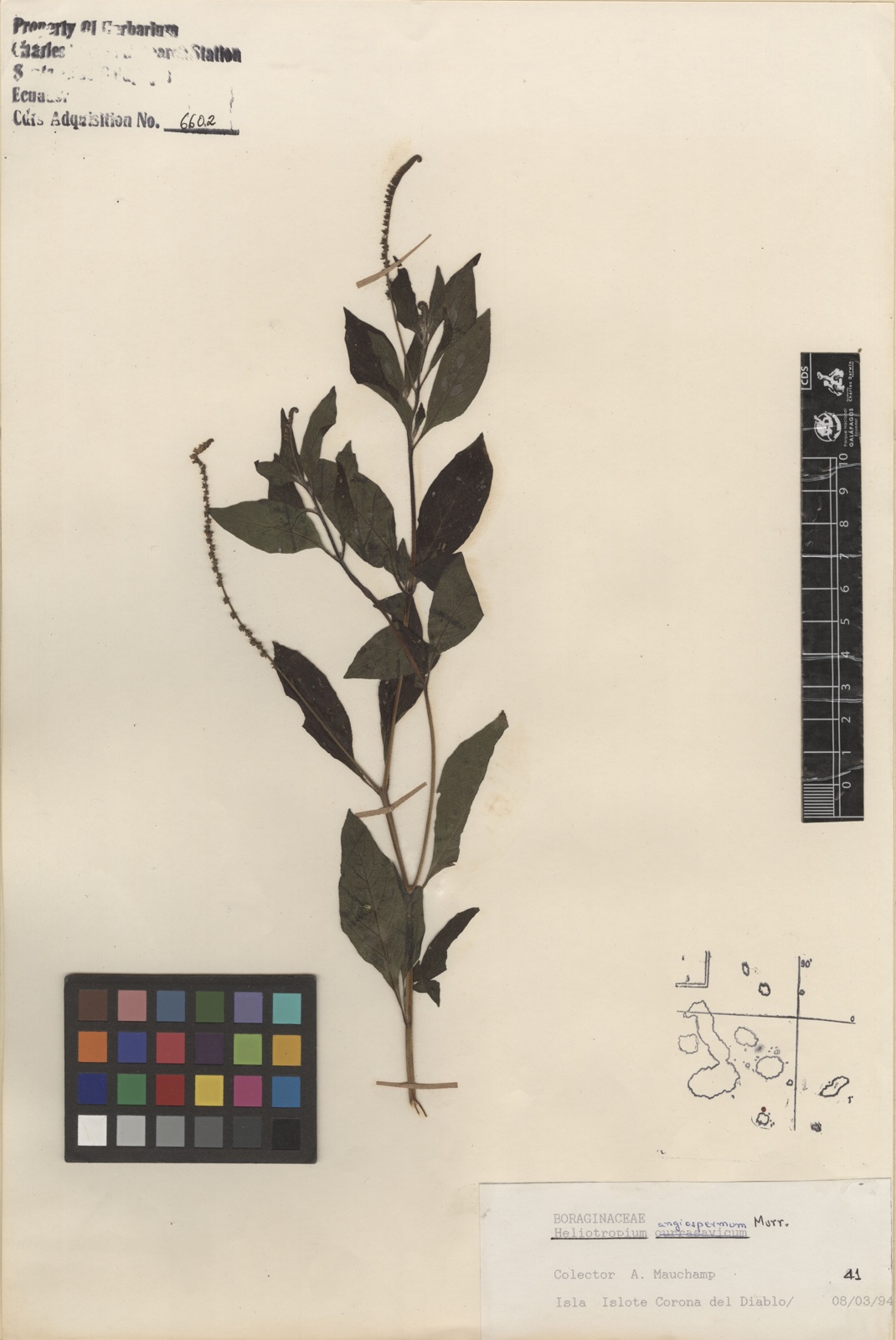
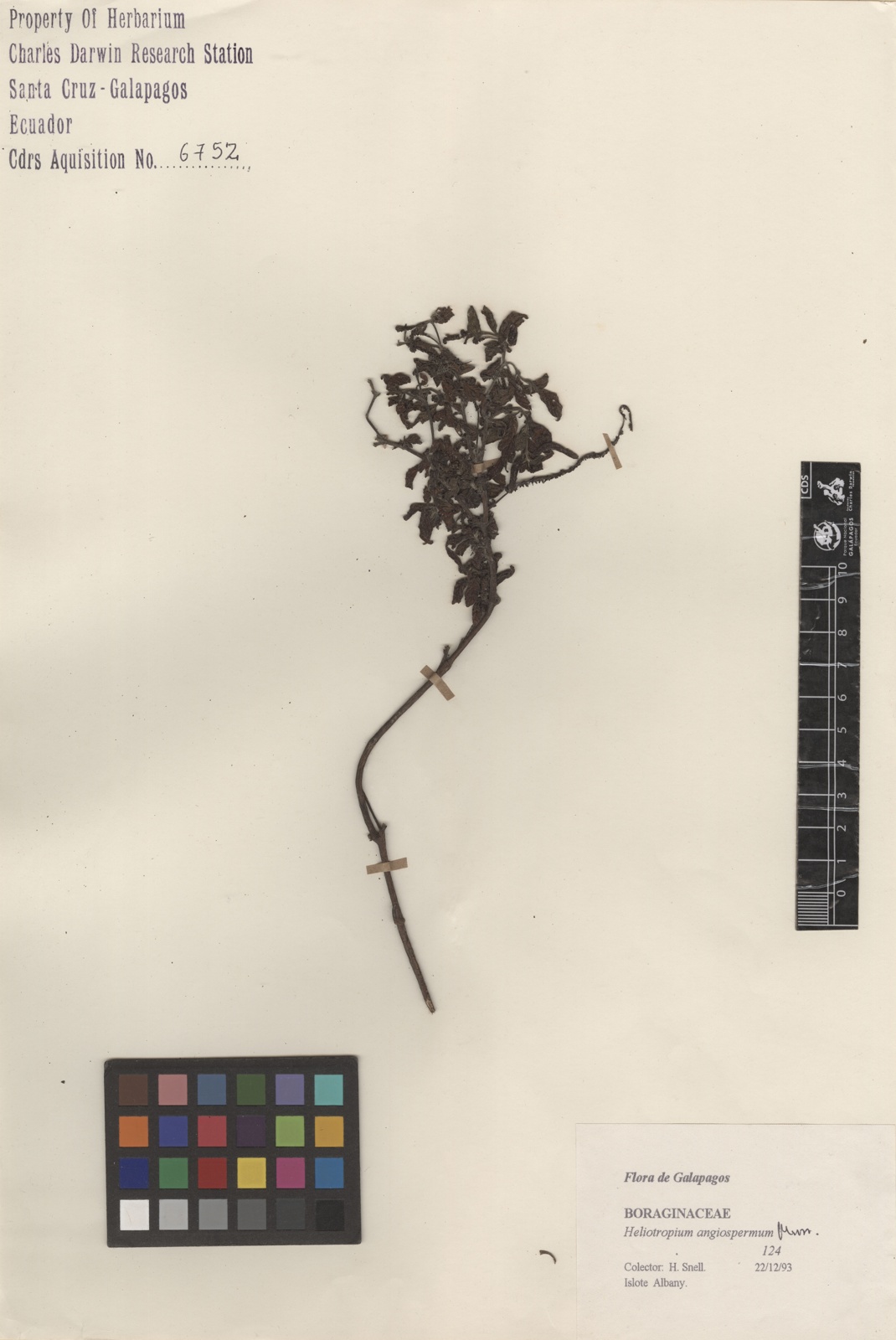
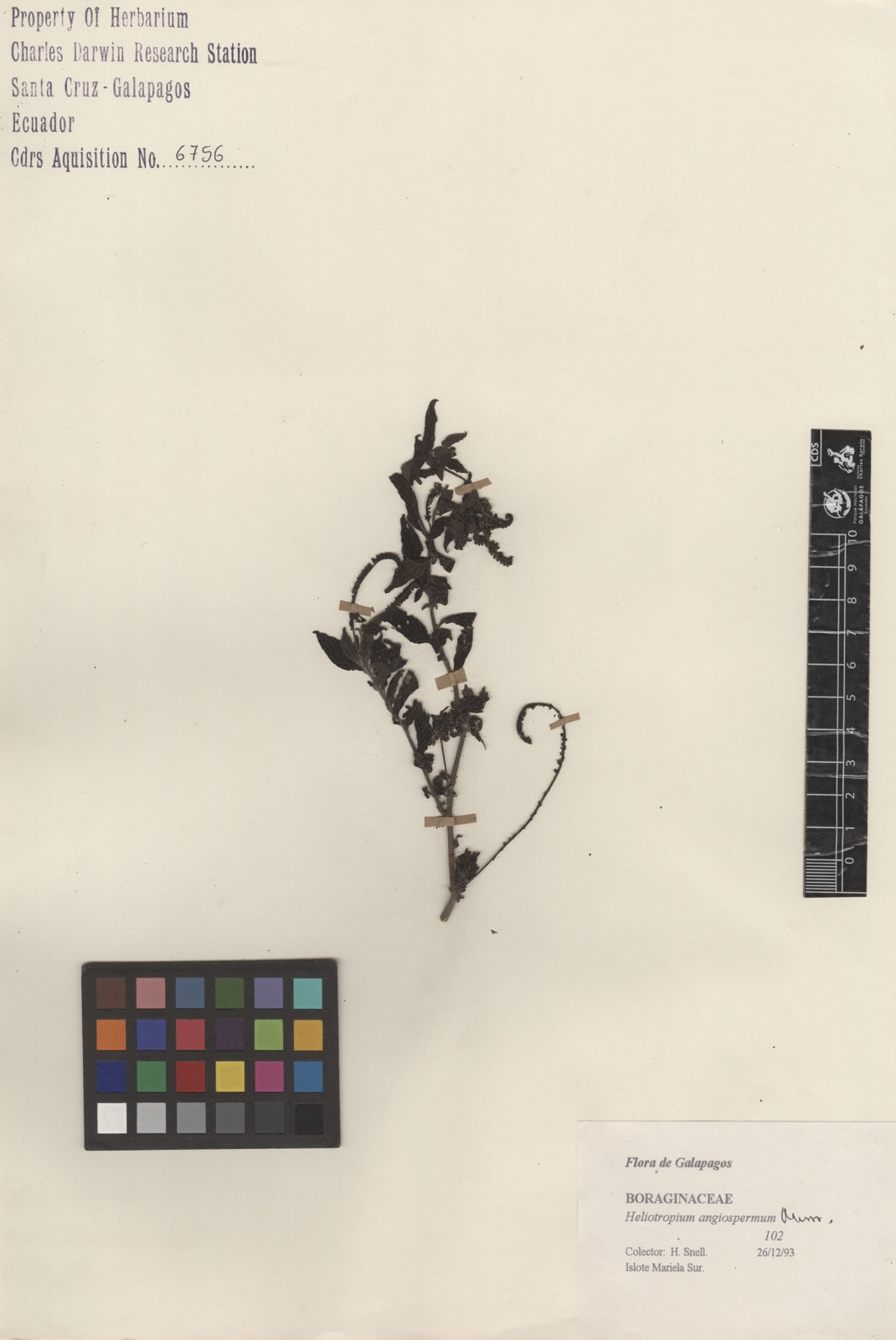
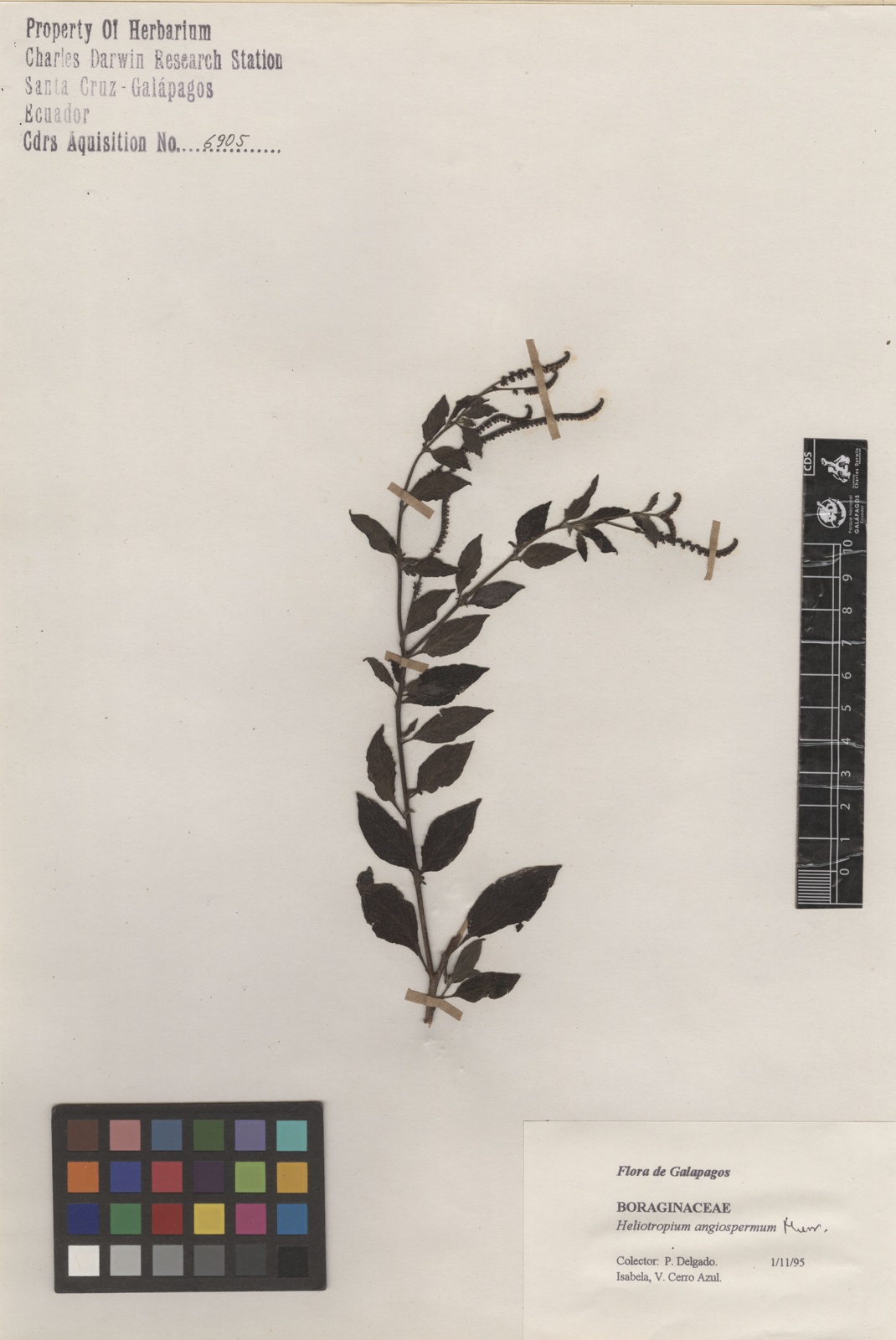

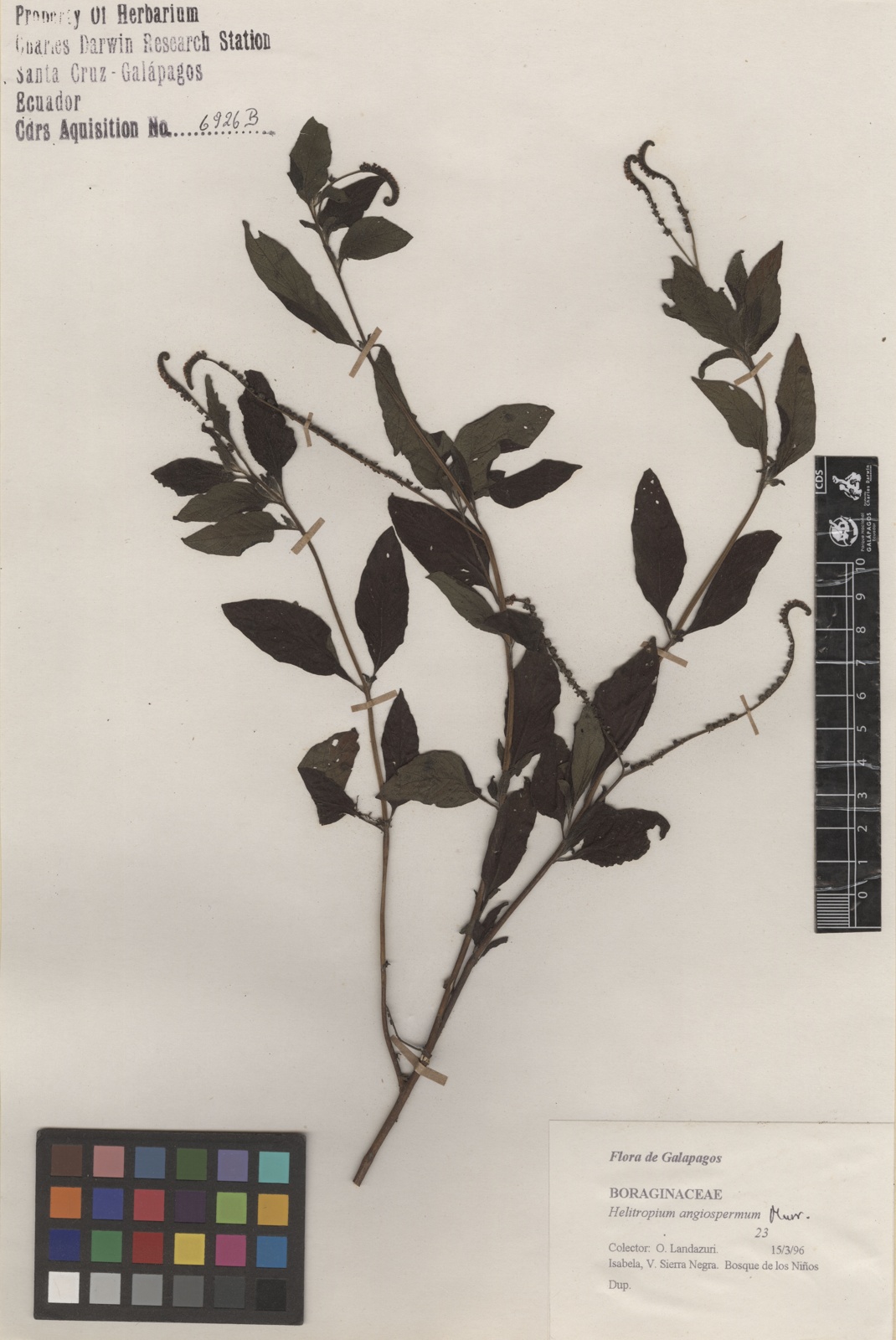
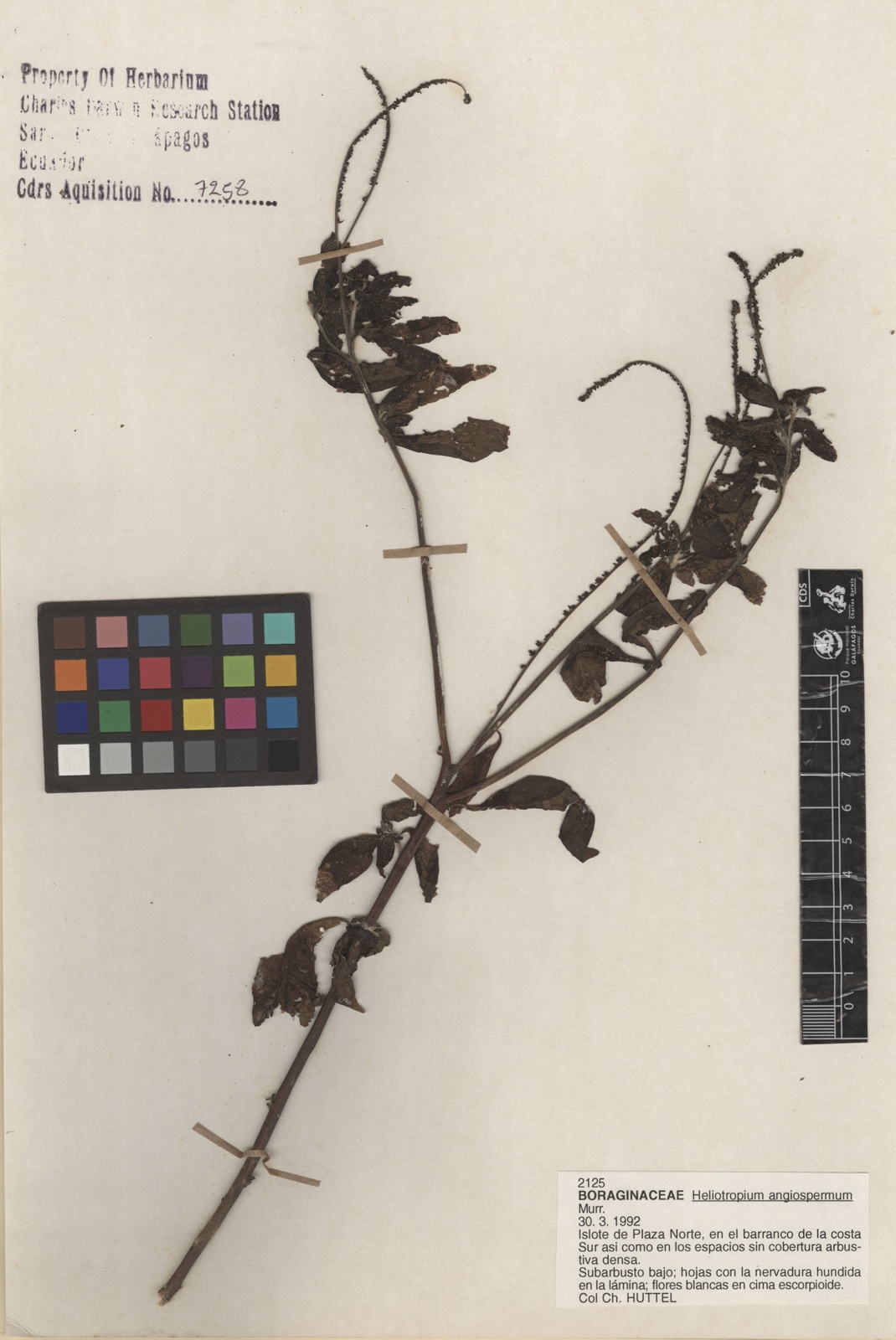

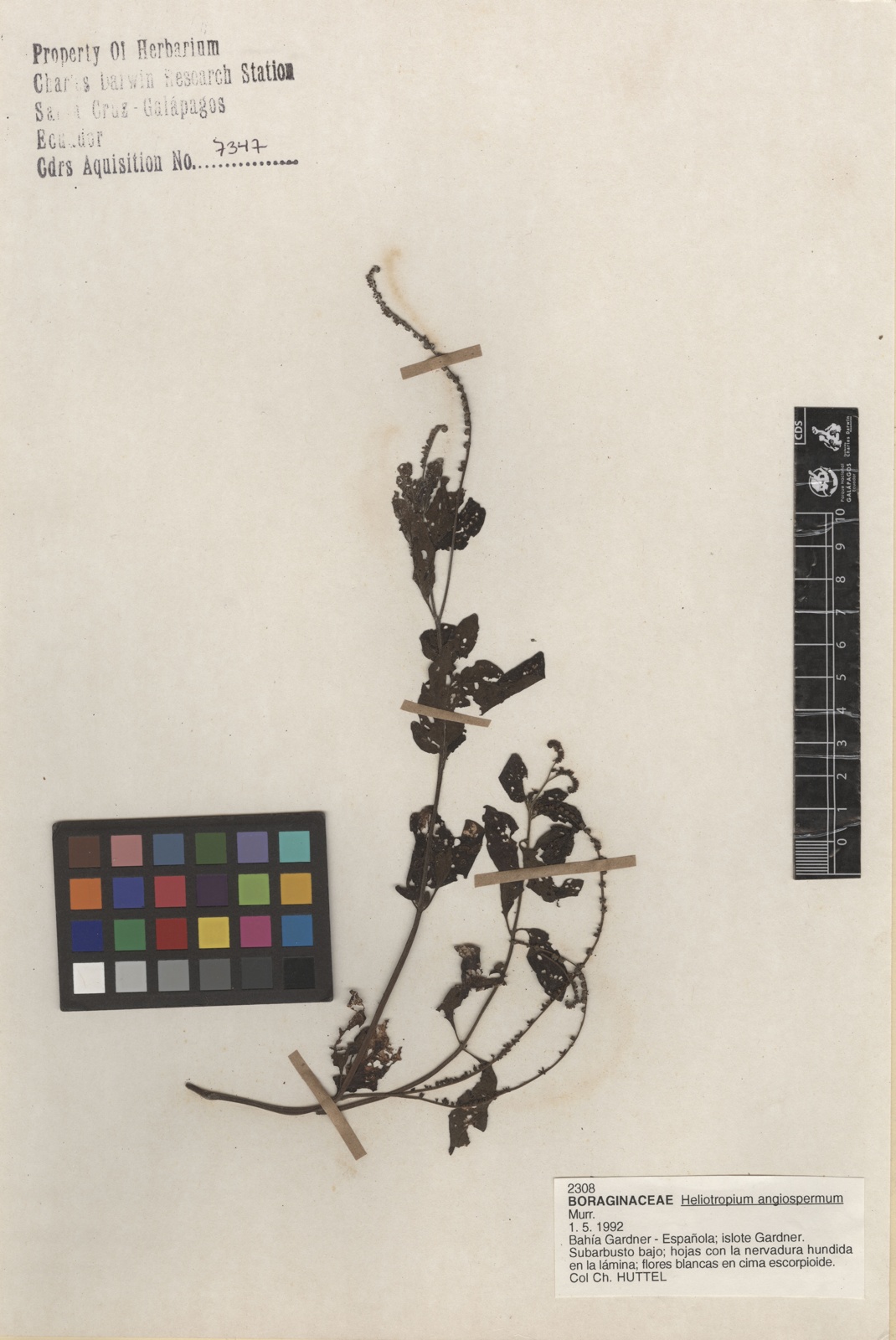
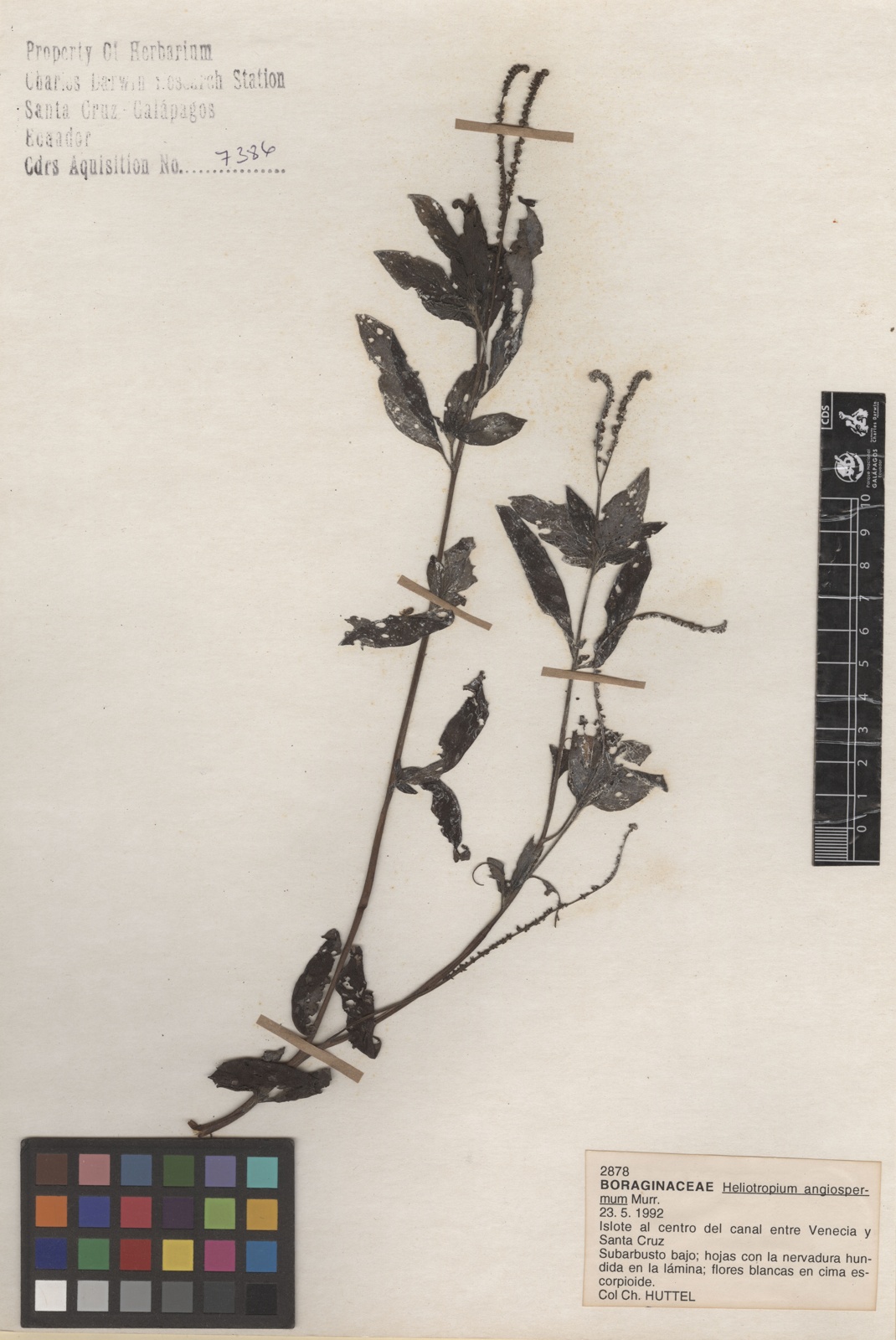

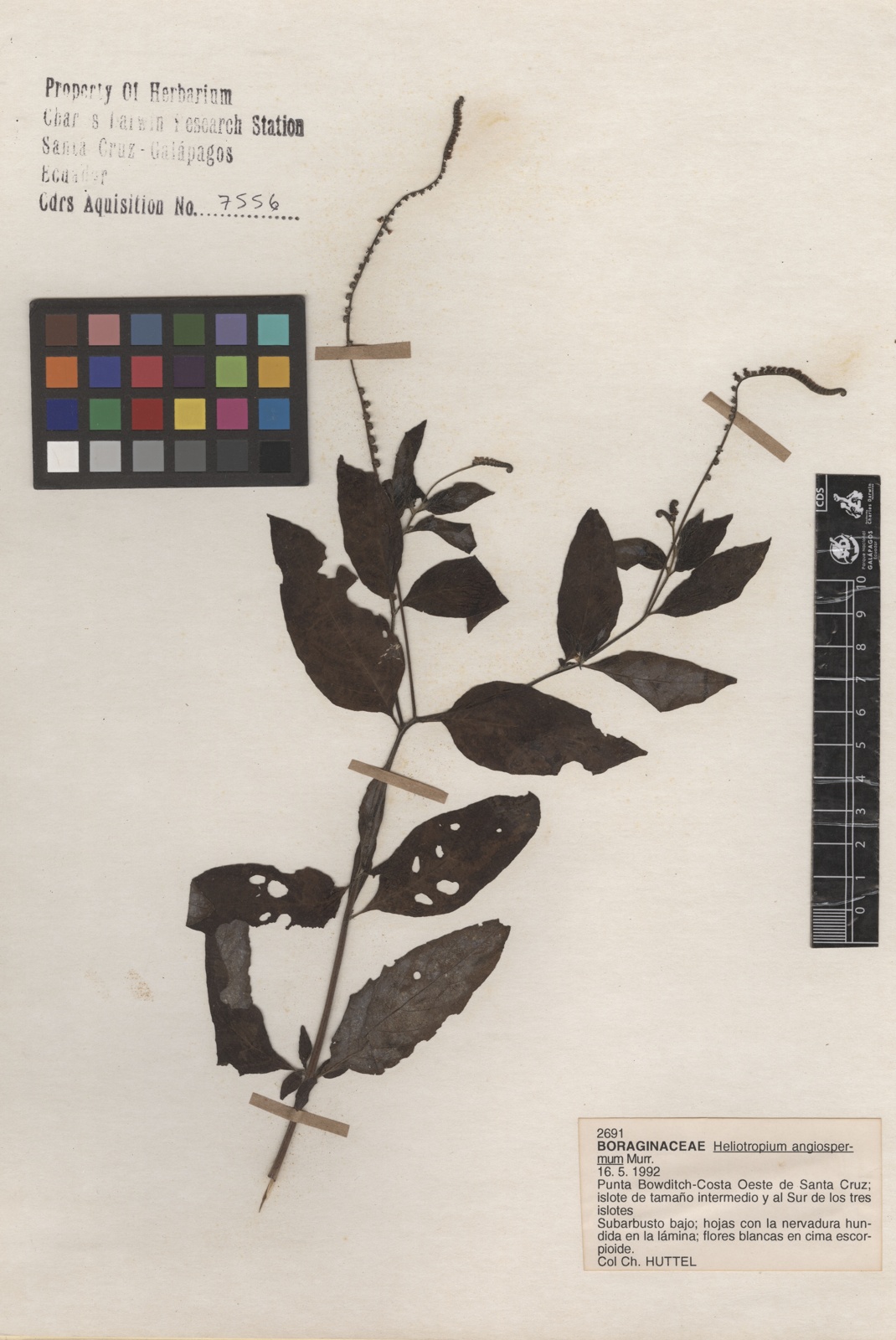
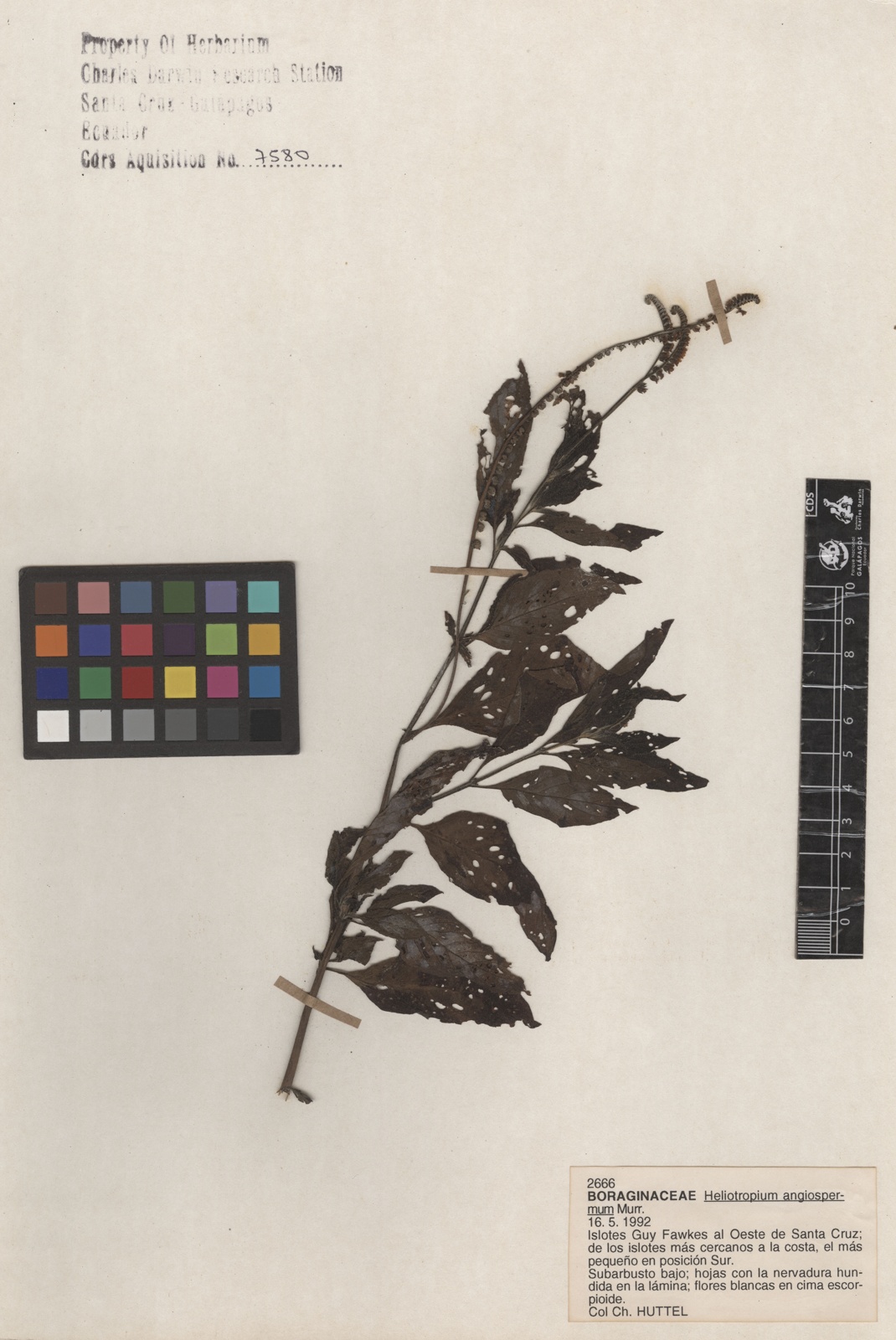
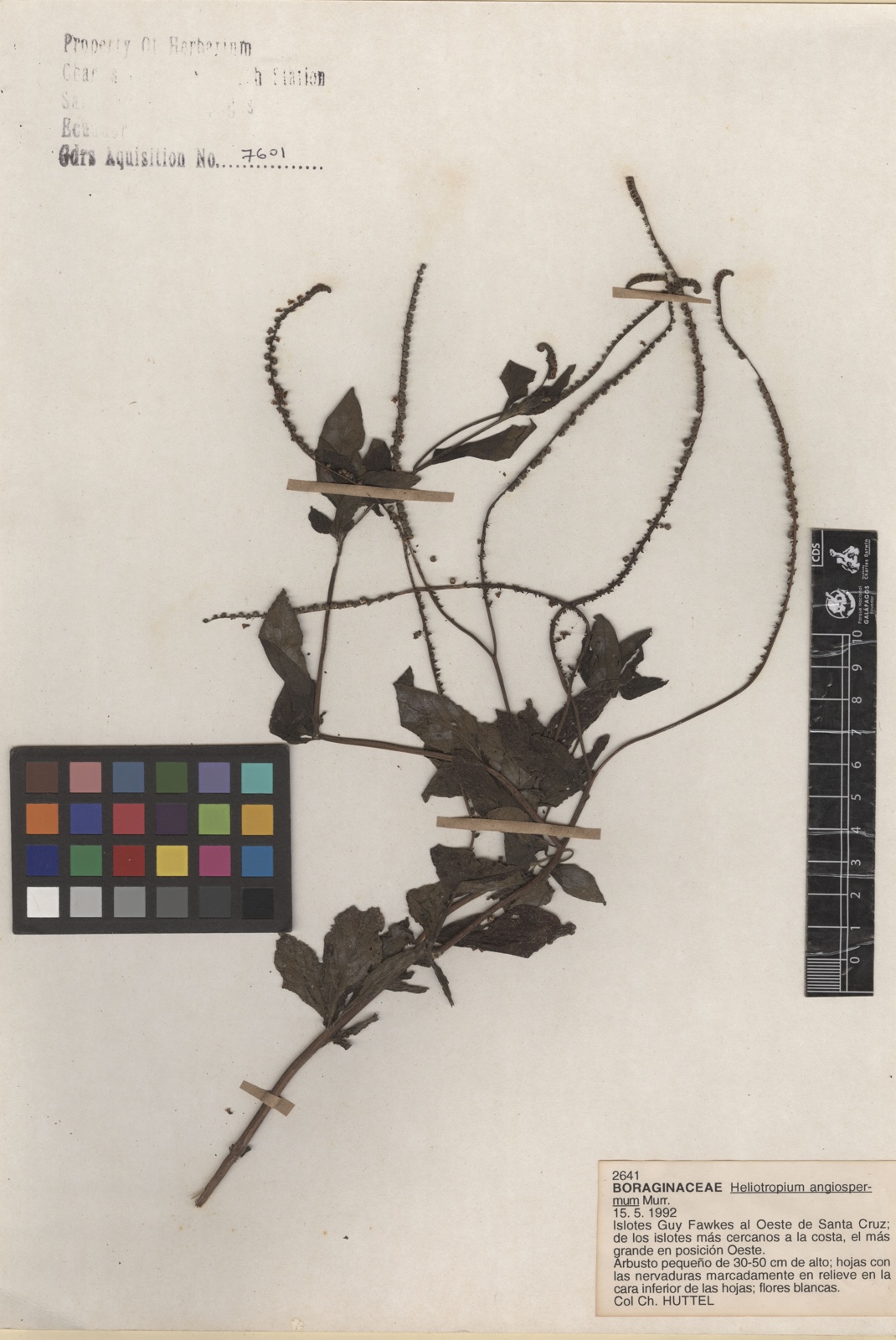
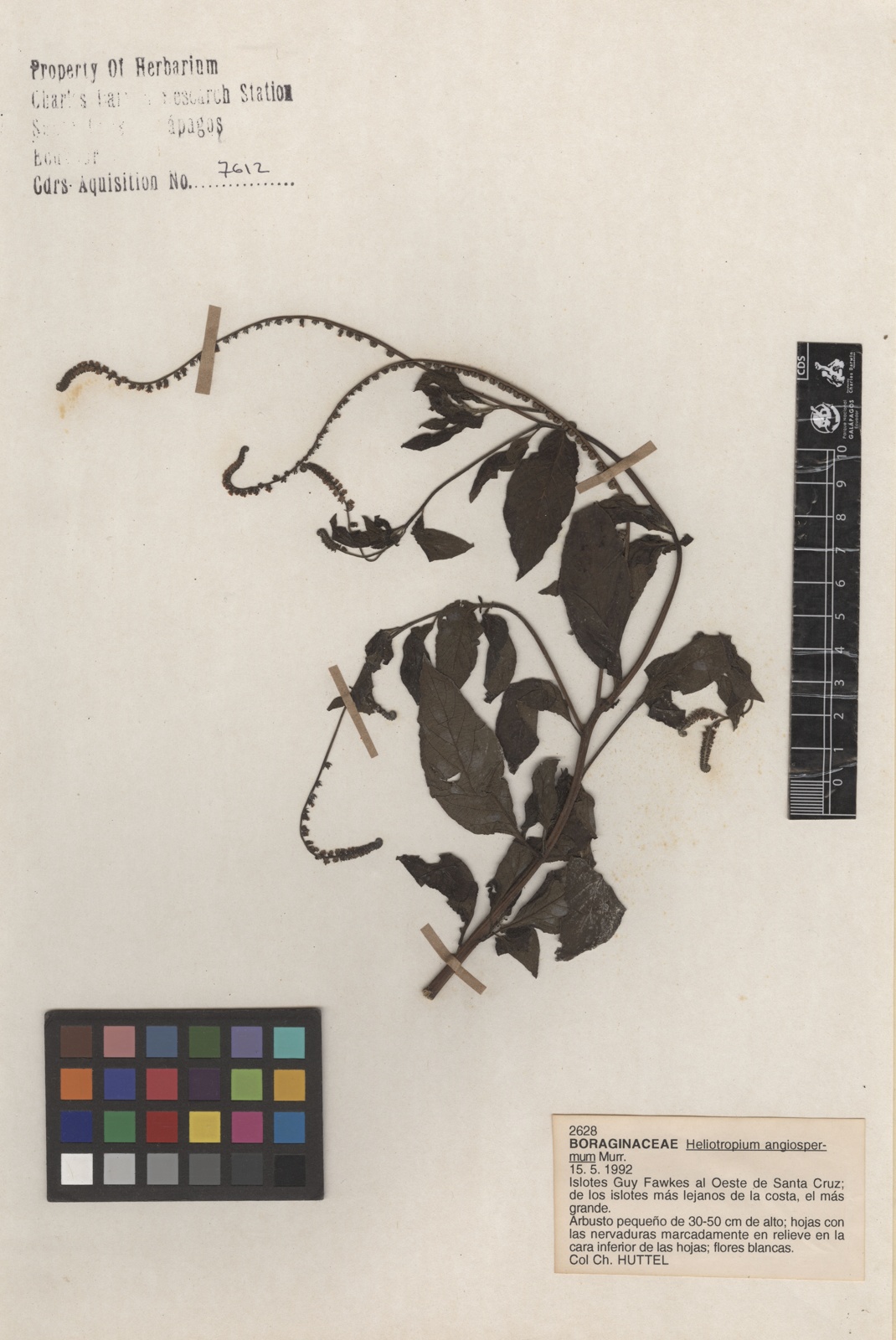
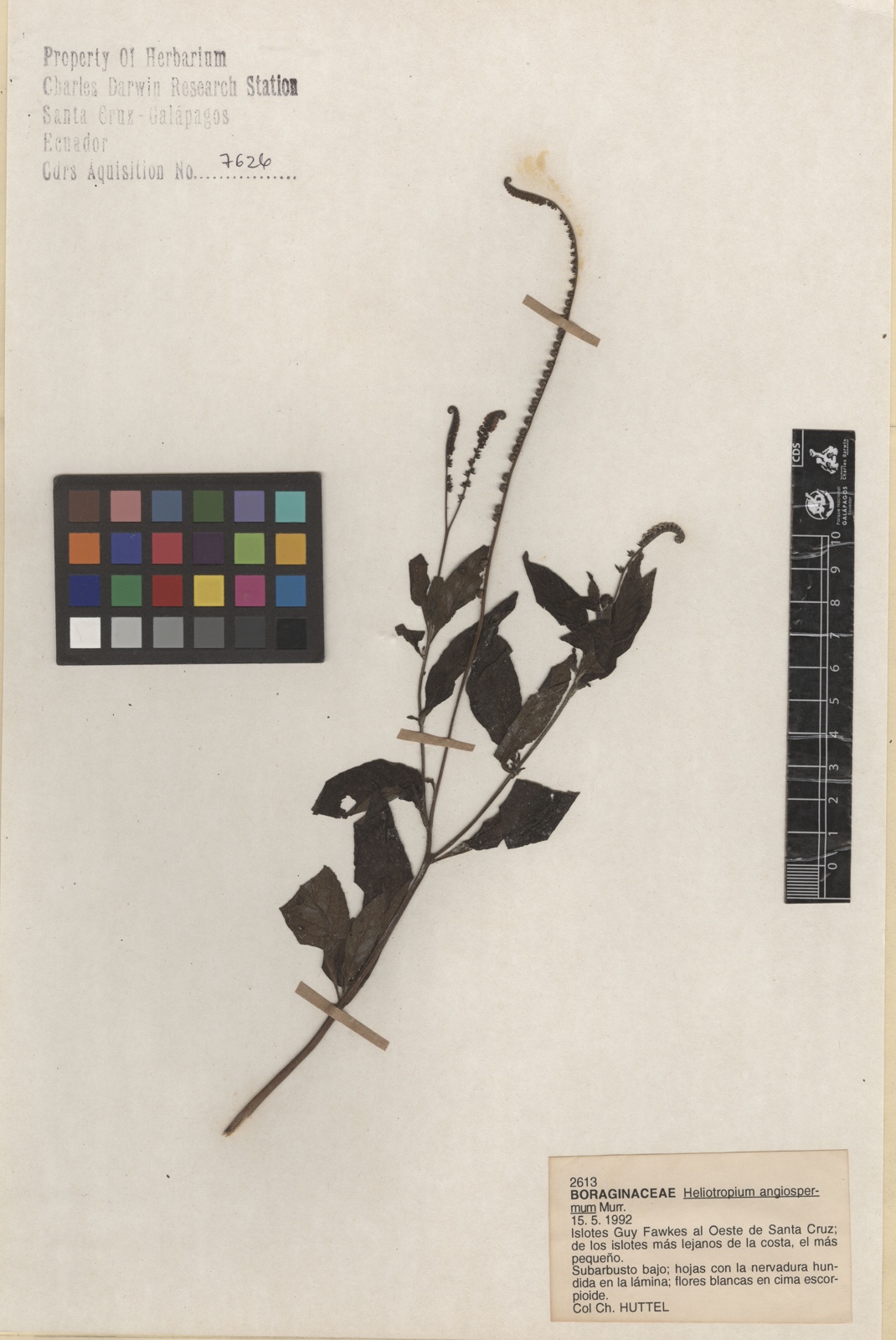
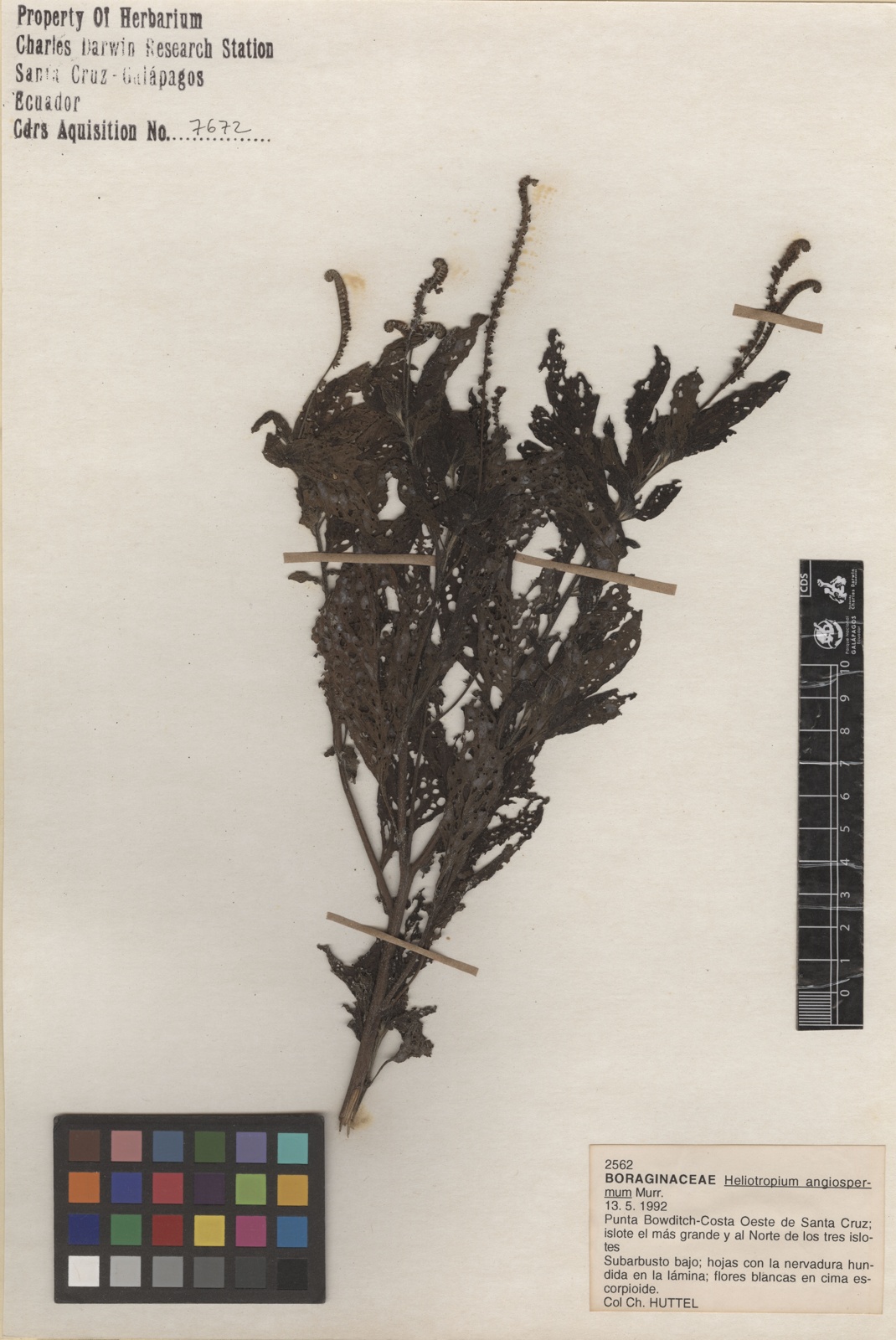
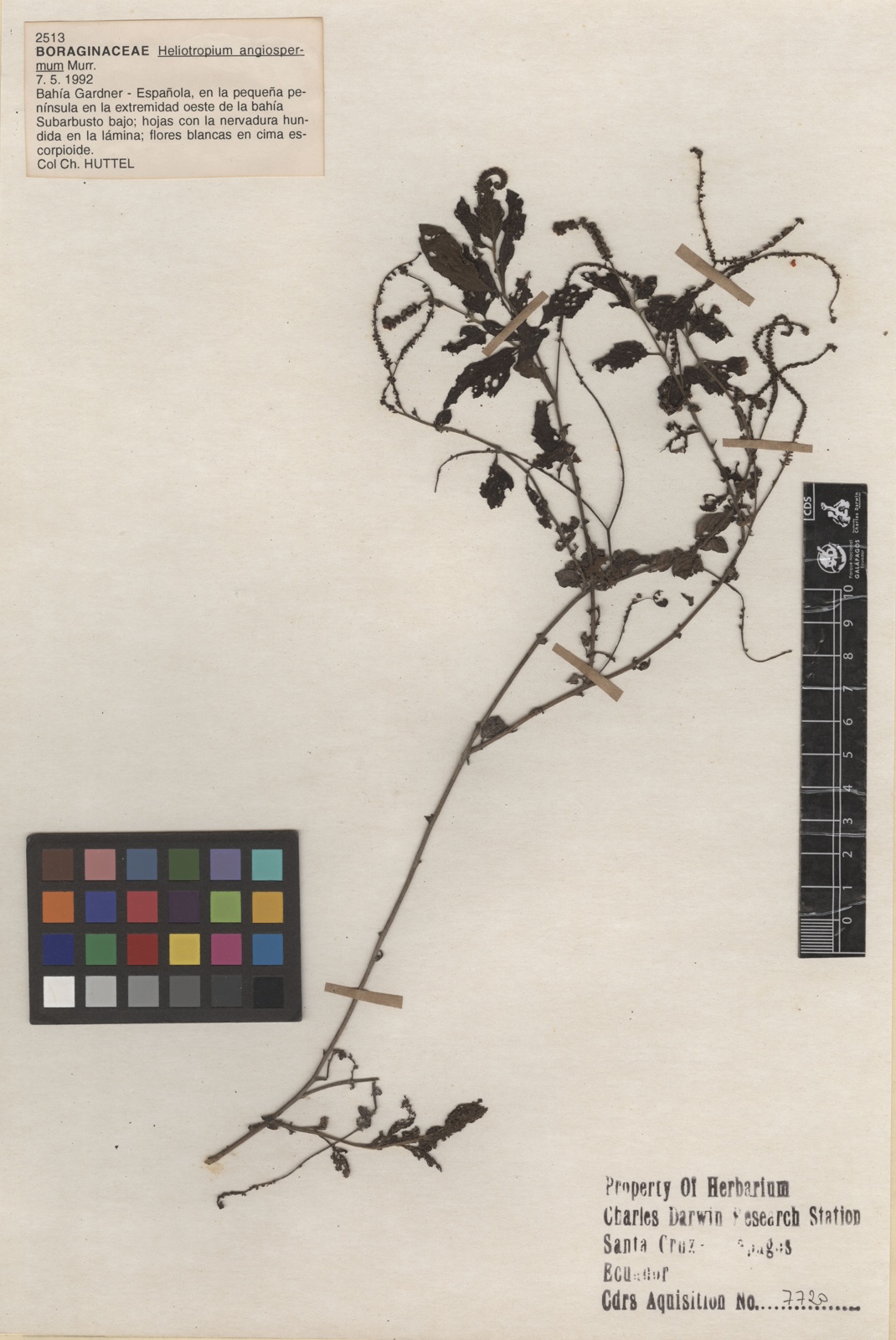
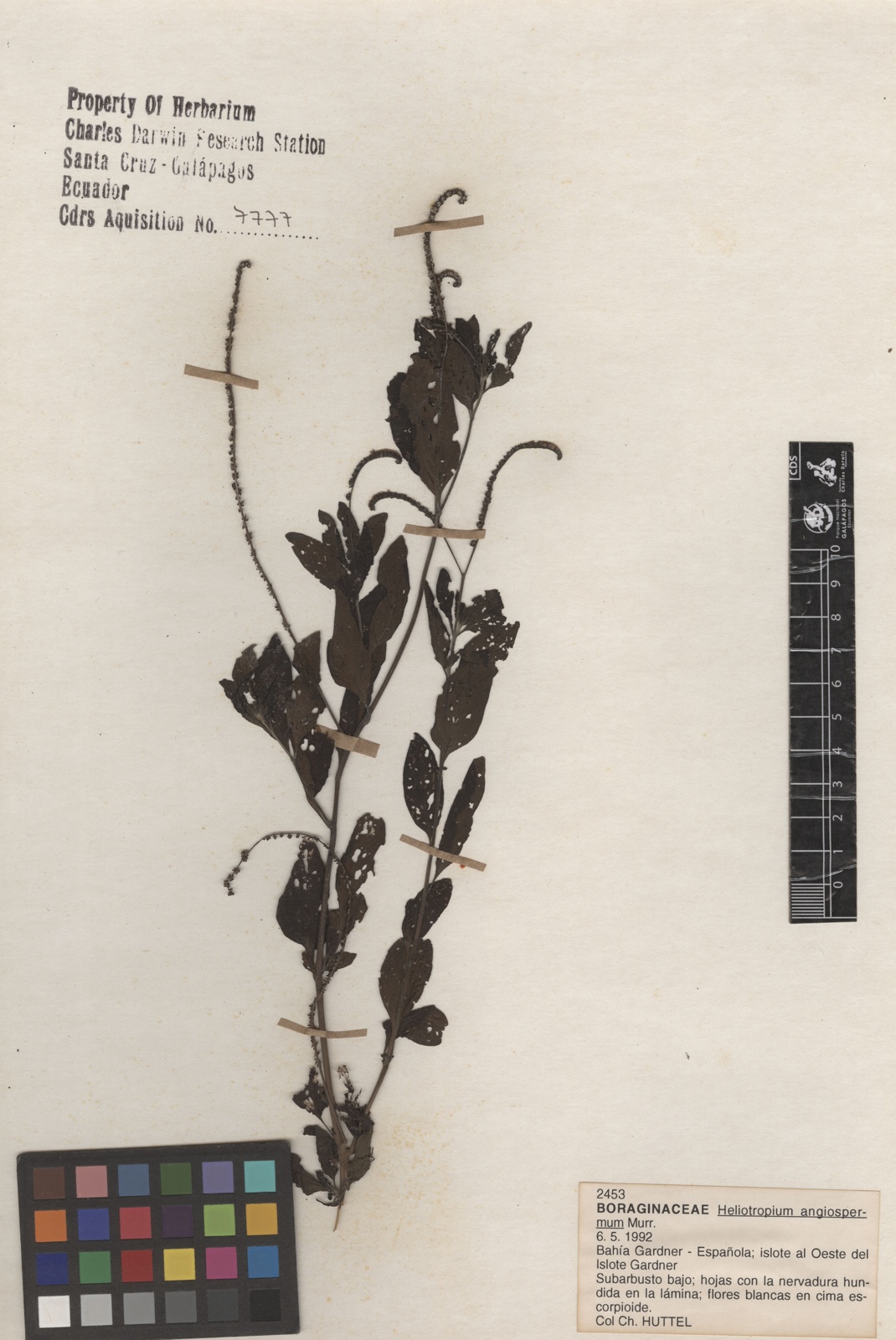
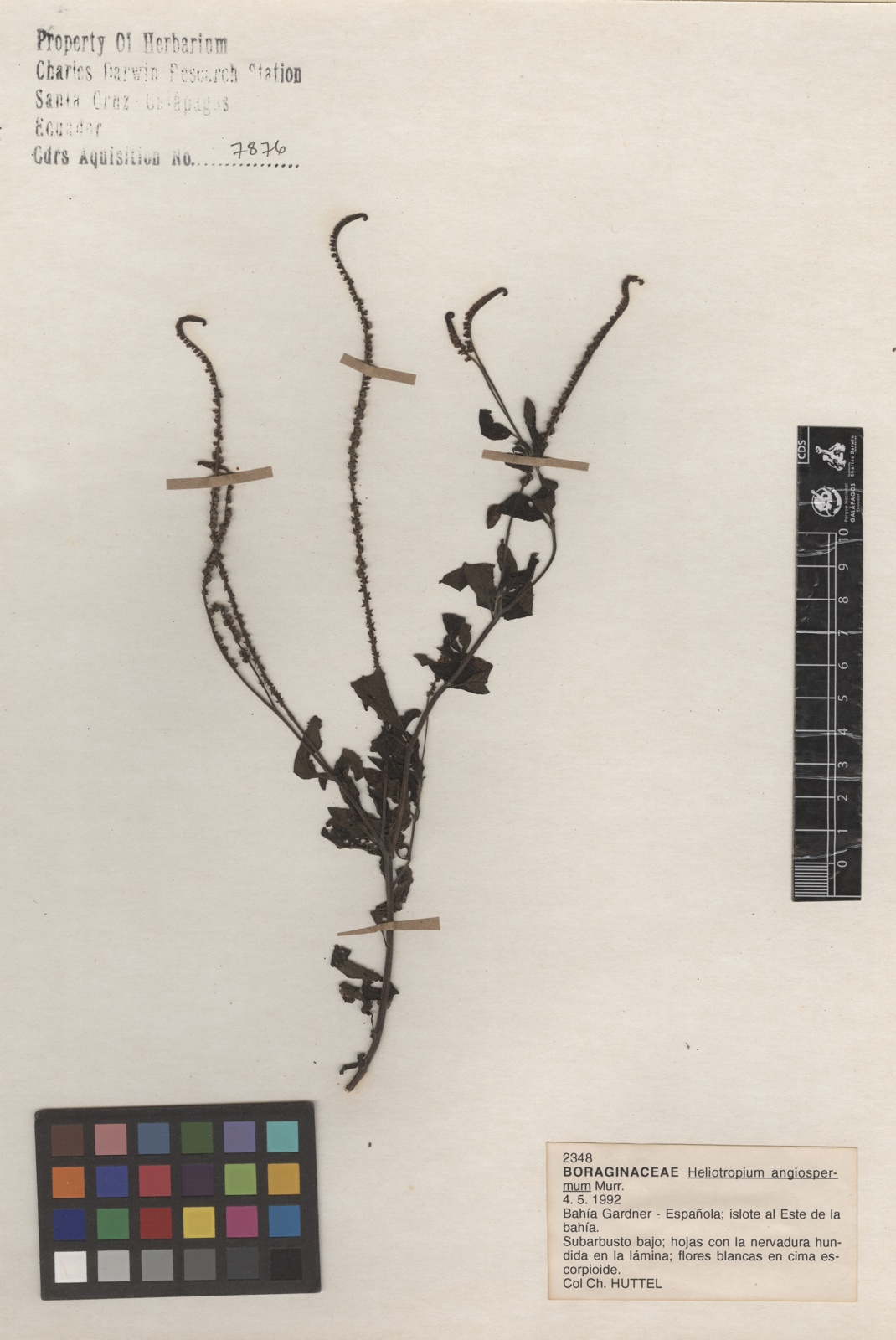
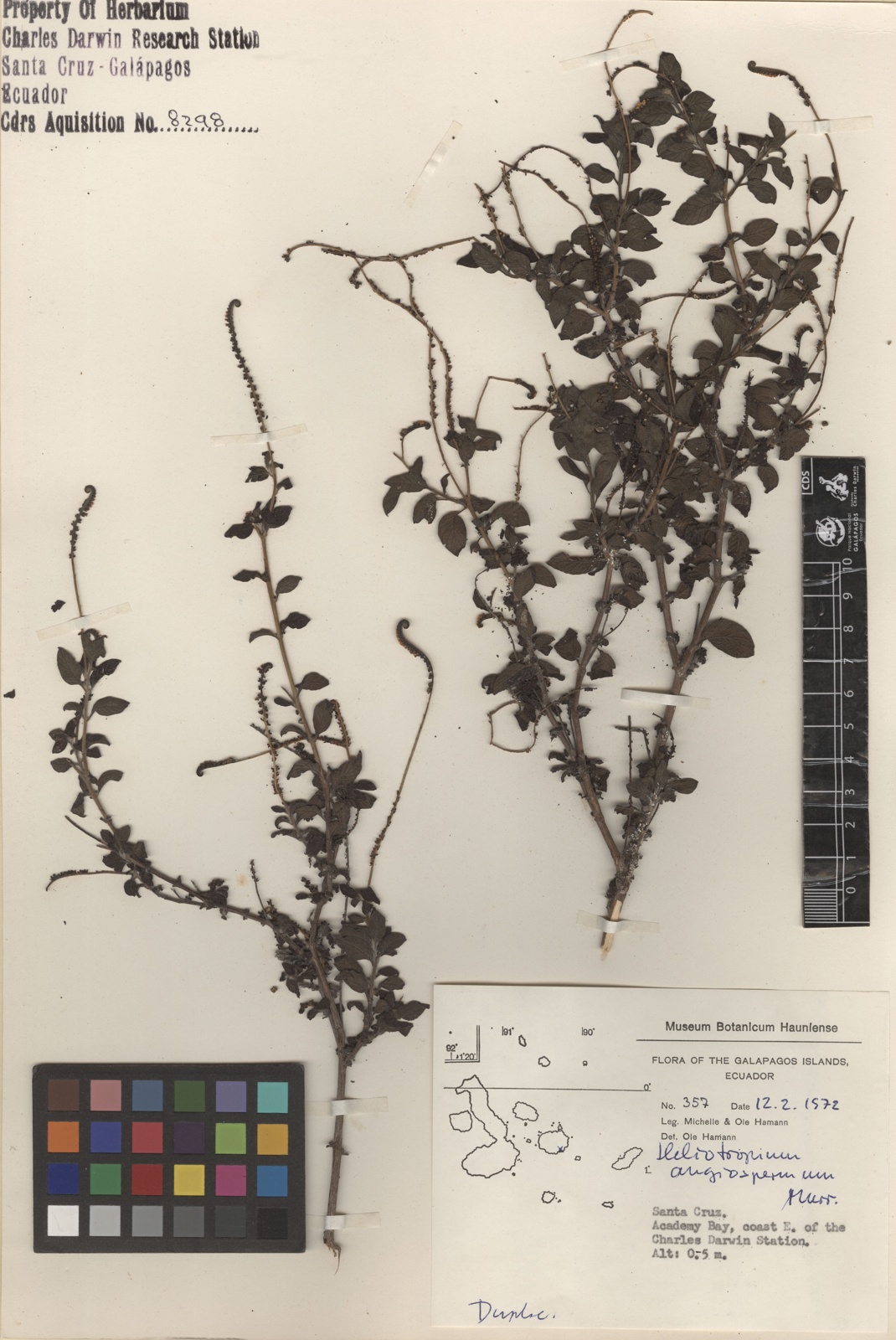
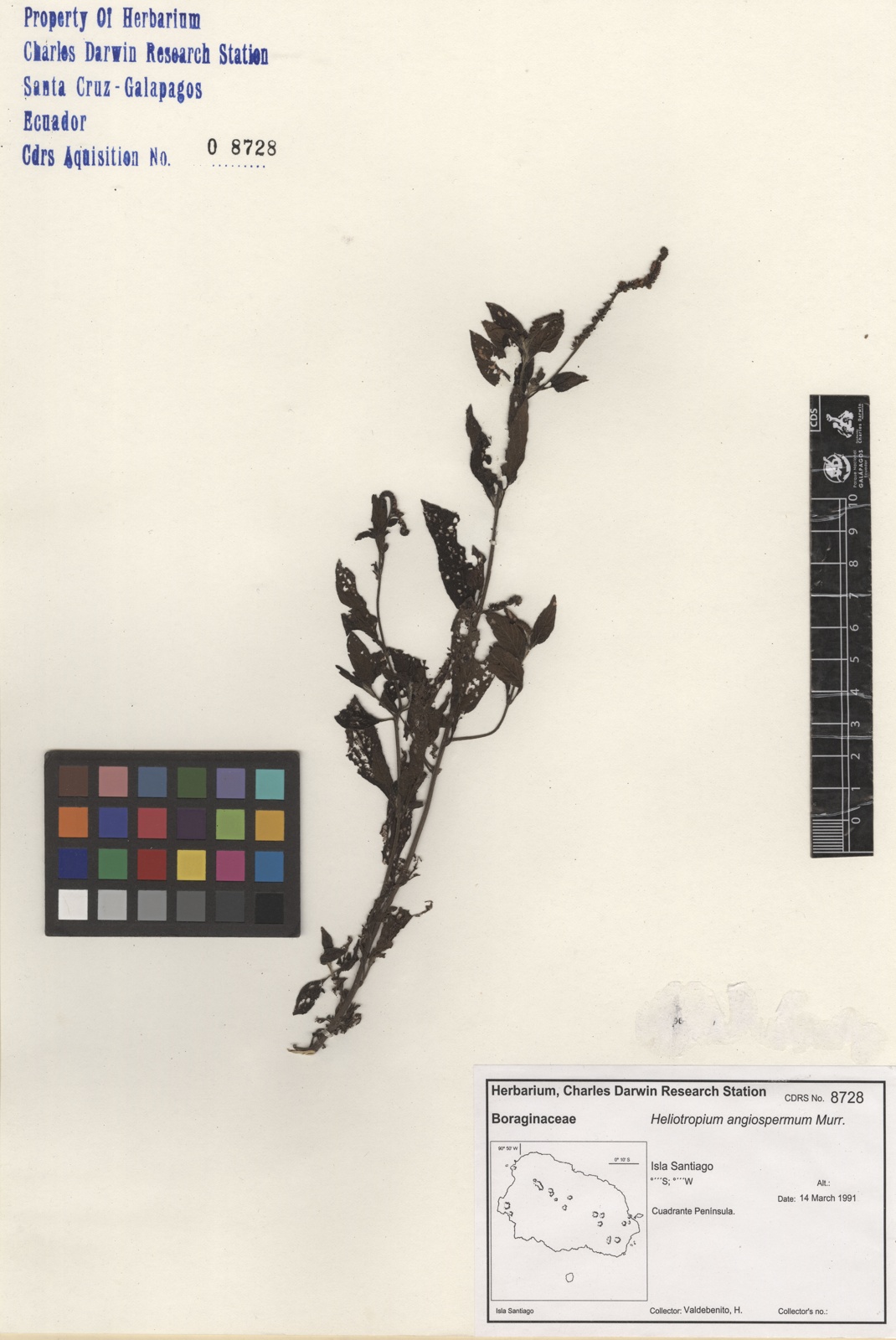

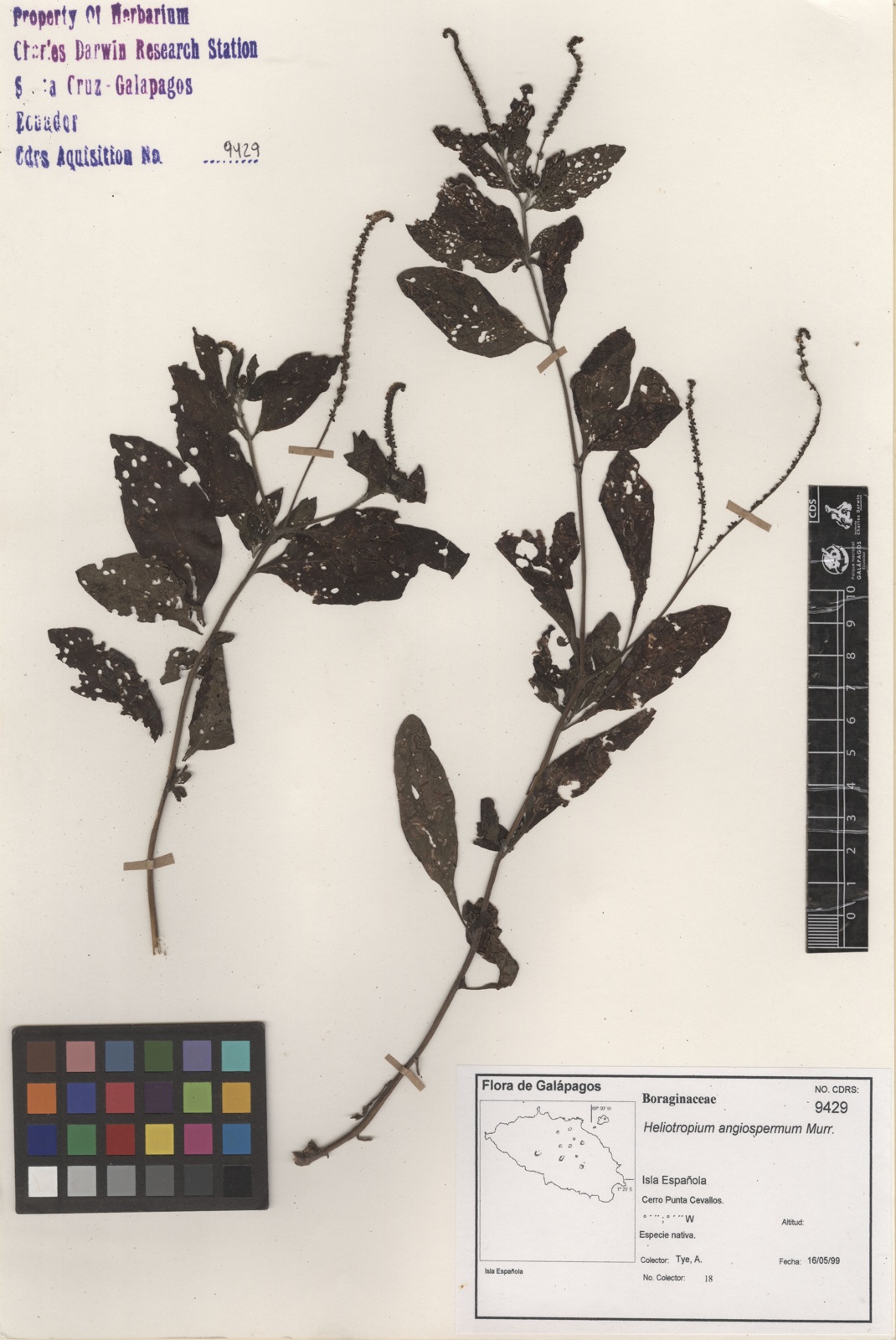
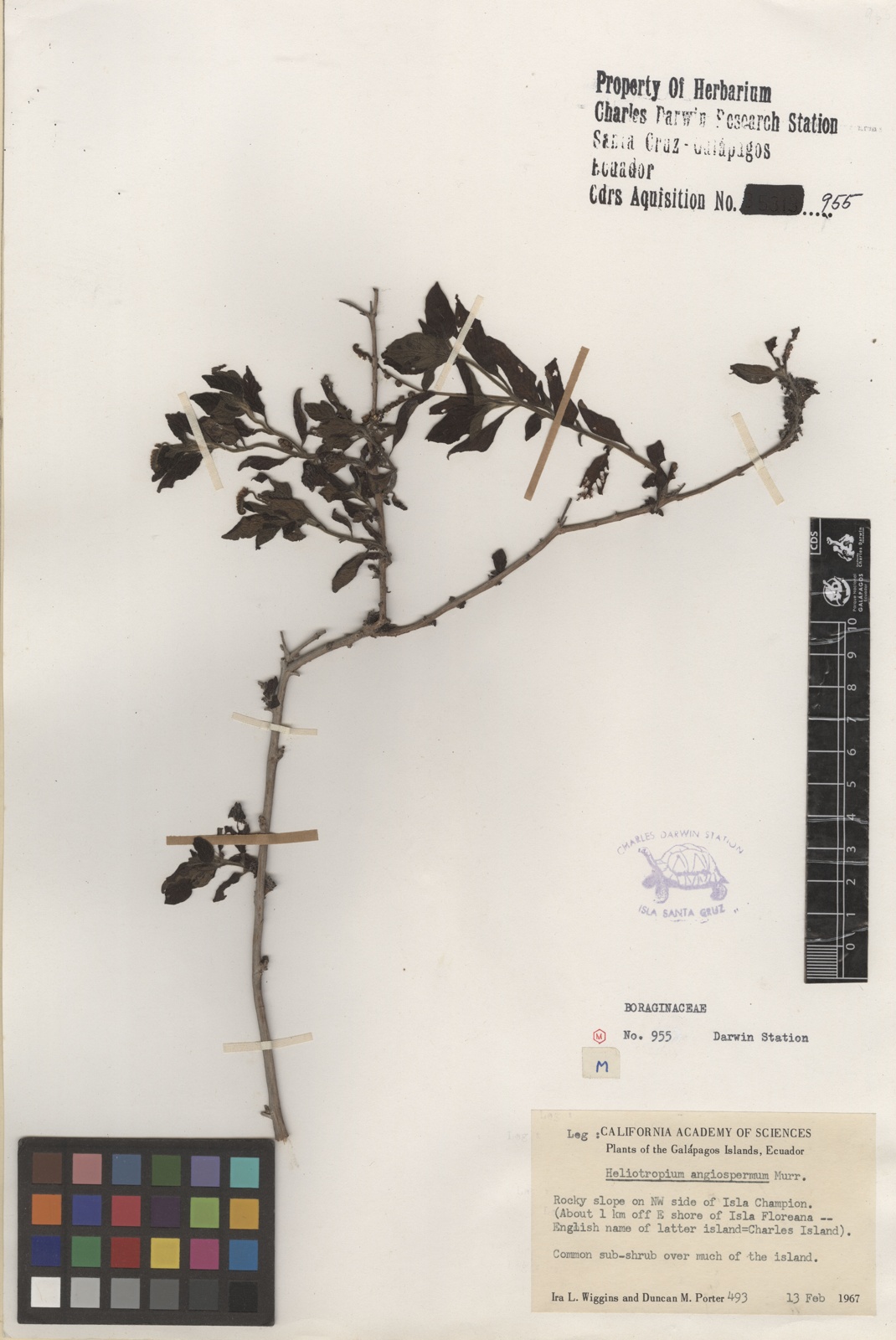

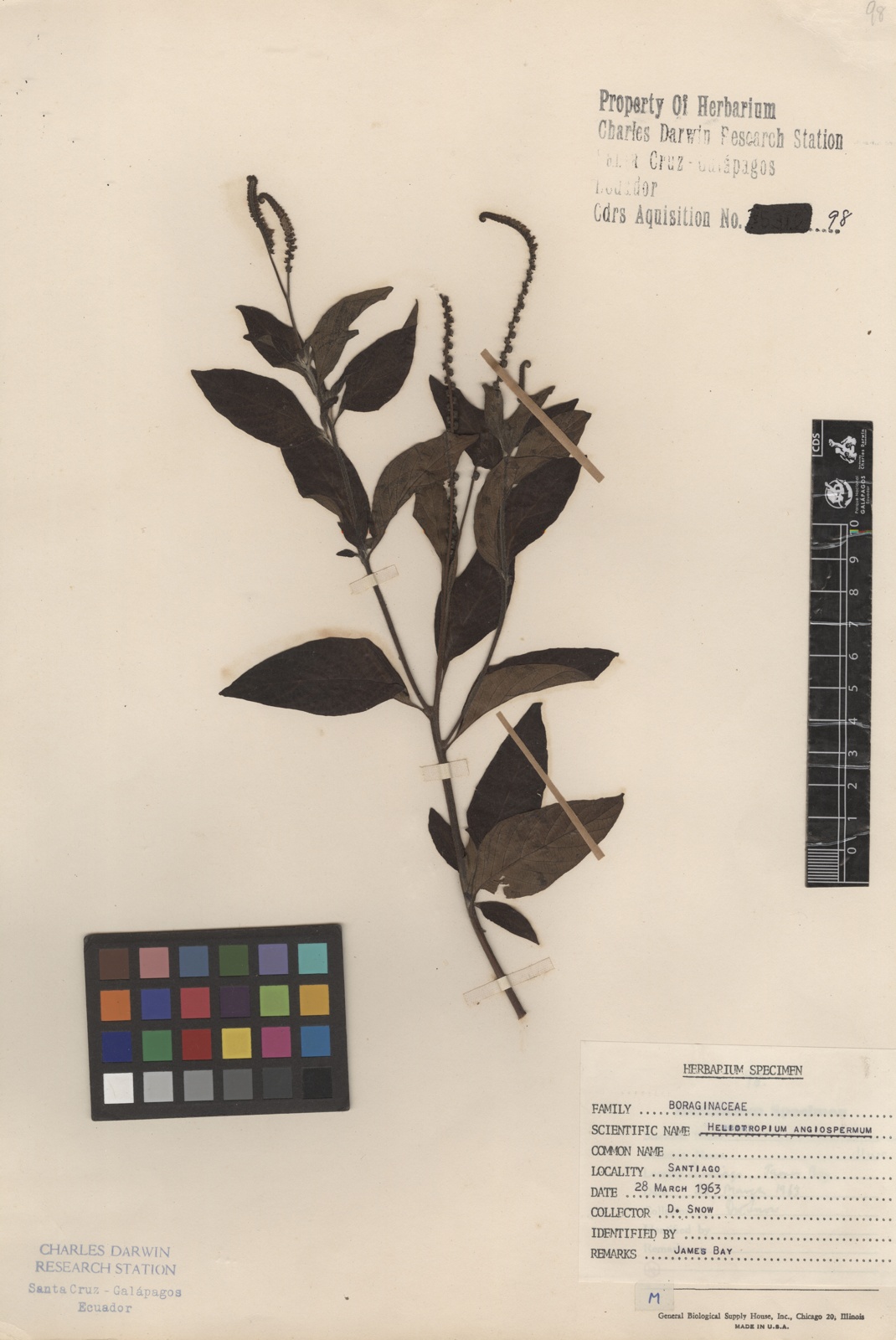

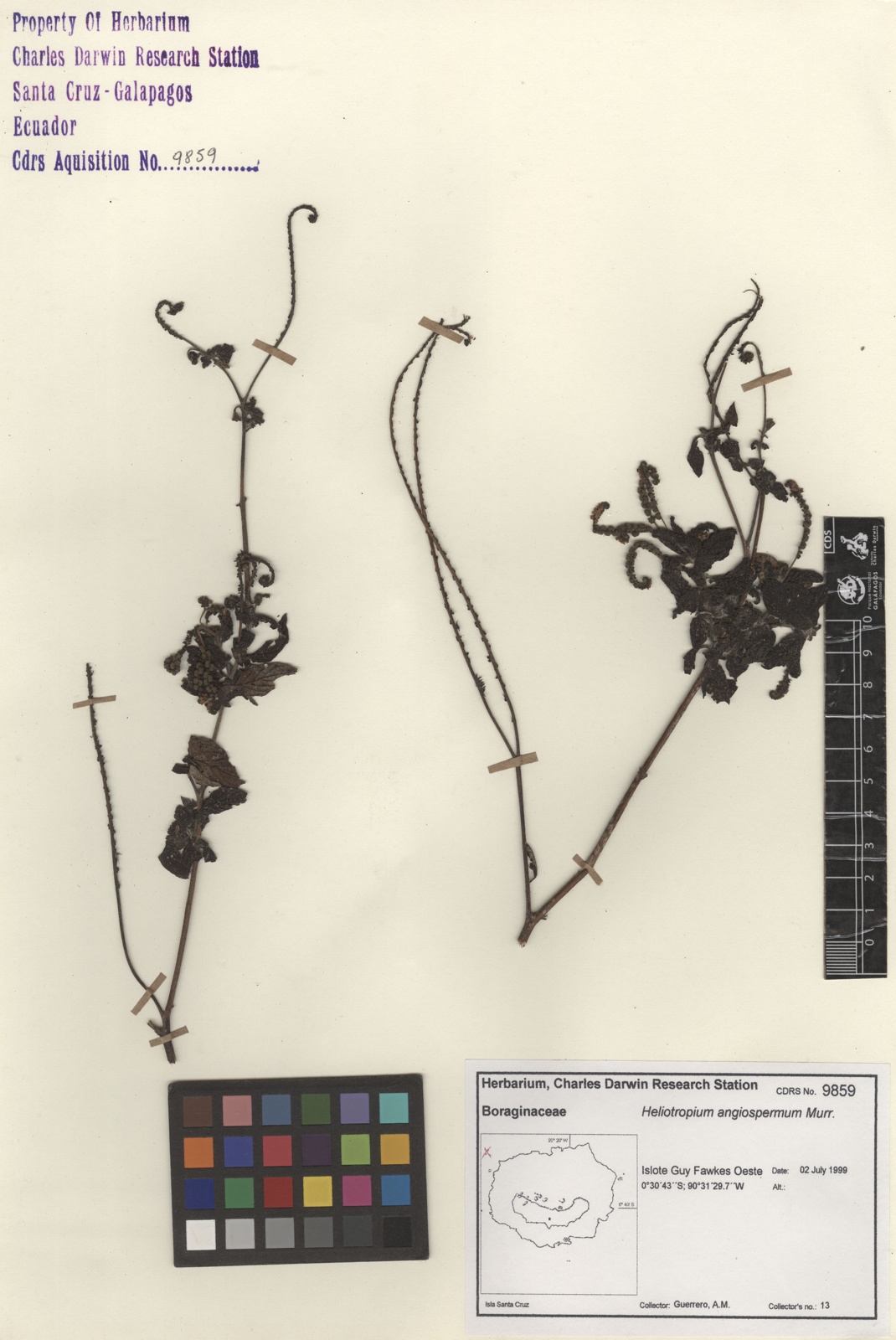
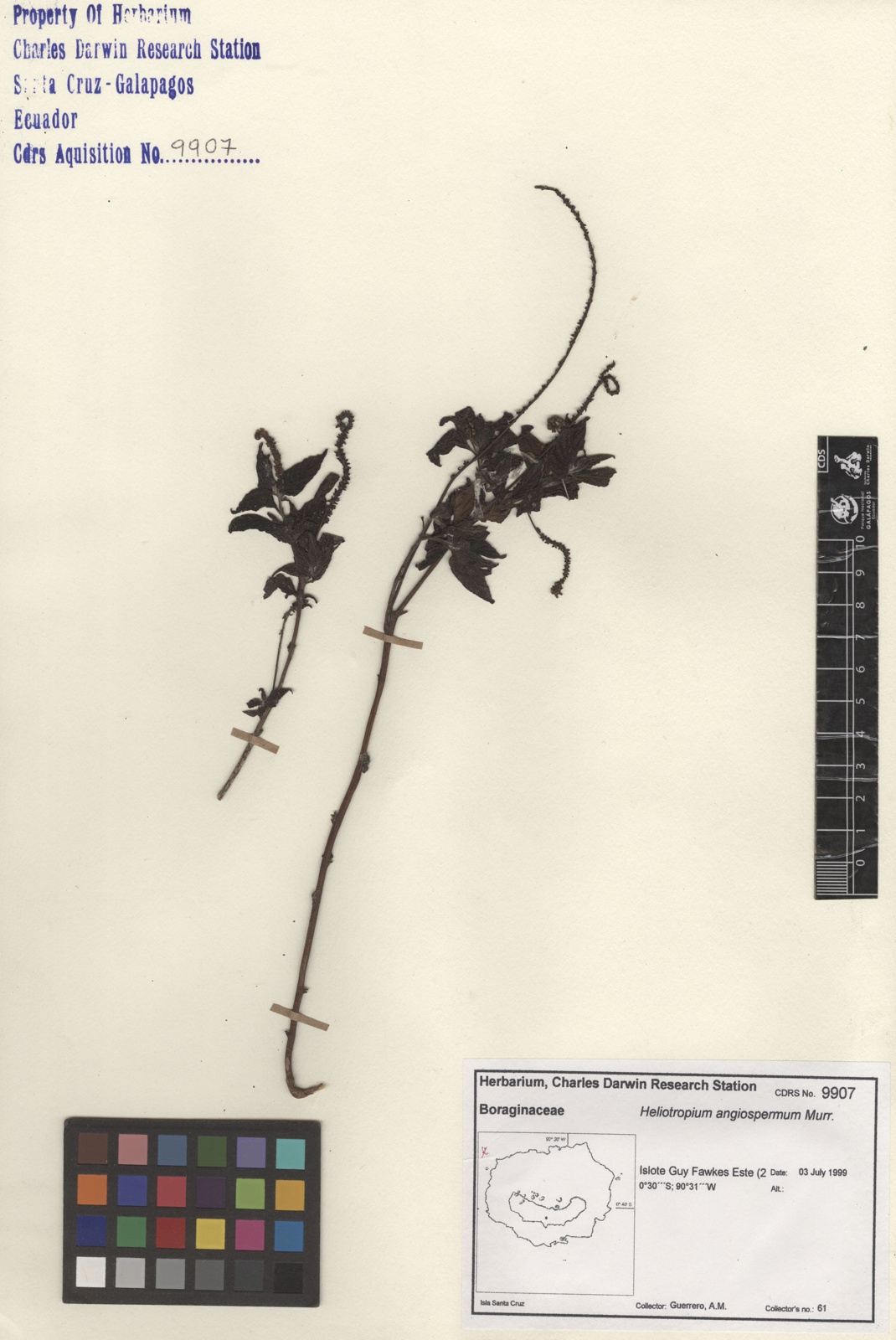

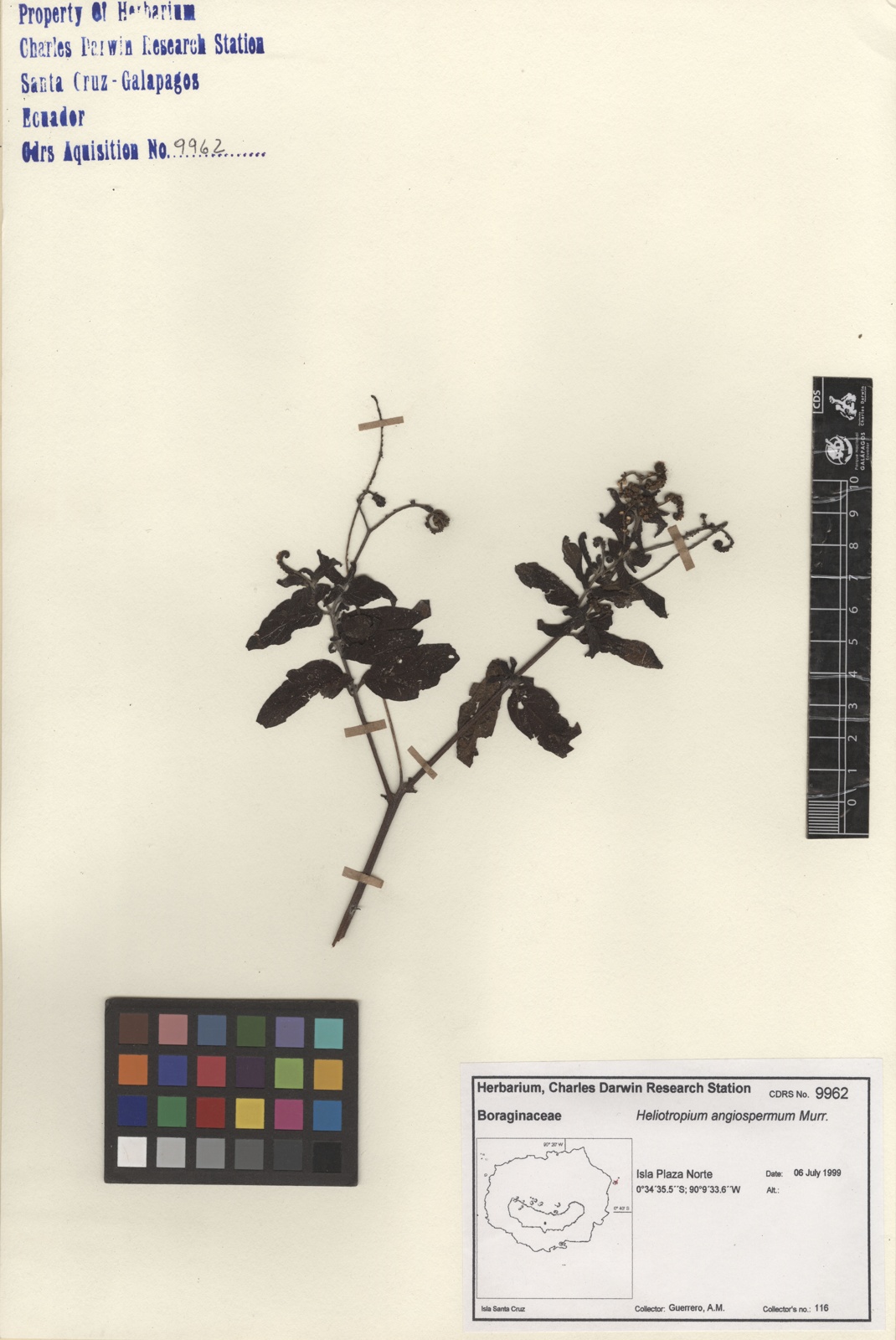
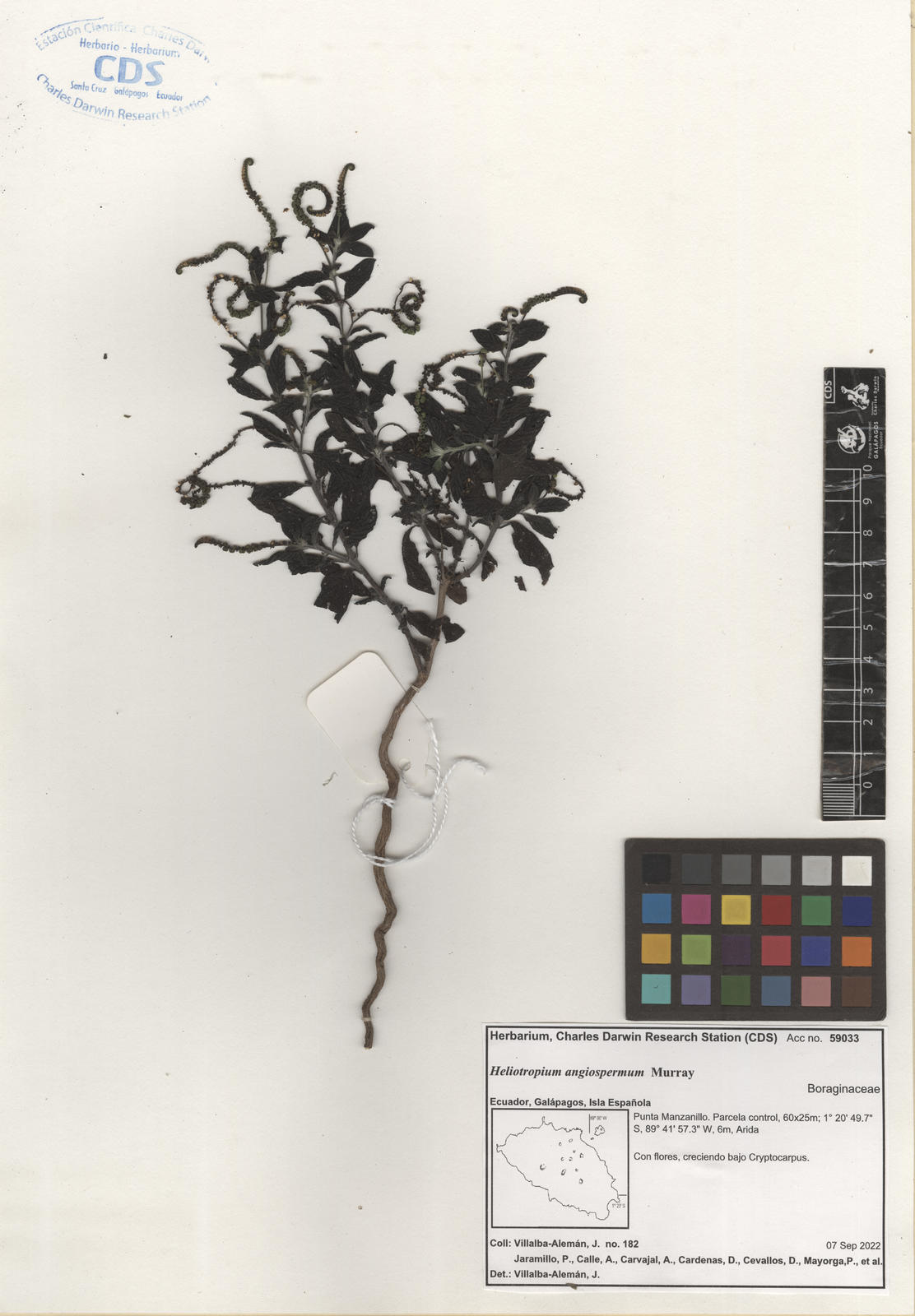

Arbusto bajo y peludo. Tiene hojas grandes de color verde y con textura arrugada. Las flores son pequeñas de color blanco, agrupadas en espiga en forma de lengua rizada (McMullen 1999).
Prefiere las tierras bajas áridas (McMullen 1999).
Dominio
Eukaryota
Reino
Plantae
Filo
Magnoliophyta
Clase
Magnoliopsida (= Dicotyledoneae)
Orden
Lamiales
Familia
Boraginaceae
Género
Heliotropium
Especie
angiospermum
Categoría de taxón: Aceptado
Syn.: Heliophytum parviflorum DC., Heliotropium parviflorum L. fide Royal Botanic Gardens, Kew & Missouri Botanical Garden (2010)
Origen: Nativa
Mapa de ocurrencias de colección o registros de observación para esta especie en nuestra base de datos de colecciones.
Distribución: El rango nativo de esta especie es América tropical y subtropical (POWO, 2023).
- Wiggins, I.L. Porter, D.M. (1971) Flora of the Galapagos Islands Standford University Press, Stanford.
- Adsersen, H. (s.a.) Field notes, 1974 and 1977 collections Charles darwin Research Station, unpublished Manuscript.
- Lawesson, J.E. (s.a.) Pers. obs. field notes, collections 1985-7.
- Schofield, E.K. (1984) Plants of the Galapagos Islands. Field Guide and Travel Journal. Universe Books, New York, 159 pp.
- Abbott, I. Abbott, L.K. (1973) New distribution records of 65 plant species within the Galapagos Archipelago. Charles Darwin Research Station (CDRS), unpublished.
- Chavez, J. (1993) Diagnostico de la Agricultura y la Ganader¡a en la Provincia de Galapagos. Tesis.
- Mauchamp, A. (1995) Informe de viaje de campo a Darwin y Wolf. Inventario sistematico de la flora y fauna de las islas. Charles Darwin Research Station, unpublished.
- Jaramillo, P. (1998) Distribución Espacial de la Vegetación Vascular y Dispersión de Especies Introducidas dentro del Parque Nacional Galápagos. Tesis de Doctorado en Biología, Universidad Central del Ecuador. Especialización ECOLOGIA DE POBLACIONES.
- McMullen, C.K. (1999) Flowering plants of the Galapagos. Cornell University Press, Ithaca and London, 370 pp.
- Hooker, J.D. (1847) An Enumeration of the Plants of the Galapagos Archipelago; with descriptions of those which are new. Transactions of the Linnean Society of London 20: 163-233.
- Tropicos.org. (2017) Database of Missouri Botanical Garden. Tropicos.org. Missouri Botanical Garden. 06 Oct 2017 <http://www.tropicos.org
- Atkinson, R. Guézou, A. & Jaramillo, P. (2009) Siémbrame en tu jardín - Plantas nativas para jardines en Galápagos. Fundación Charles Darwin, Puerto Ayora, Galápagos, Ecuador, 151 pp.
- Royal Botanic Gardens, Kew Missouri Botanical Garden (eds.) (2013) The Plant List, Version 1.1. Published on the Internet; http://www.theplantlist.org/ (accessed 1st January).
- Andersson, N.J. (1855) Om Galápagos Öarnes Vegetation. Kongliga Svenska Vetenskaps Akademien Handl., Stockholm: 61-256.
- Robinson, B.L. (1902) Flora of the Galapagos Islands. Papers from the Hopkins-Stanford Expedition to the Galapgaos Islands. Proc. Amer. Acad. 38(4): 78-270.
- Stewart, A. (1911) A botanical survey of the Galápagos Islands. Proc. Calif. Acad. Sci. 4th Series, 1: 7-288.
- Christophersen, E. (1932) A Collection of Plants from the Galápagos Islands. Nyt Mag. Naturvidenskaberne 70: 67-95.
- Svenson, H.K. (1935) Plants of the Astor Expedition, 1930 (Galapagos and Cocos Islands). Am. J. Bot. 22: 208-277.
- Itow, S. (1997) List of Plant Specimens collected in the Galápagos Islands, Ecuador. Bulletin of the Faculty of Liberal Arts, Nagasaki University, Natural Science, 38 (1): 53-144.
- Heleno, R. Blake, S., Jaramillo, P., Traveset, A., Vargas, P. & Nogales, M. (2011) Frugivory and seed dispersal in the Galápagos: what is the state of the art? Integrative Zoology 6: 110-128.
- Restrepo, A. Bush, M., Correa-Metrio, A., Conroy, J., Gardener, M. R., Jaramillo, P., Steinitz-Kannan, M., Overpeck, J. & Colinvaux, P. (2011) Impacts of climate variability and human colonization on the vegetation of the Galápagos Islands. Ecology: 1-42.
- Grant, P.R. Grant, B.R. (1987) Interacciones entre plantas y animales: consumo de semillas por los Pinzones de Darwin. Memorias. Investigación Botánica y Manejo en Galápagos. Pg.199-209
- Fosberg, F. R. (1987) Vegetación inalterada en Fernandina, 1964 Memorias. Investigación Botánica y Manejo en Galápagos. Pg. 66-74
- Cayot, L. J. (1987) Ecology of Giant Tortoise (Geochelone elephantopus)in the Galápagos Islands. Submitted in partial fulfillment of the requirements for the degree of Doctor of Philosophy in Biology in the Graduate School of Syracuse University.
- Royal Botanic Gardens, Kew (2022) Plants of the world online POWO (2022): Plants of the world online. Published on the Internet; Https://powo.science.kew.org/
Se puede descargar y utilizar la información de esta página, reconociendo el origen de los datos.
Esta página debe citarse como sigue:
"Galapagos Species Database, Heliotropium angiospermum", dataZone. Charles Darwin Foundation, https://datazone.darwinfoundation.org/es/checklist/?species=219. Accessed 2 August 2025.

